I’m so Excited (and I Just Can’t Hide it)
I have a ton of photos, but first, some text. I need to preface this blog by explaining why I was so amped to see Guinea Bissau. Of all seven new countries on this December 2020 mid-pandemic West African itinerary, I was most pumped up about seeing Bissau. You see, I have a thing for Portuguese-speaking countries. It goes back to my love affair with Brasil. (By the way, if you haven’t read my Brasil story, maybe you should now. Caution: It’s a novel.) Anyway, I’m simply in love with all things Brasilian, including the language spoken there. So I’m always super excited to visit a new country that speaks the same language as my beloved Brasil.
In Portuguese class (Pima and University of Arizona) we had to learn the names of all of the Portuguese-speaking countries of the world: Besides Portugal and Brasil of course, there was this bizarre collection of countries I’d never heard of: Timor Leste in Asia and a handful of African countries: Cabo Verde, Moçambique, Angola, São Tomé e Principe and this place called Guinea Bissau. We had to memorize the names of these weird places, but that was the extent of it – besides pronunciation, they would remain a complete mystery, just strange names – until I took on the mission of visiting every country in the world. Now I’d have the pleasure of personally knowing and experiencing these far-away and lesser-talked about nations. They would now become part of my life.
Playing Hard to Get (to)
Next, I have to let you know how difficult it is to get in and out of this country. Of all my travels (162 countries to date), getting in and out of Guinea Bissau would be the absolute most difficult, there is no doubt! Such few flights come in and out of the capital of Bissau – as of this article, only two! Two flights! Lisbon, Portugal and Dakar, Senegal. Perhaps there are more routes outside of Corona Virus season, but this month, that’s it – just those two! It means I’d be stuck here for a whopping five nights, which is longer than I’ve stayed anywhere for years! But I was okay with that – it would really give me a chance to explore without rushing.
I’d actually arrive overland, from The Gambia. Thankfully, I was recommended a great guide and driver. His name is Kemo and he’s Gambian. He would help me take care of some business in The Gambia first (some visas, a Corona test, etc.) and would be the one who accepted the challenge of getting me to Bissau.
I actually wasn’t even sure if I’d make it to Bissau. The word on the street was that the land borders were closed shut due to the pandemic. I couldn’t get any reliable info online. Brother Kemo kept his ear to the ground and got intel from the embassy that we could pass, but I wouldn’t get excited until I was actually over the line with a stamp in my passport.
Waiting for my Corona test results and some visas kept us from leaving as early as we should’ve, but we were finally on the way, just before 11:30am that Wednesday. I knew it would be a long journey and was hoping we could make it to Bissau before dark, but it wasn’t looking promising.
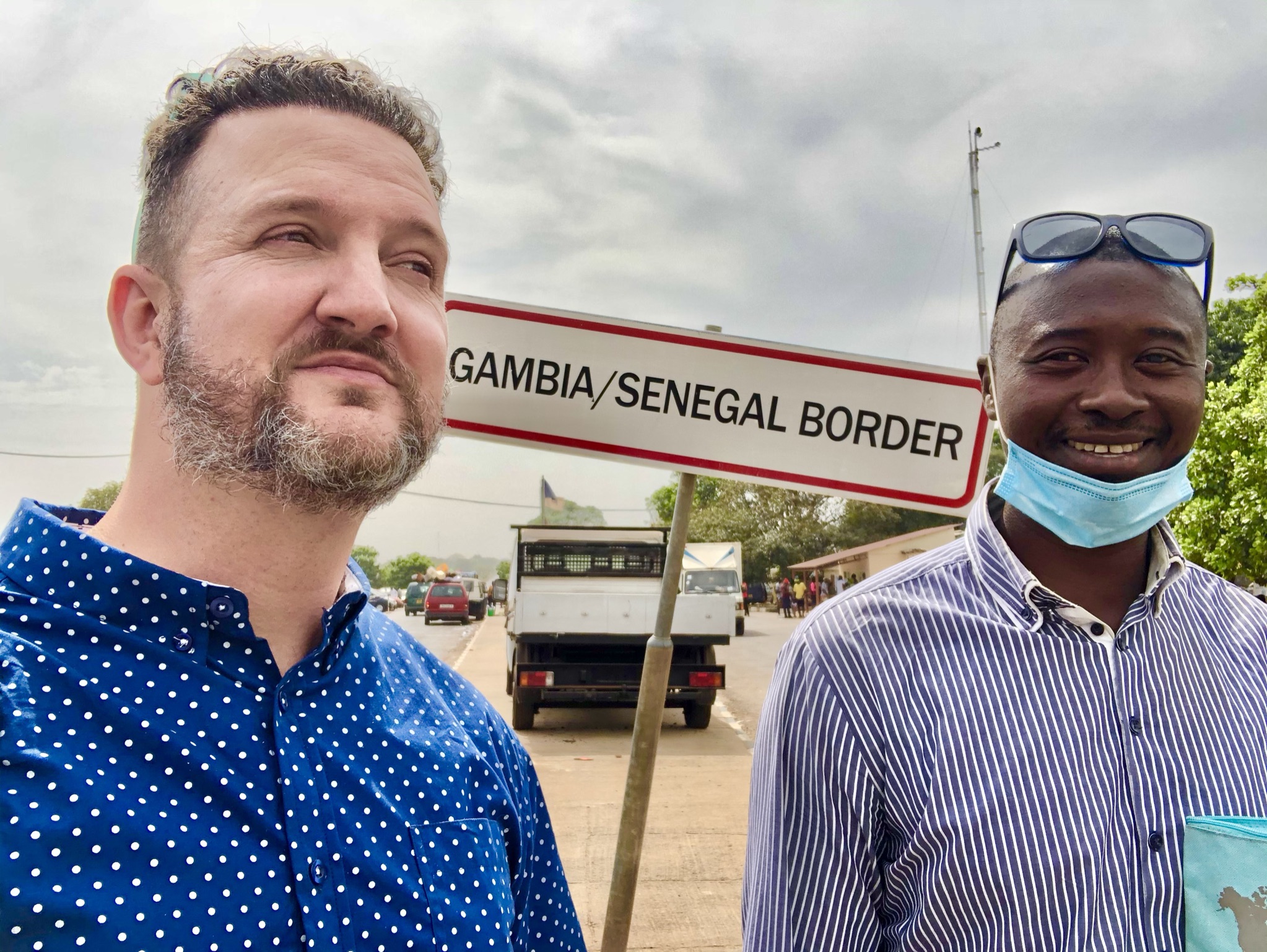
Over the Borderline(s)
The first border we passed was the Gambia–Senegal line. We stopped in the city of Ziguinchor (Senegal) for lunch at a really nice hotel-restaurant on the water called Kadiandoumagne. Then it was back on the road as we continued heading south for Bissau. It wasn’t long before we hit the Senegal-Bissau border. The trip was going so smoothly! Until now.
We were stamped out of Senegal with ease. We drove a kilometer or so until we reached the Guinea Bissau border checkpoint. Now the real fun would begin.
Oh, how I wish I could’ve documented the experiences here with video or at least one photo. But that’s one place you must never take pictures: military/police checkpoints and borders. There’s no faster way to end up in jail, or worse! So I had to just soak everything up with my eyes. It was incredibly weird but fun.
The border “gate” was merely a rope, strung across the road and fastened onto a wooden post. A international border: a rope!!! We had to stop our car before said rope and enter a building to get stamped in. Well, it was more of a shack. We passed chickens and pigs on the way in. I was excited to see my first few signs in Portuguese: alfândega (customs) and rodoviário (highway). It was cool to see French suddenly turn to Portuguese within just a few feet. I let Kemo do all the talking, as we were sent to three consecutive “offices.” Each time Kemo paid a “fee” and got another stamp. By the third desk and payment, Kemo was laughing in defiance, questioning why he has to keep paying new fees. (He didn’t receive receipts for at least two of these payments). But it was all part of “the process.” When we were done with the three payments and “check-ins,” we were sent to a second building, where we had to make another payment. This one was possibly the most interesting, as I exchanged pleasantries in Portuguese with an officer outfitted in a beret, white t-shirt, camouflage pants and orange flip-flops. I was elated to finally hear that beautiful entry stamp go “ker-PLUNK” onto my passport. It was worth all the inconvenience and “entry fees.” I was officially in Guinea Bissau! I’d made it into one of the least-visited countries in the world! Yes, I was here, but it would be a long, long road into the city. Actually, did I say “road?” The “road” would actually disappear pretty quickly.
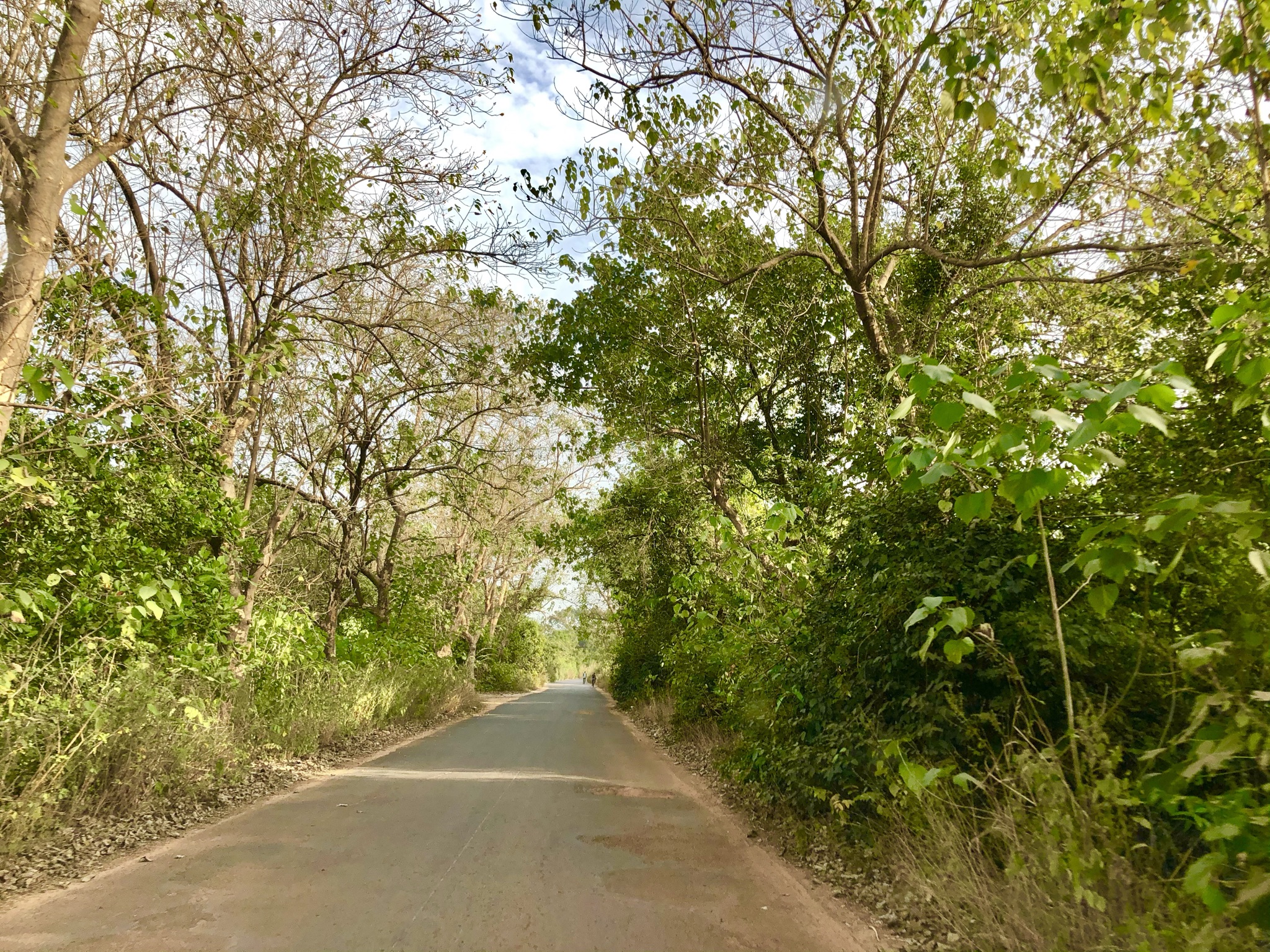
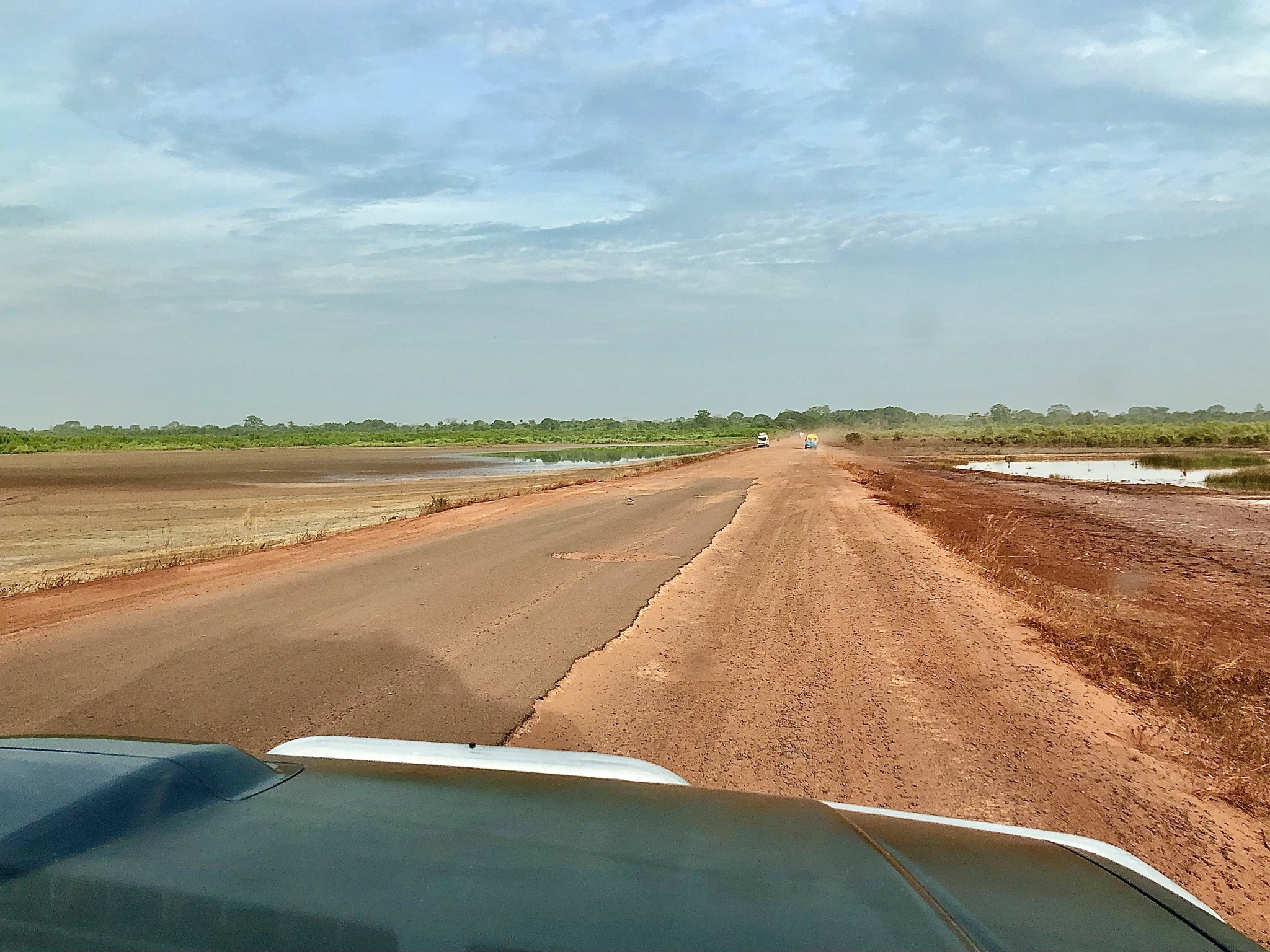
Rocky Road
It’s hard to describe just how bad the road got, so quickly. I should’ve gotten out and documented the scene, but I just wanted to get there. It was much worse than just a “dirt road.” I ain’t mad at a dirt road – dirt roads themselves are fine. This was worse. At times it was pavement, but with giant craters all over the place. Kemo did his best to dodge the giant pits, bobbing and weaving to avoid slamming down into a hole and popping a tire. Other times the payment completely disappeared, but the dirt roads were anything but flat. I’d get excited when we’d reach a smooth piece of pavement, but it would only last for about a minute before the giant divots and pits returned. I enjoyed the ride for about the first six or seven hours, but after about eight hours in I was so sore from sitting in that car. The journey seemed never-ending.
Kemo had to cough up more “fees” as we rolled through every town. First São Domingos, then Ingore, then Bula. Each town had a checkpoint and we were required to pay just to drive through. Pretty insane, but what are you gonna do? It was a little after 9:30PM, when we finally made it to downtown Bissau, with just awful roads almost all the way until the end. They never got better, even in town. I don’t think I’ve ever been so glad to finish a journey in my life. I just can’t imagine what the trip would’ve been like using public transportation: jammed inside an old van like sardines with 15 other people, no AC – we saw many of those vans on the side of the road with busted tires. I guess considering, I had it really good!
Kemo and I celebrated with a pizza dinner than night at the hotel. Then it was light’s out. A bed never felt so good!
Dia Um (Day One)
I had a great sleep, waking around 9:30AM to say goodbye to Kemo. Then, it was off to explore on my own. My first order of business was to stop by the Guinea embassy (Note: Just plain “Guinea” is a different country than Guinea Bissau). I was firmly rejected for a visa, so that was kind of a bummer. I stopped into a travel agency a few doors down for assistance and a nice young man offered to return to the embassy with me and try and help – I was having a hard time understanding the officer. The second attempt proved futile, although it was a testament to how friendly Guinea-Bissauans are. With this ask, I’d failed at an attempt to get a visa for Guinea at four embassies. This wasn’t looking good. But we’ll deal with Guinea later.
I spent the next couple of hours wandering Bissau Velho, the crumbling old town that looks part Spaghetti Western, part Mad Max. Most of the dirt roads were empty and the shops and hotels shuttered. I wasn’t sure if this was because of the holiday, Corona virus, or both. Either way, the little barrio was super cool. I enjoyed reading all the Portuguese signs and the few people roaming about were all friendly. Bissau Cathedral, the National Heroes Plaza and the Amílcar Lopes Cabral monument were the handful of other things I took in this first afternoon.
I also had my first grocery store visit. There are no big super markets in Bissau – at least I didn’t see any. Mostly small shacks and tiny bodegas. Ponto Fresco would be the biggest, cleanest and most organized I’d see so far. I was amazed that every item I looked at was in import. Maybe they had some local meat or milk, but every packaged item I picked up was imported. I introduced myself to the owner, who was Portuguese. I asked how he got all the items and he explained they all came via shipping container, on a boat. This all fascinated me and I have questions. In fact, it will be in this blog, where I introduce a brand new feature to the website. I’m often filled with wonder on some of the quirky idiosyncrasies I come across while traveling. So many bizarre and random accounts and experiences leave me with questions – hence, the name of our new feature, I Have Questions. Here we go!
I Have Questions: Why doesn’t a country like Guinea Bissau make any of their food items themselves? Even the cheese was imported. Why are there no bottling plants here? Is it possible that a whole country has almost no food and beverage manufacturing industry? This will be my first of many questions I’d have. These are things I wonder about.
Also to note, I did not see one foreign franchised store or restaurant here. You can usually count on at least a KFC or Subway. I remember being shocked to see a Krispy Kreme in Nigeria. And I even spotted a PinkBerry frozen yogurt store on this last trip to Liberia. But in Bissau? Not one foreign franchise. Why? USA Today ranks Guinea Bissau as the 13th poorest nation in the world, I’m sure this has a lot (if not everything) to do with it.
Did I mention it was Christmas Eve?
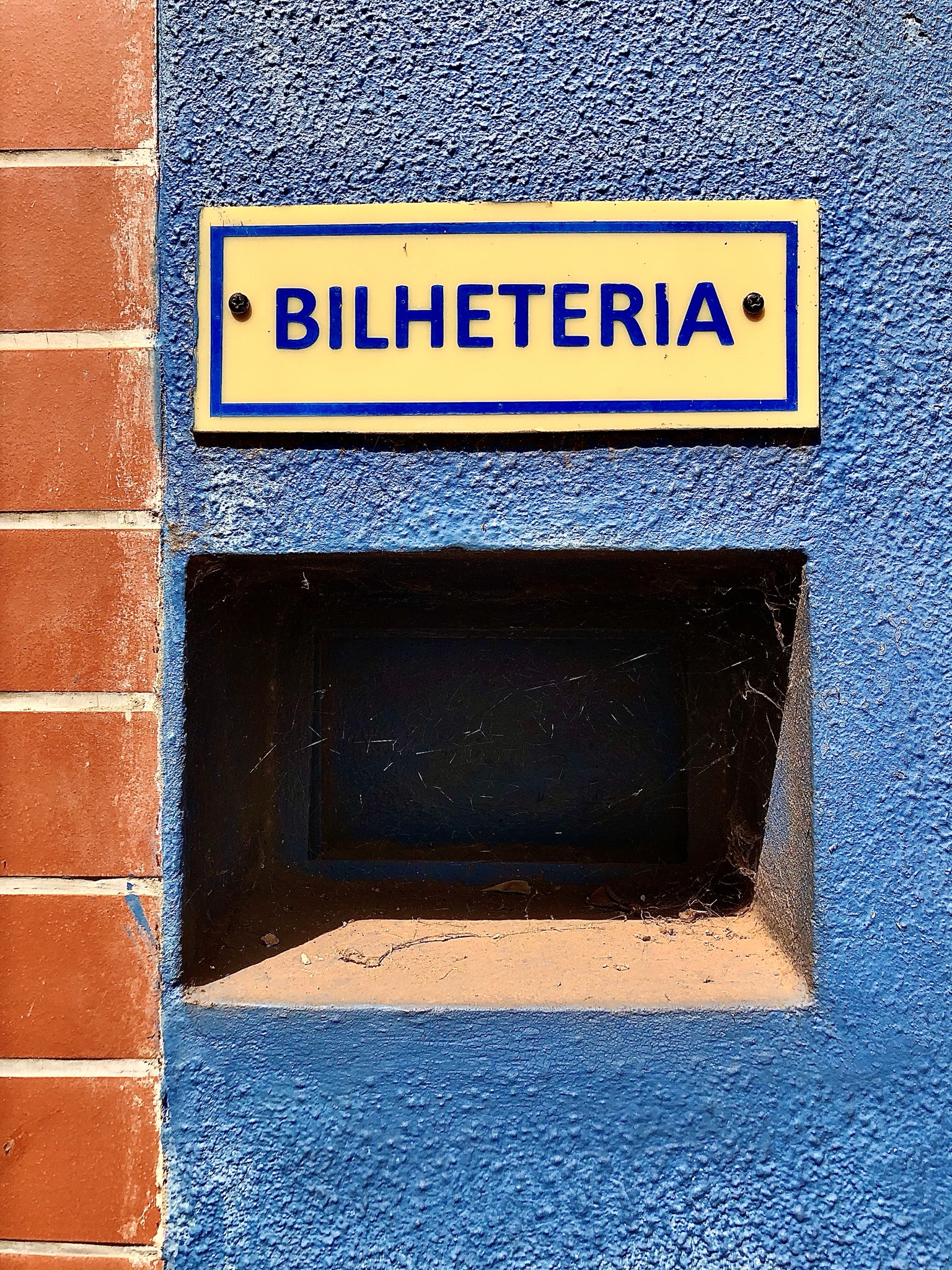
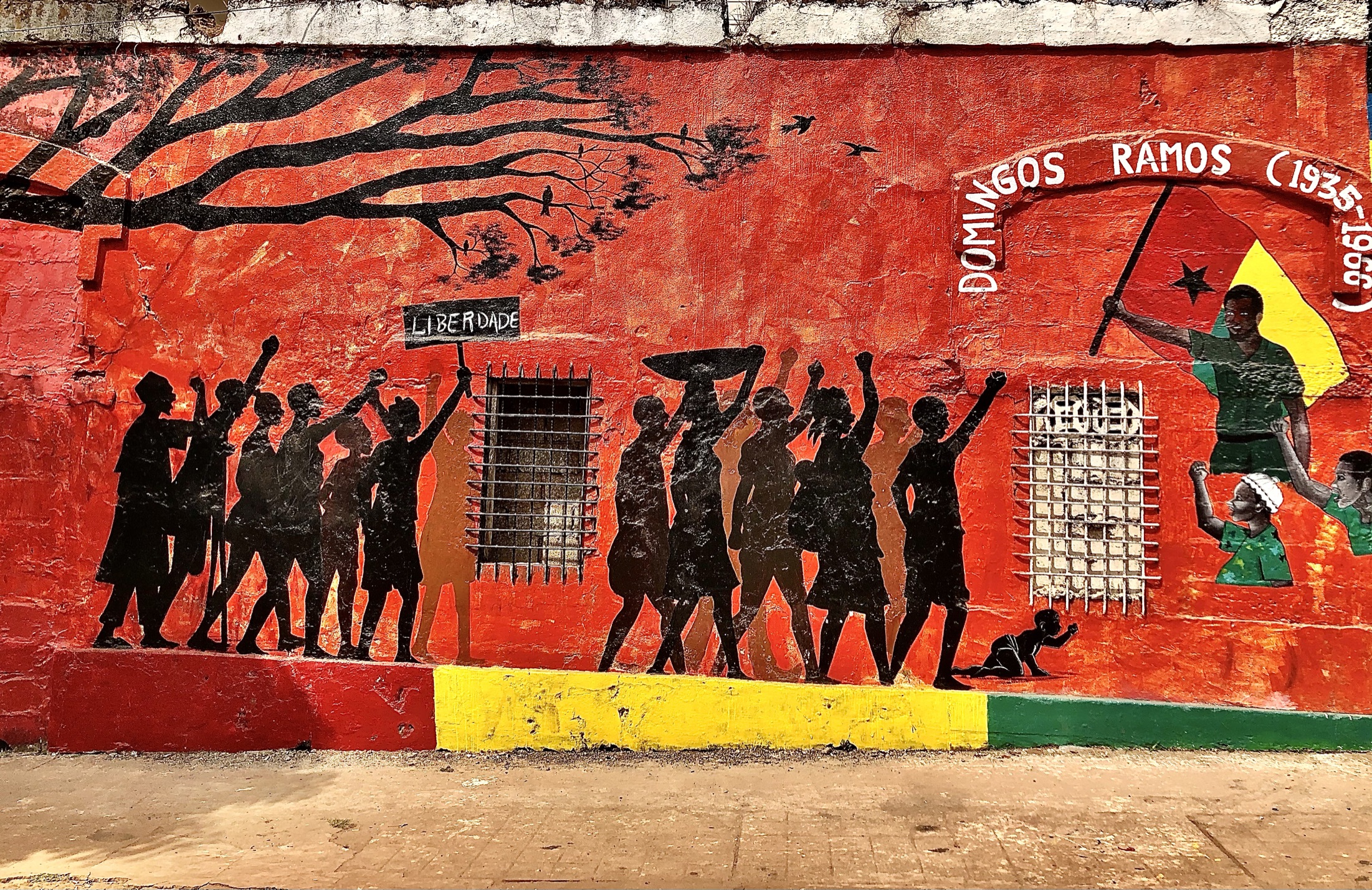
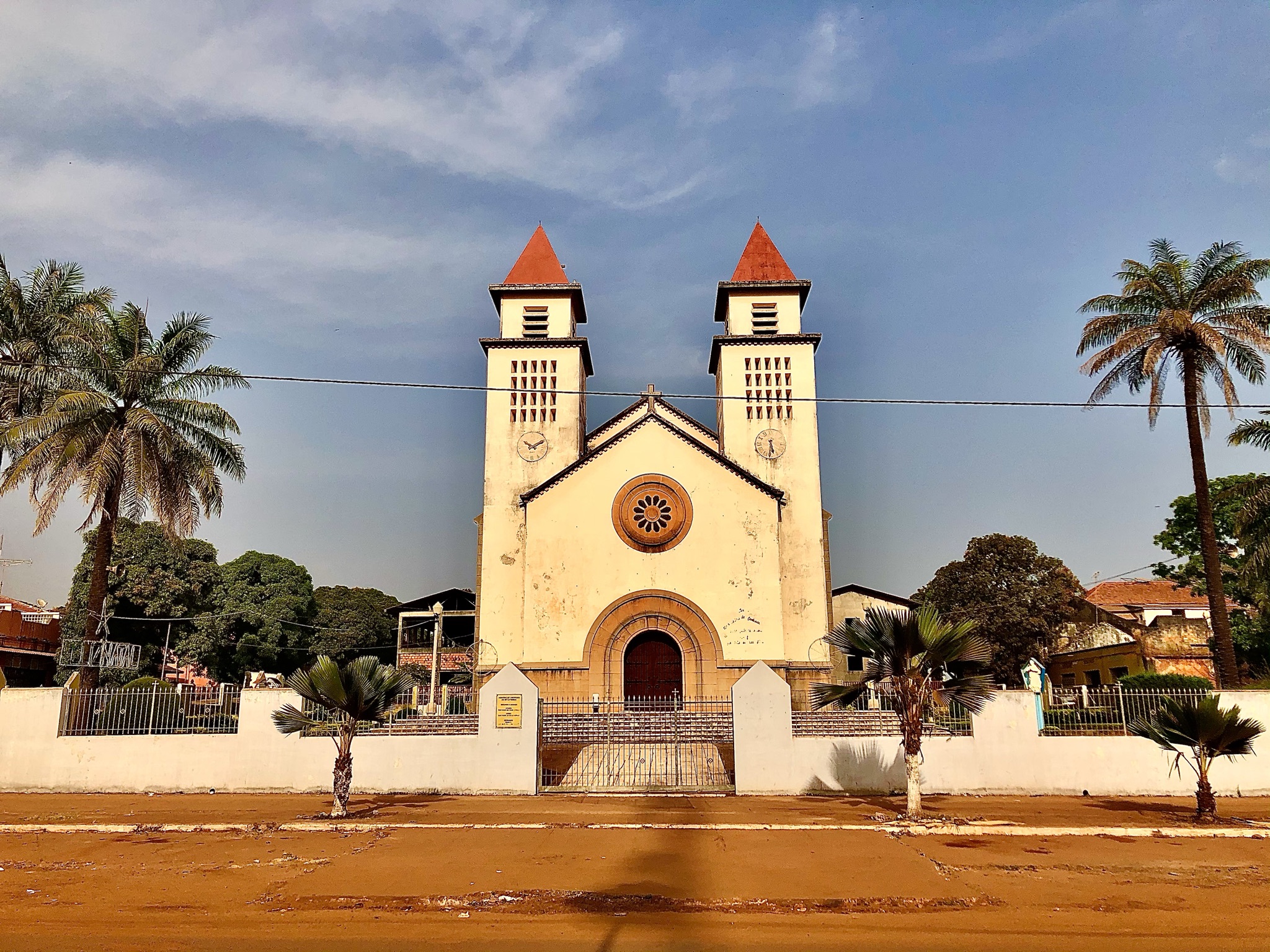
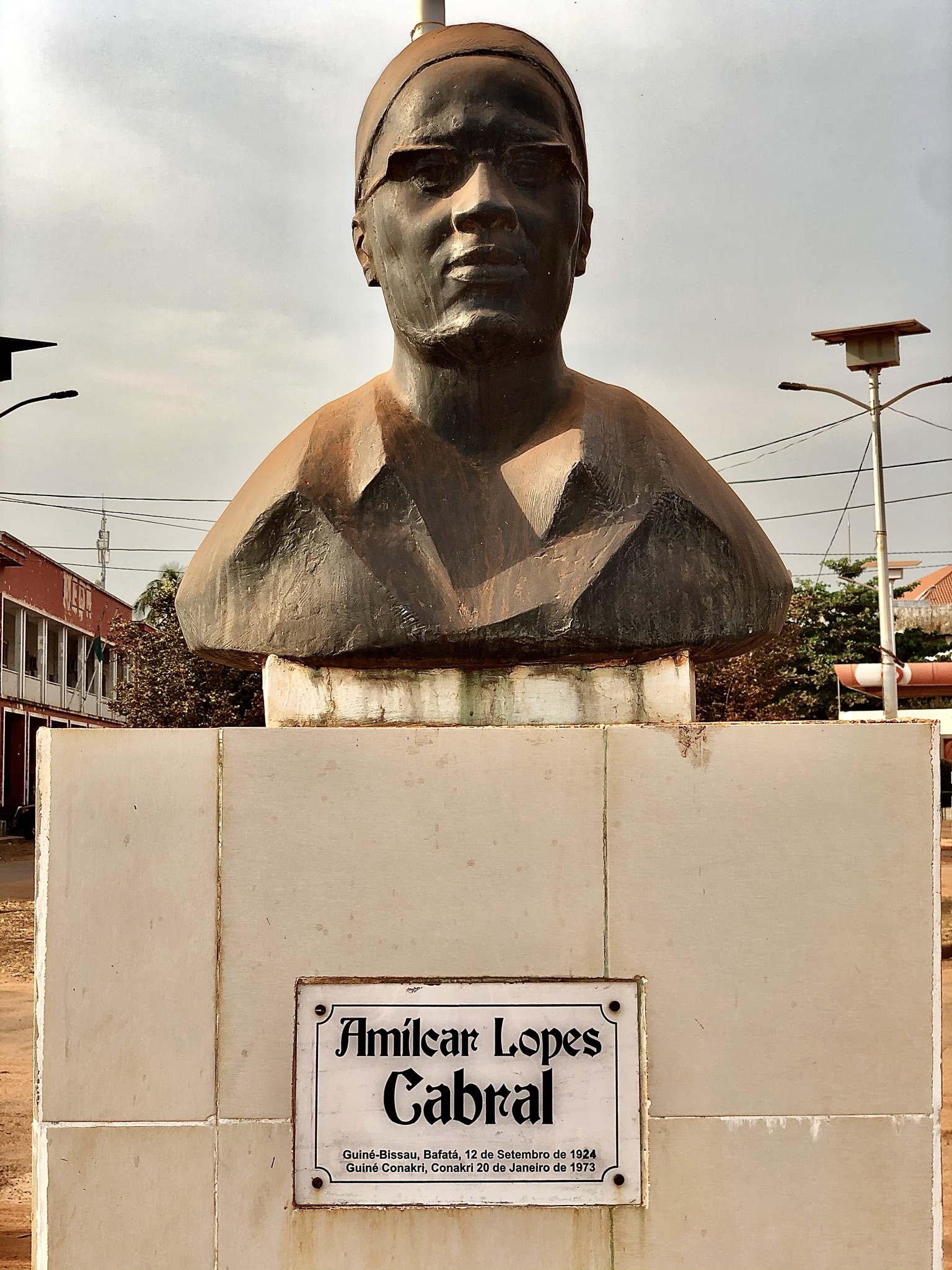
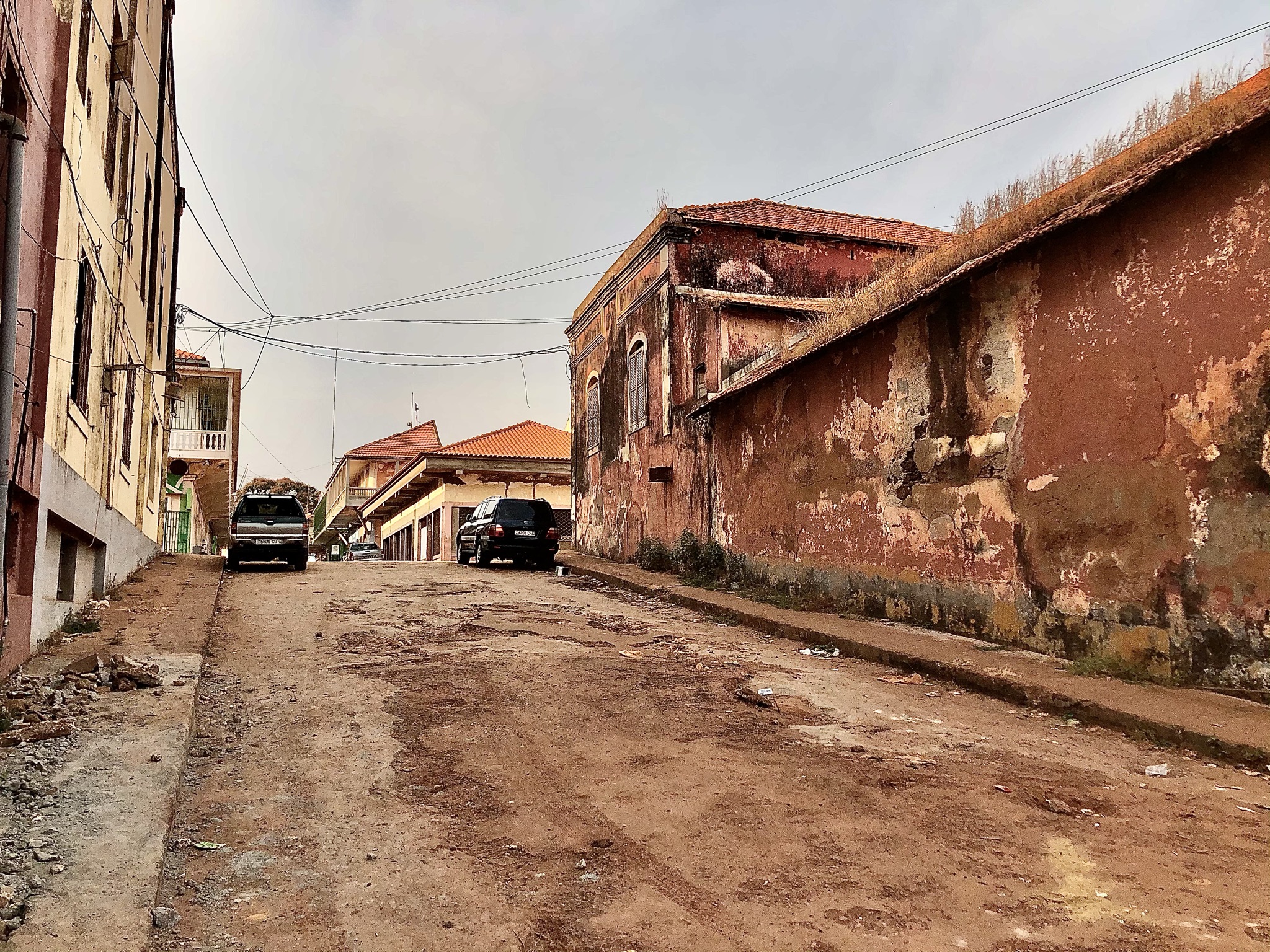
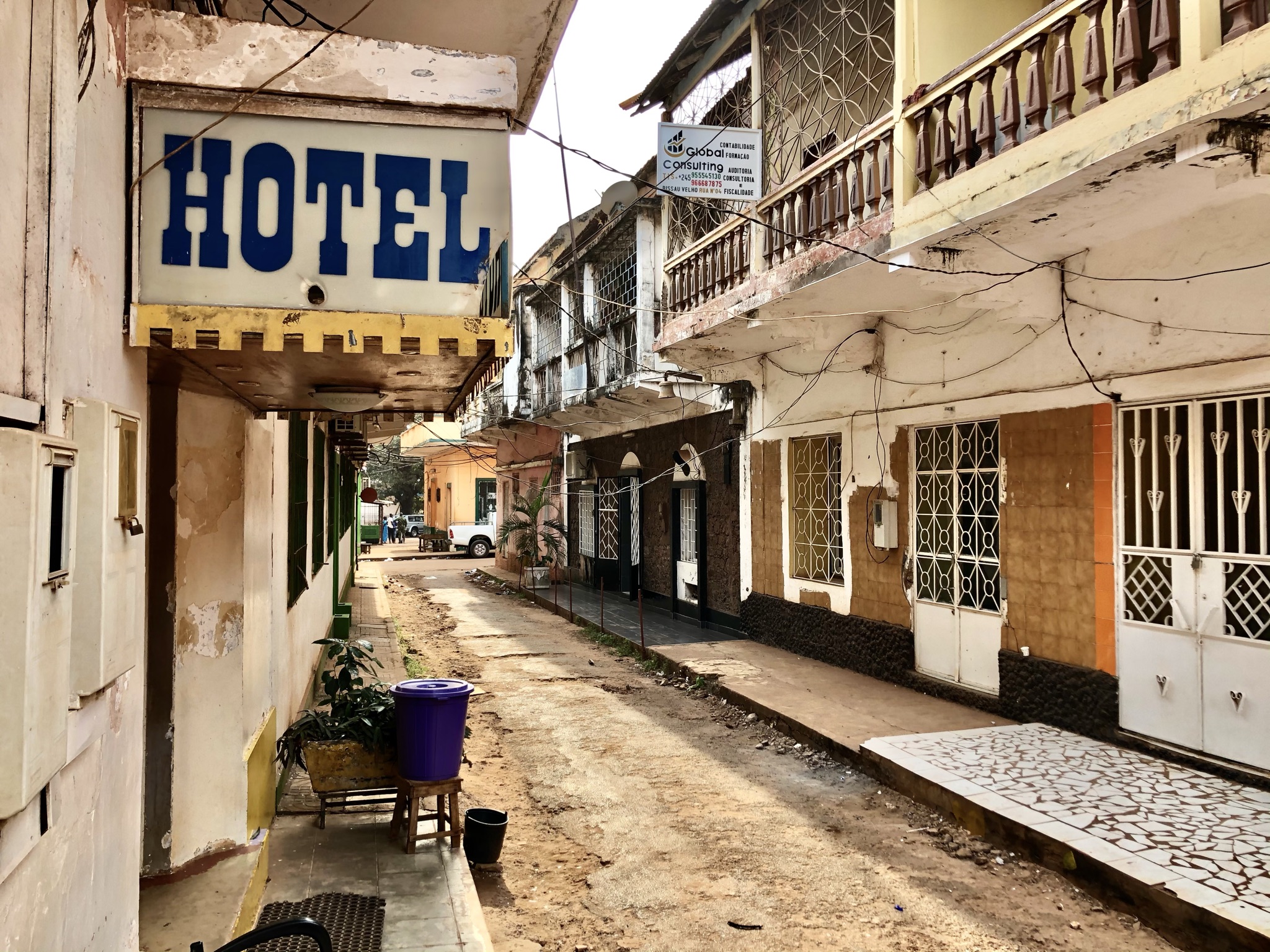
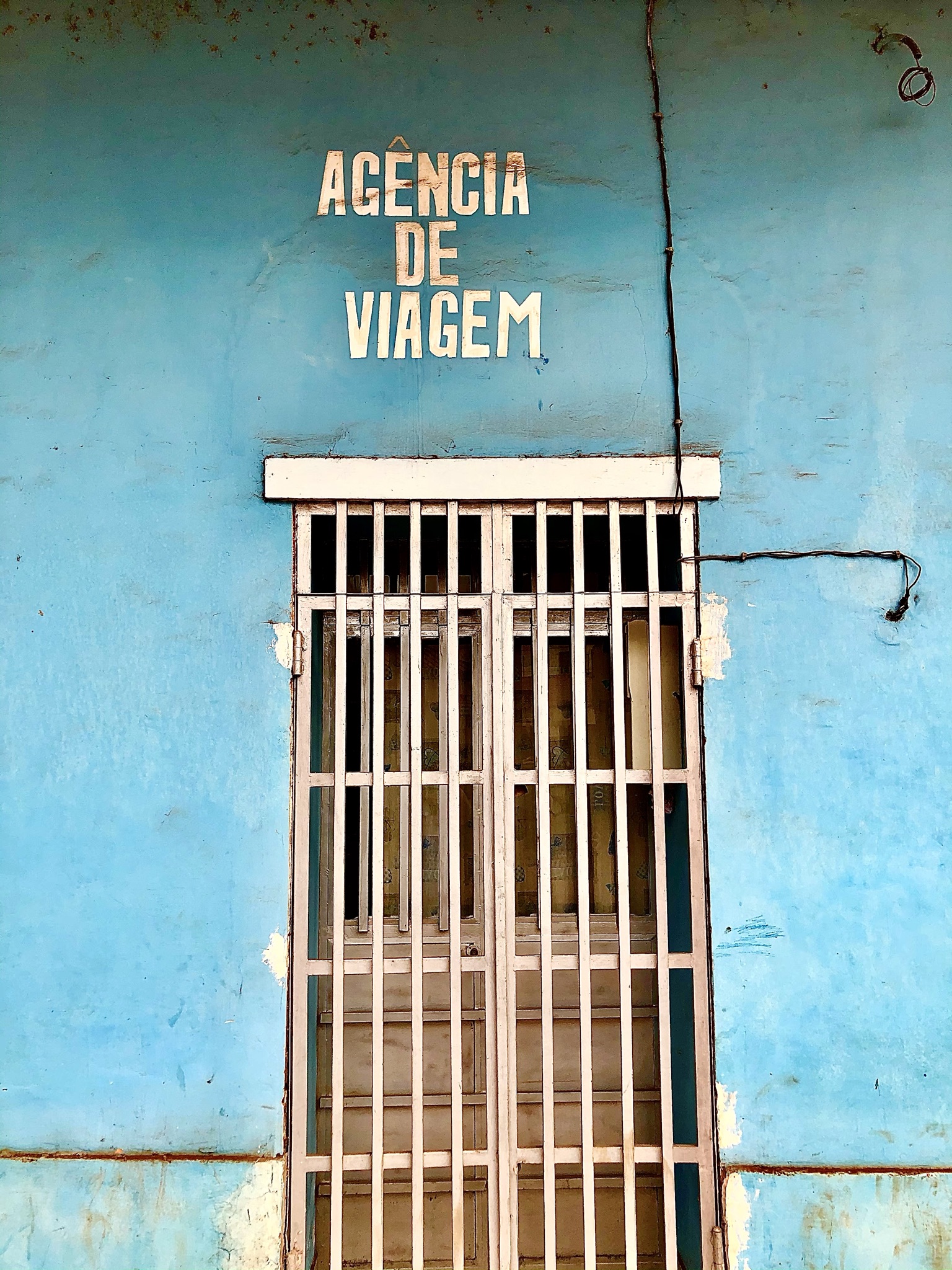
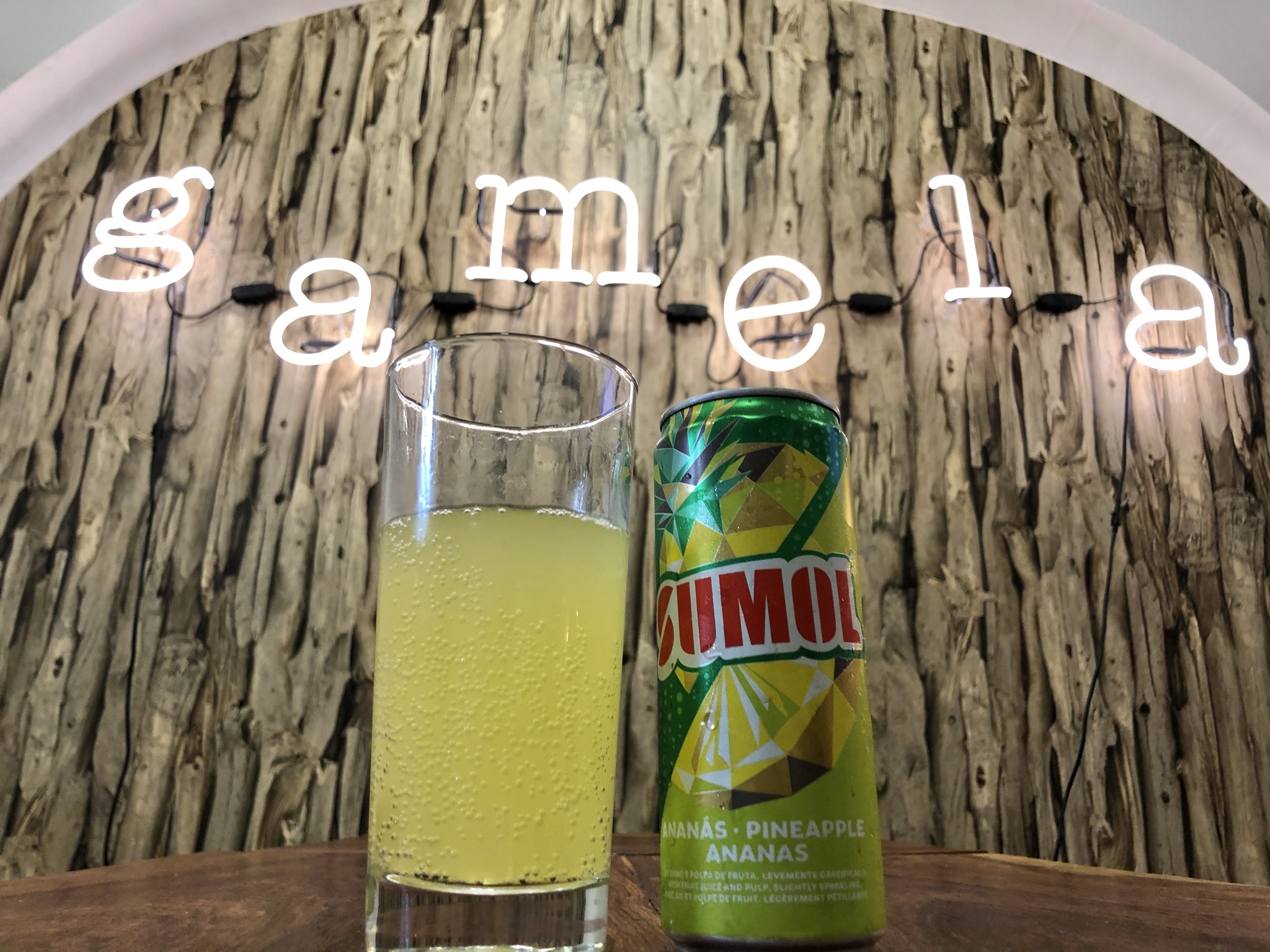
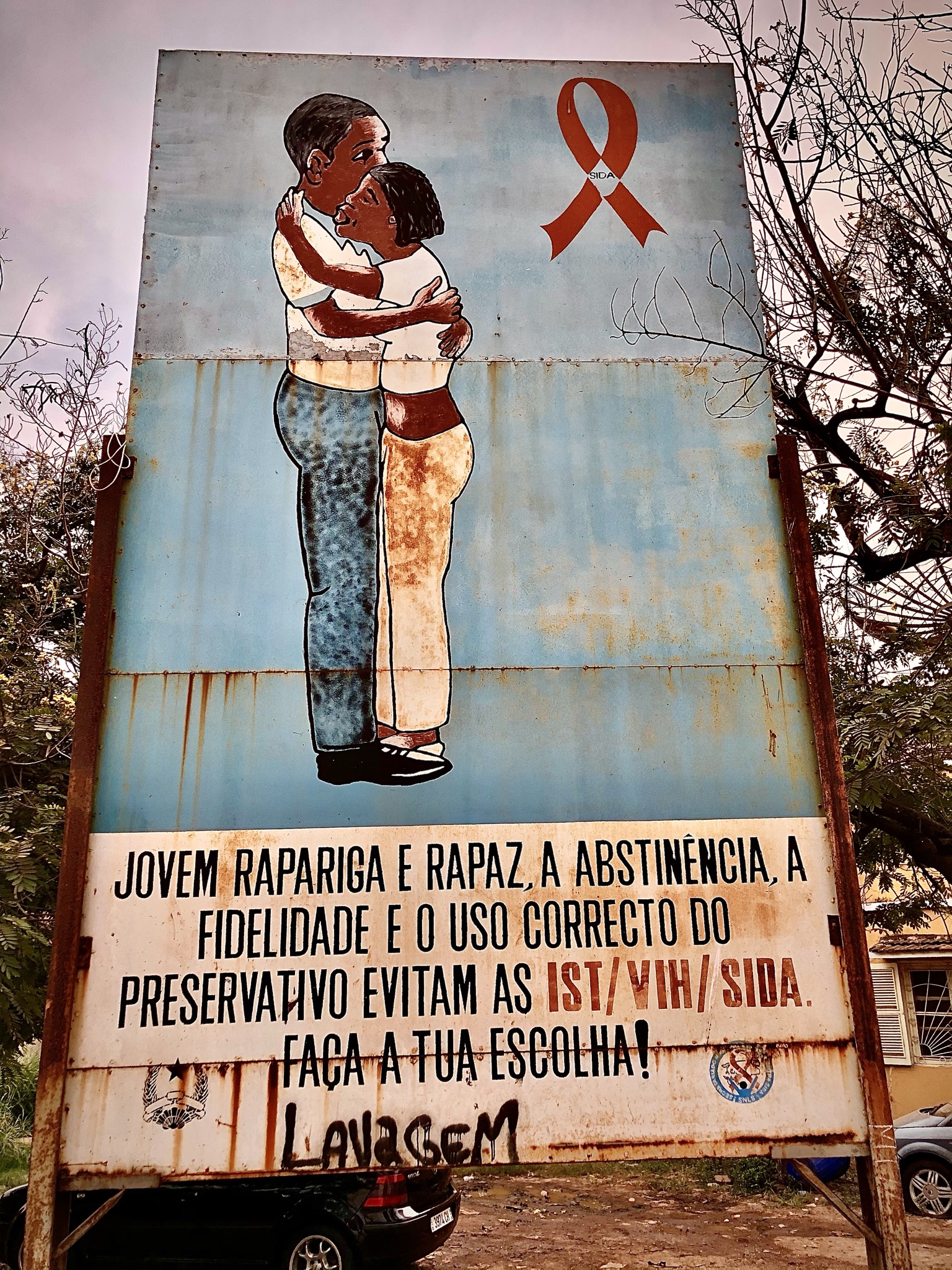
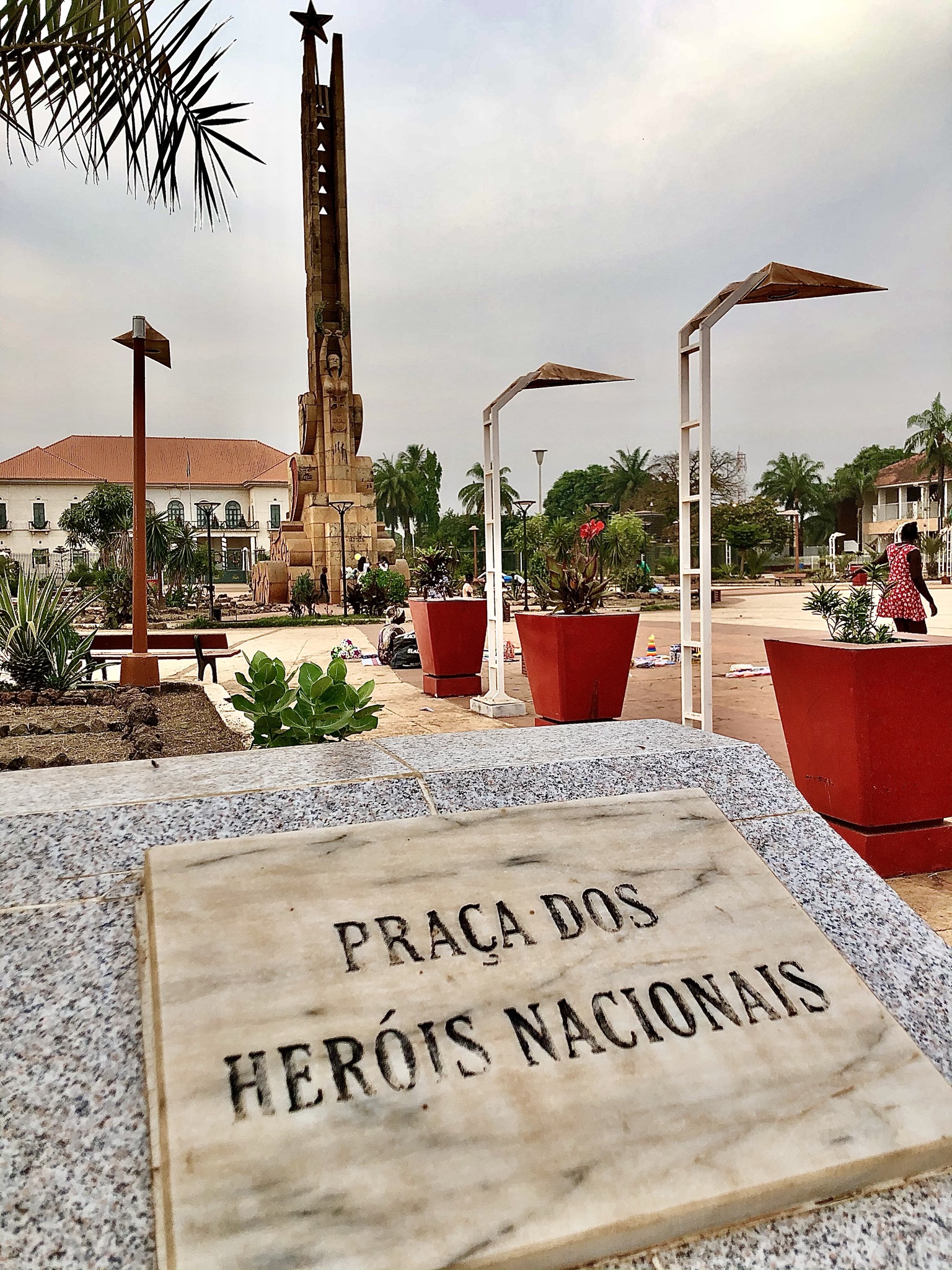
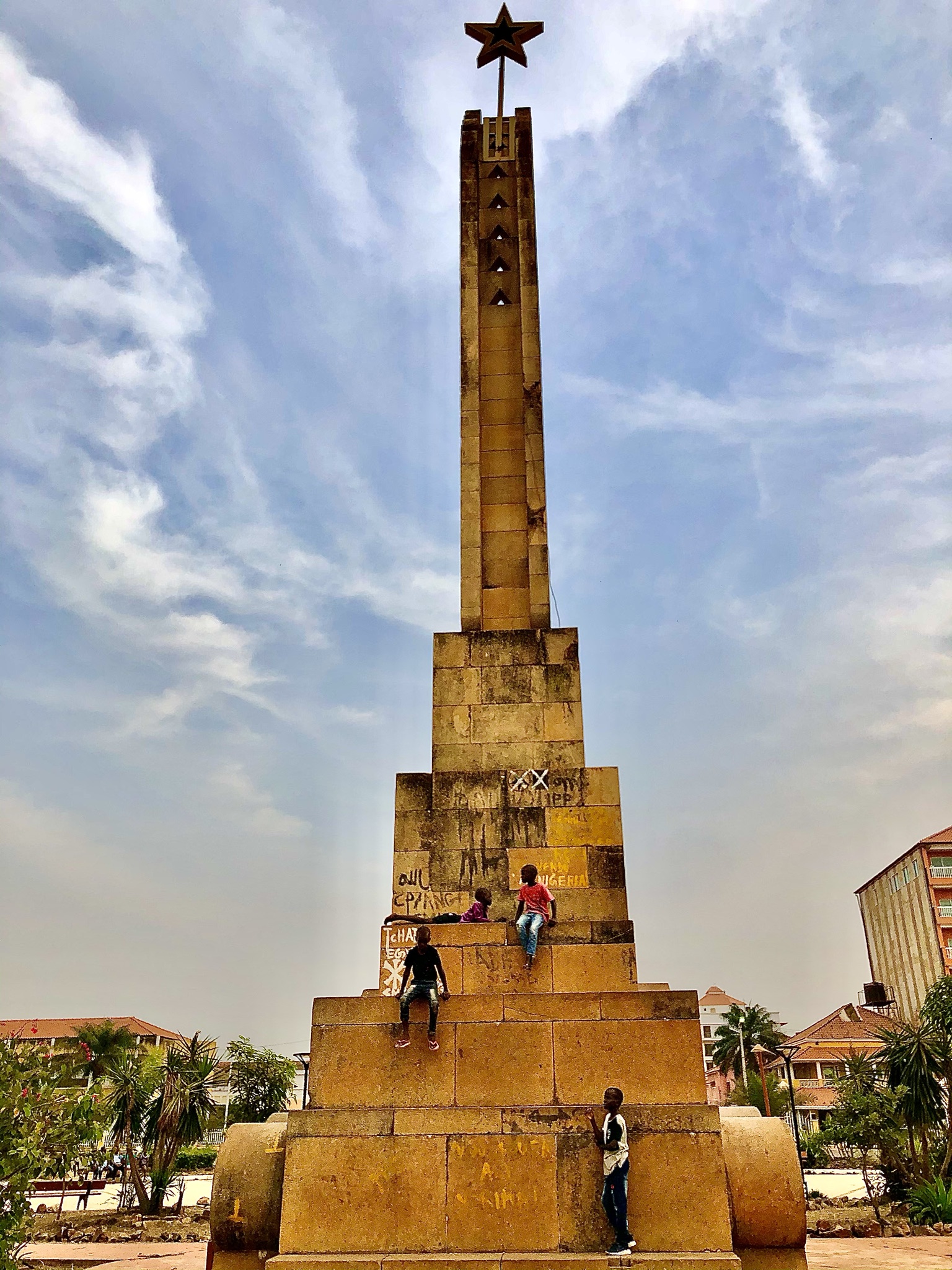
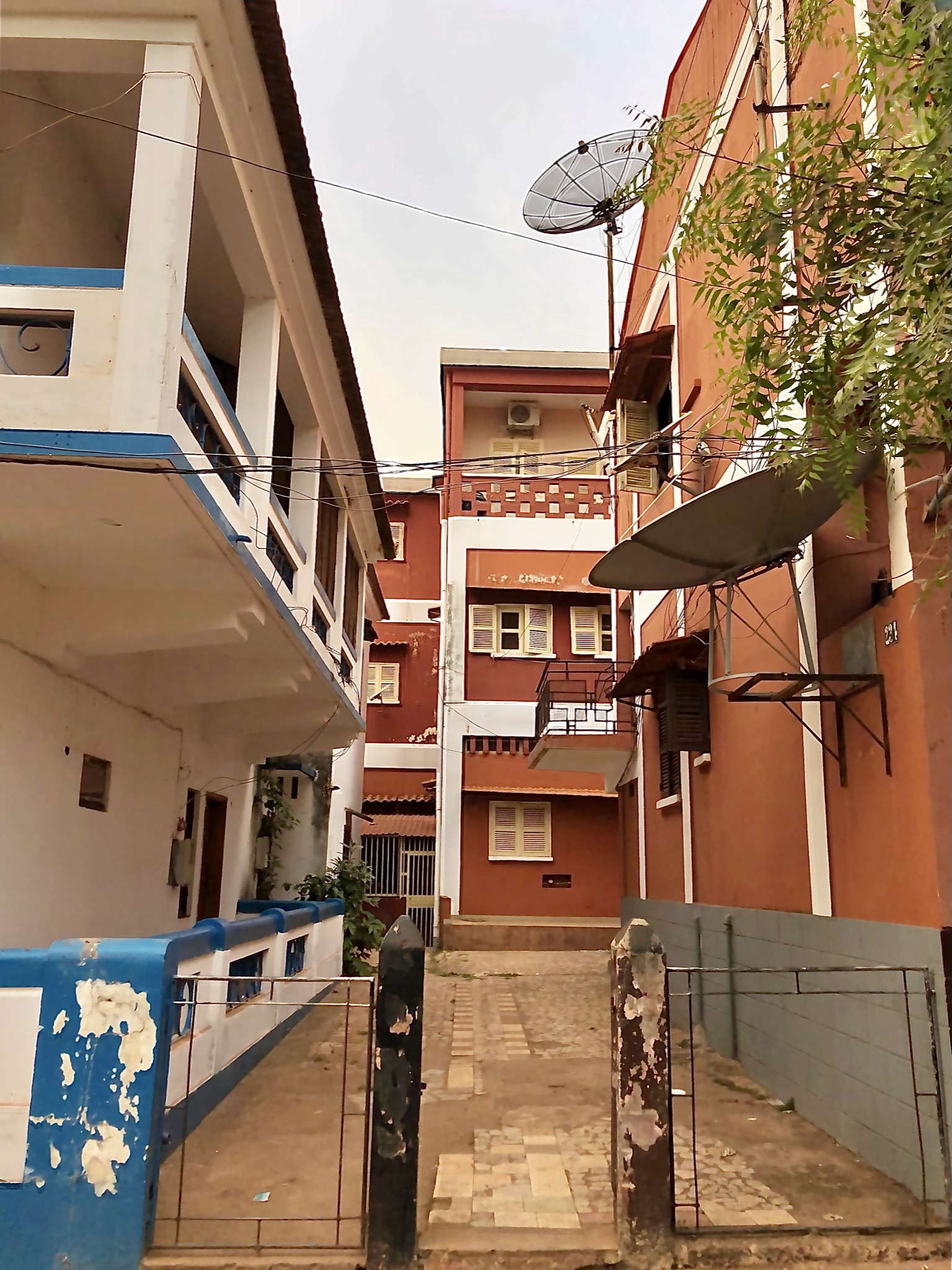
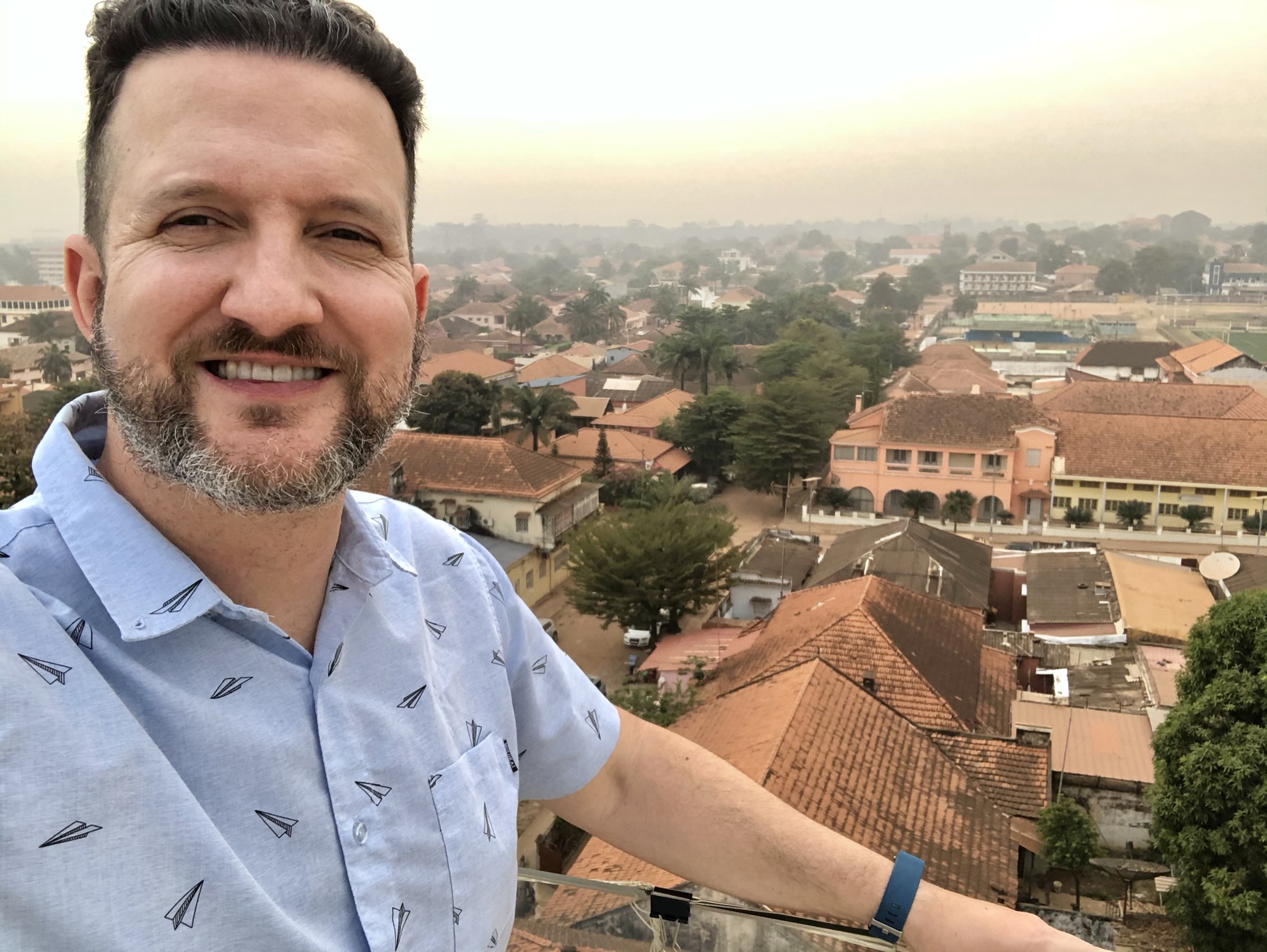
Dia Dois (Day Two)
It was my second full day in Bissau with nothing to do besides explore. I decided to take a walk down to the port and try my luck at visiting Ilha do Rei (King’s Island). On the way, I passed more cool, old buildings lining the red dirt roads of Bissau. I was most excited to see the old International Bank. I couldn’t find anything online about this building, except this excerpt from the Only By Land travel blog:
Imagine the importance of the International Bank during colonial times. I’m sure it was used for profits raised by slavery and other trades of this era. Nowadays, it’s an example of colonial architecture. However, if you’re looking for a bank or ATM to withdraw money try the nearby ECO Bank.
I Have Questions: When did the bank close? What did they do with all the money? Why don’t they use the building for a new bank? Oh, how I’d love a peek inside to see the old vaults!
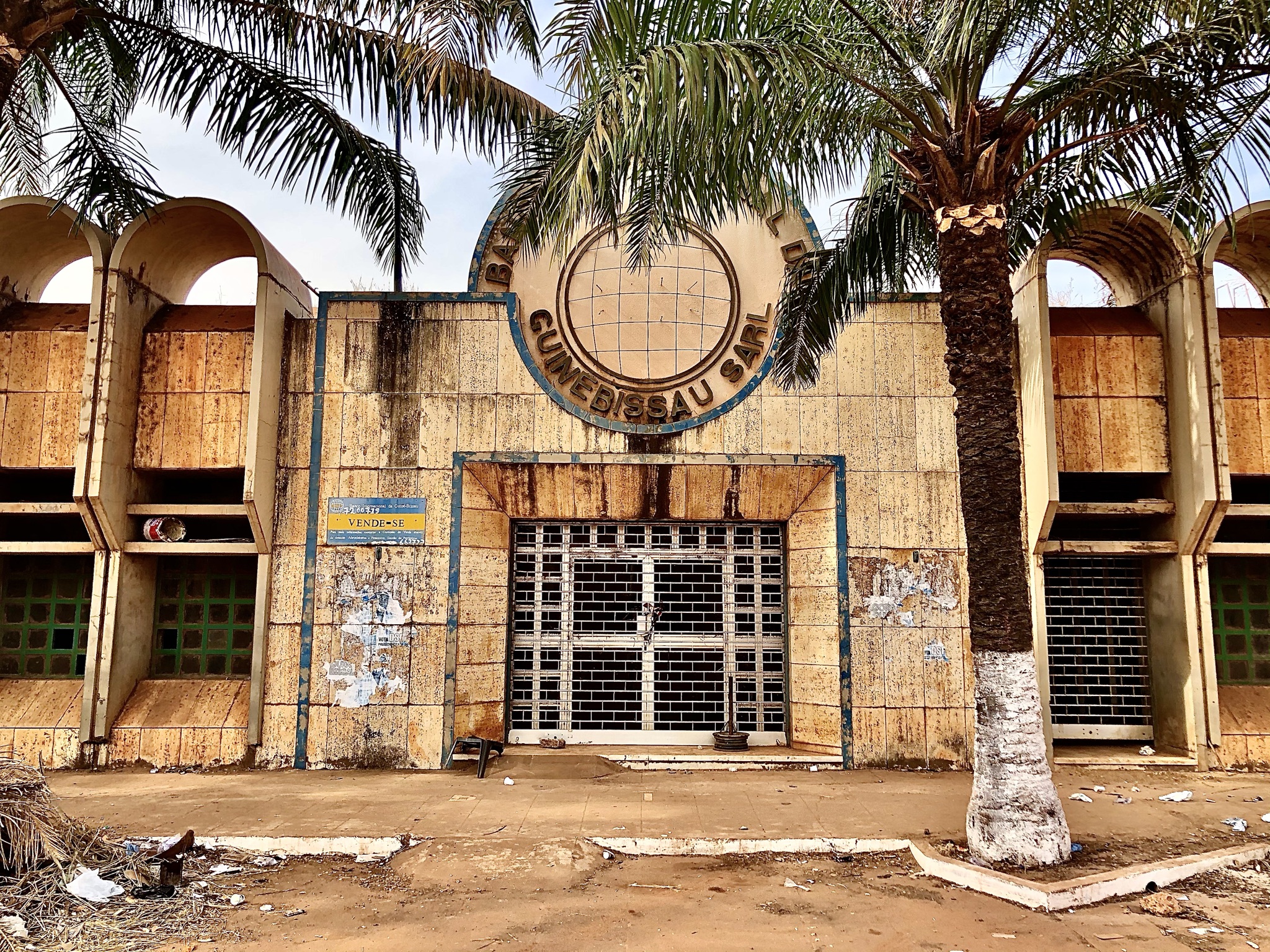
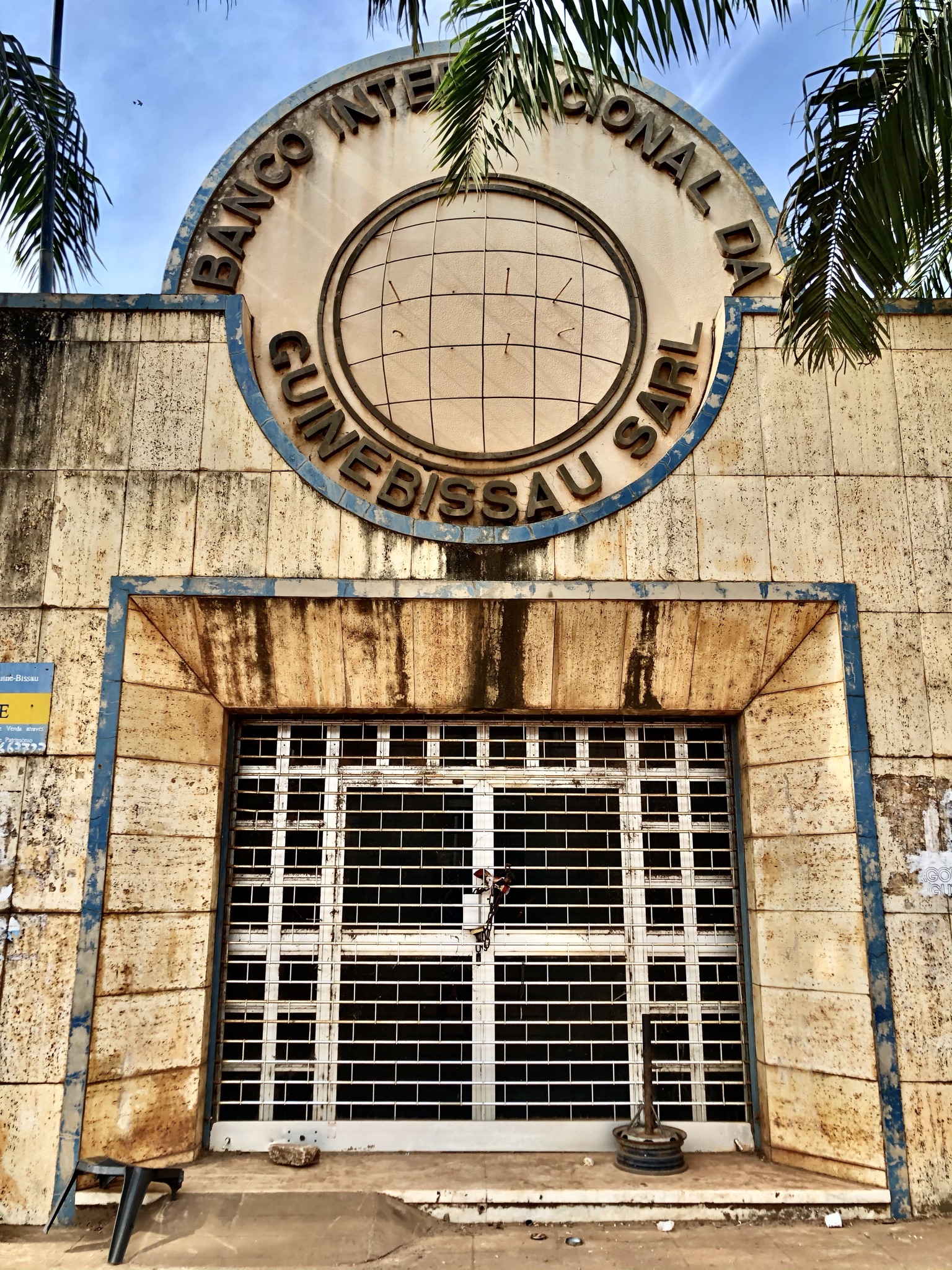
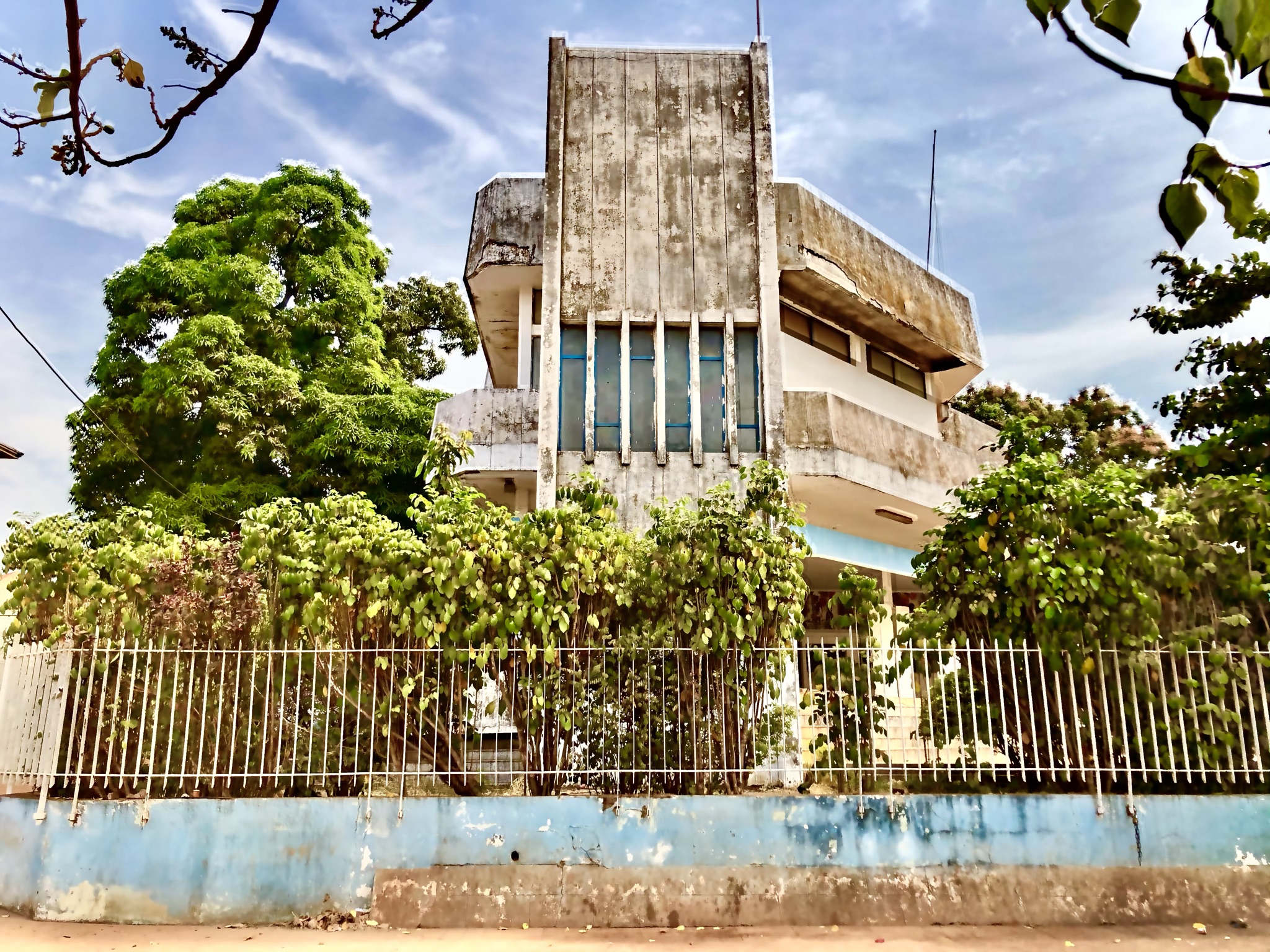
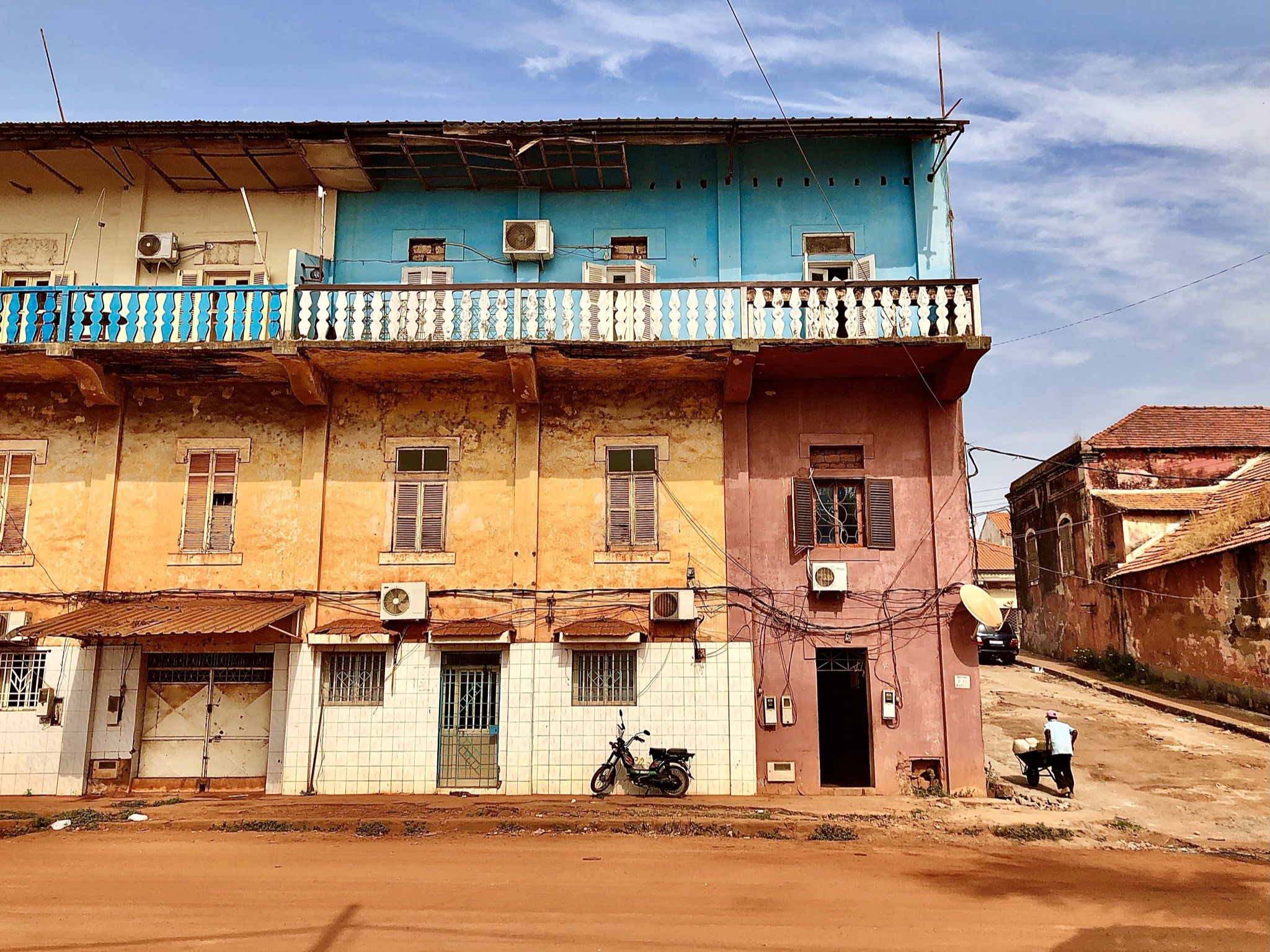
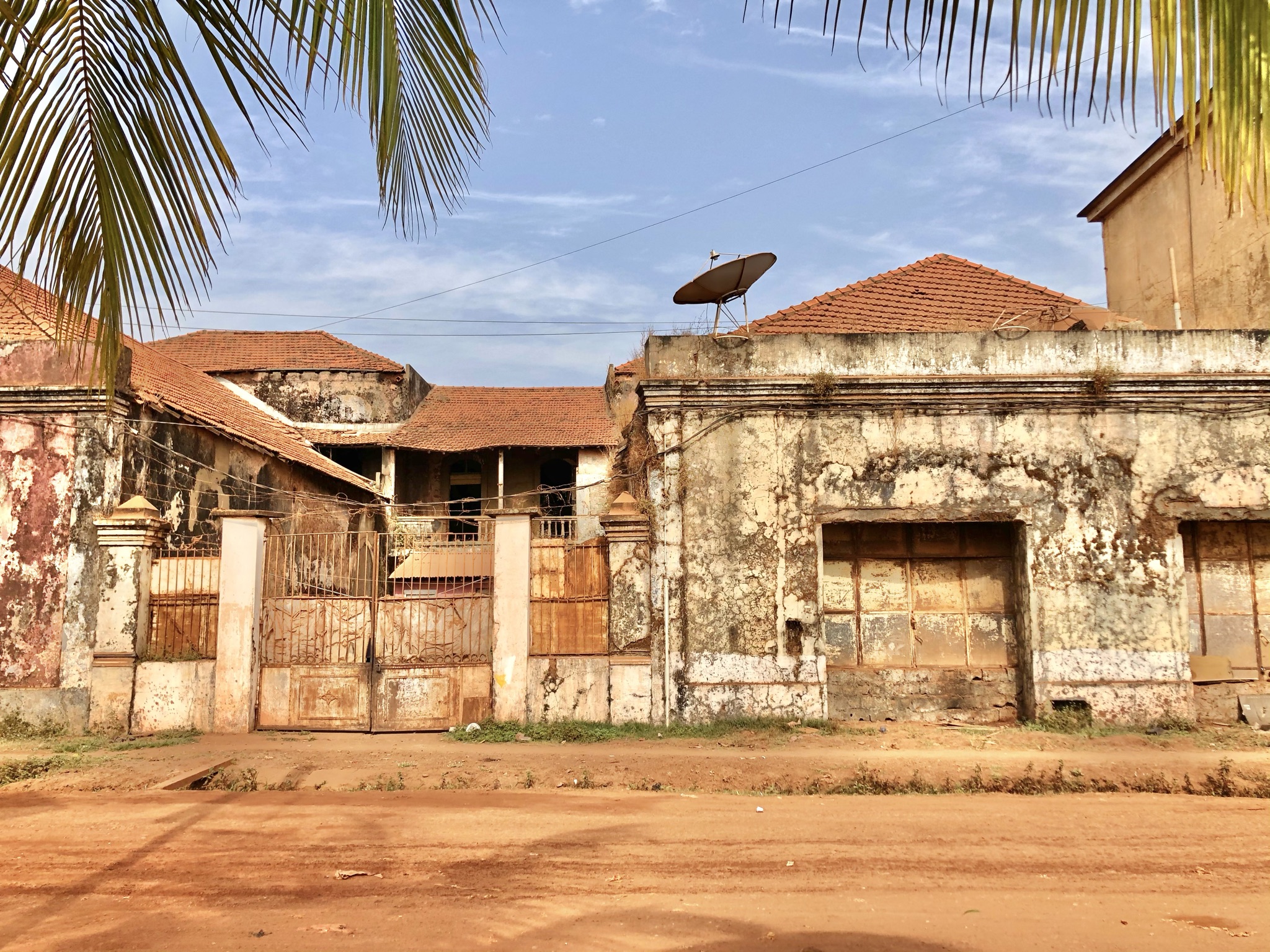
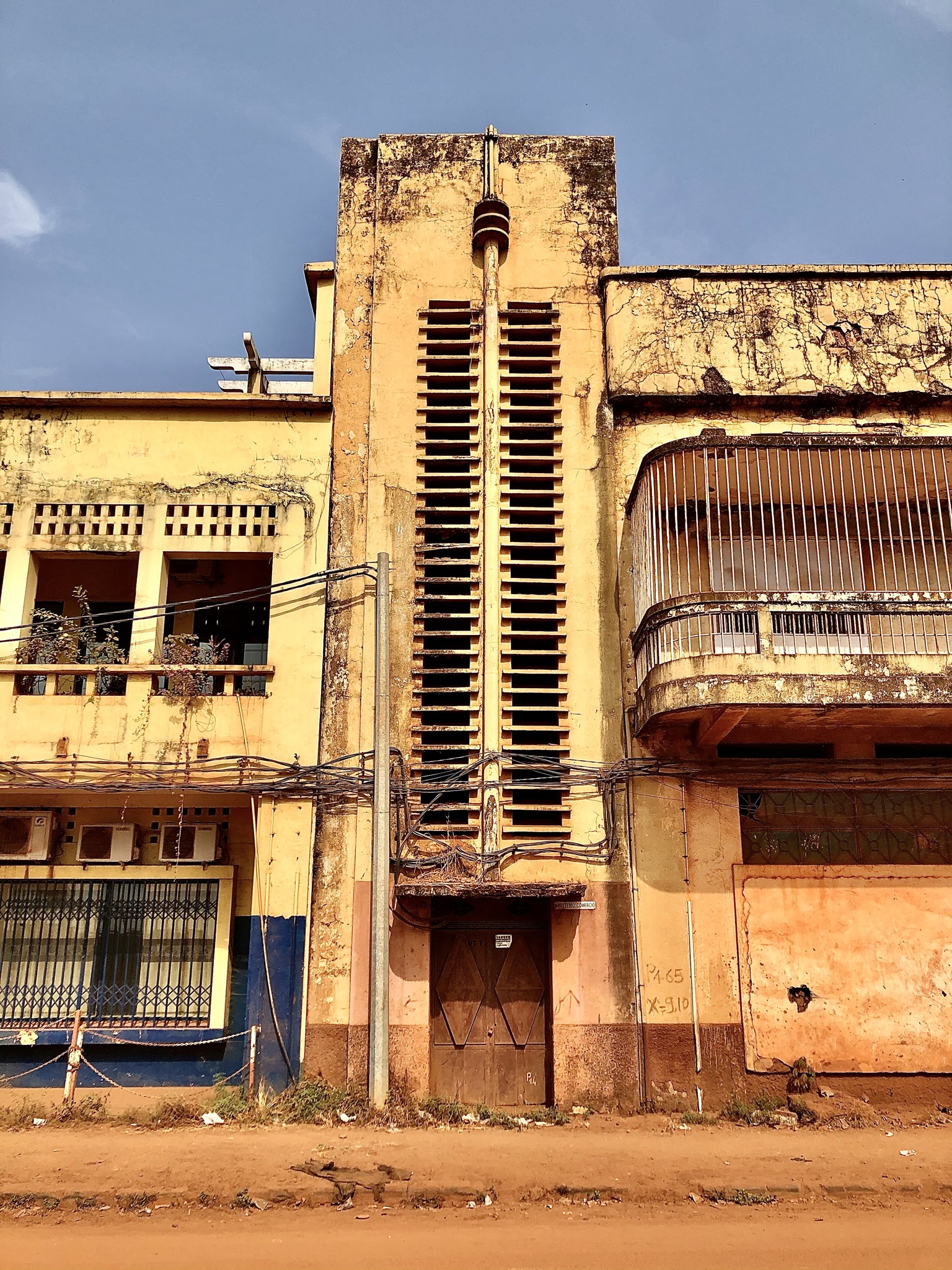
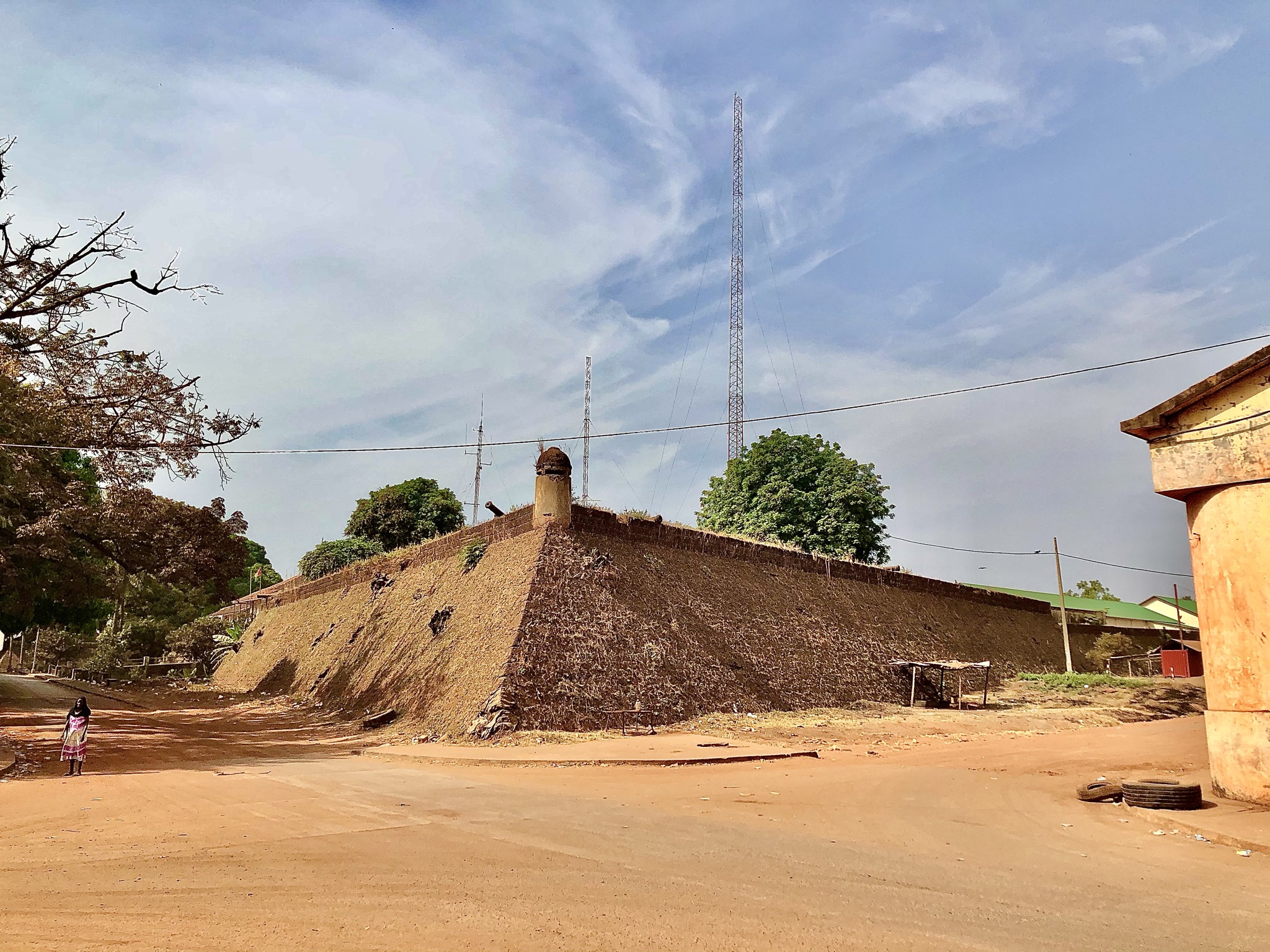
Fantasy Island
With all the time I had in Bissau, I really wanted to–and should have–visited the Bijagos Islands, but because of the Corona testing schedule, I needed to stay in the city. And though I wouldn’t get to Bijagos this time, my GPS showed a small island right across from city port called Ilha Do Rei, complete with a ferry line. How could I not attempt a trip there?!
I arrived at the port around 11. “Port” is an exaggeration. Three policemen let me through the gate as I walked down a dusty path past vendors in wooden shacks to reach the water. There wasn’t really a “dock,” per se – more of just a rocky decline down to the water where I saw a couple pirogues bobbing up and down in the water, a small wooden canoe and even a rusty shipwreck. I stopped and surveyed the scene for seven or eight minutes. There didn’t seem to be much going on in the way of transporting anyone back and forth to the island that lay just a couple thousand feet away. There certainly wasn’t any ticket window or even a sign. I continued to survey the scene in silence, finally asking one of the young men hanging around near the boats how I could get to the island. “Dez mil CFA,” or about $19.00, he replied. I’m sure that was ten times what a local would pay, but what are you gonna do? I said yes, and the young man took me to see the comandante located a few feet away to ask permission to take me. The commander said yes, so we were off, as I was now left wondering, was I entering a military property?
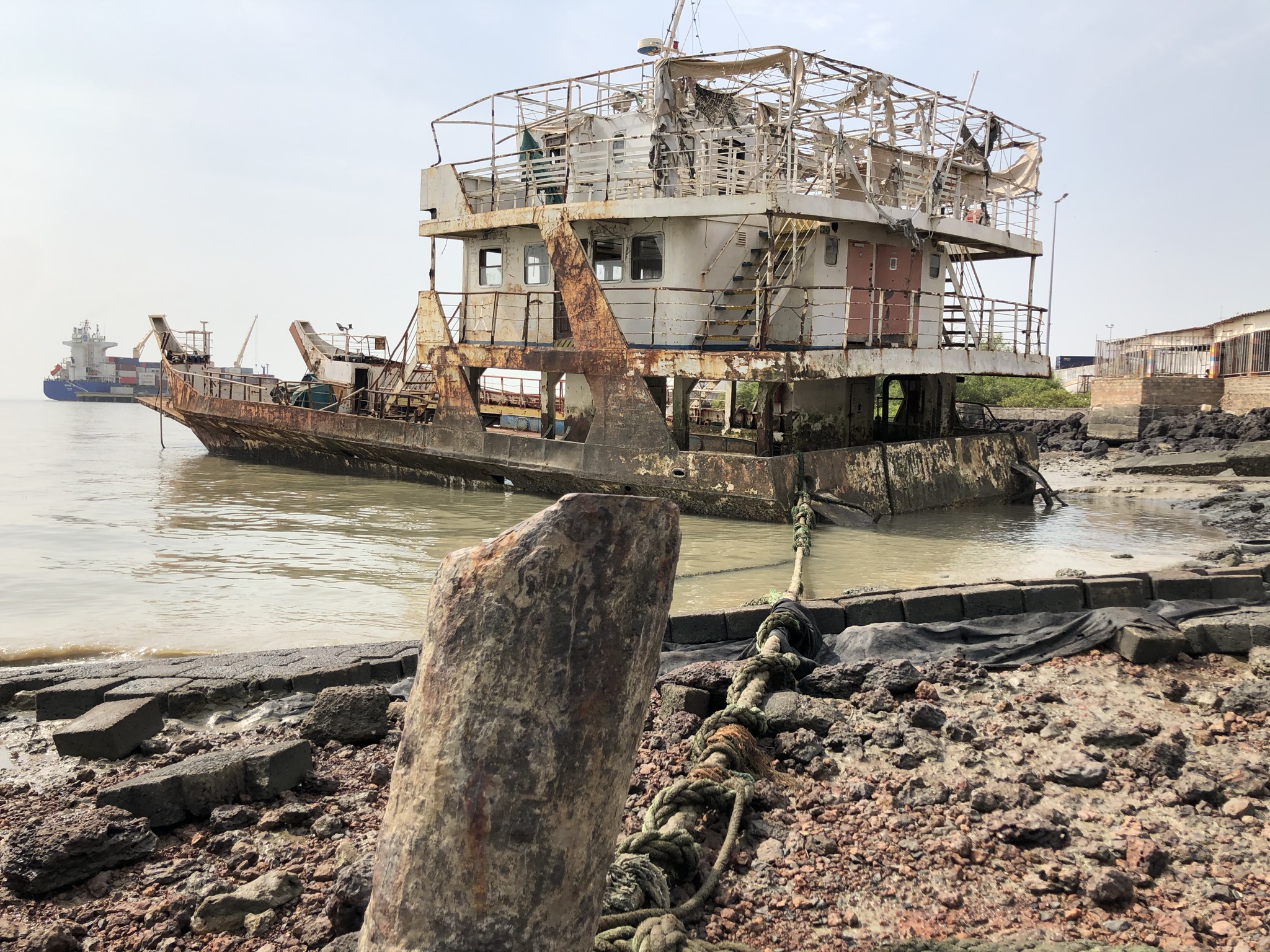
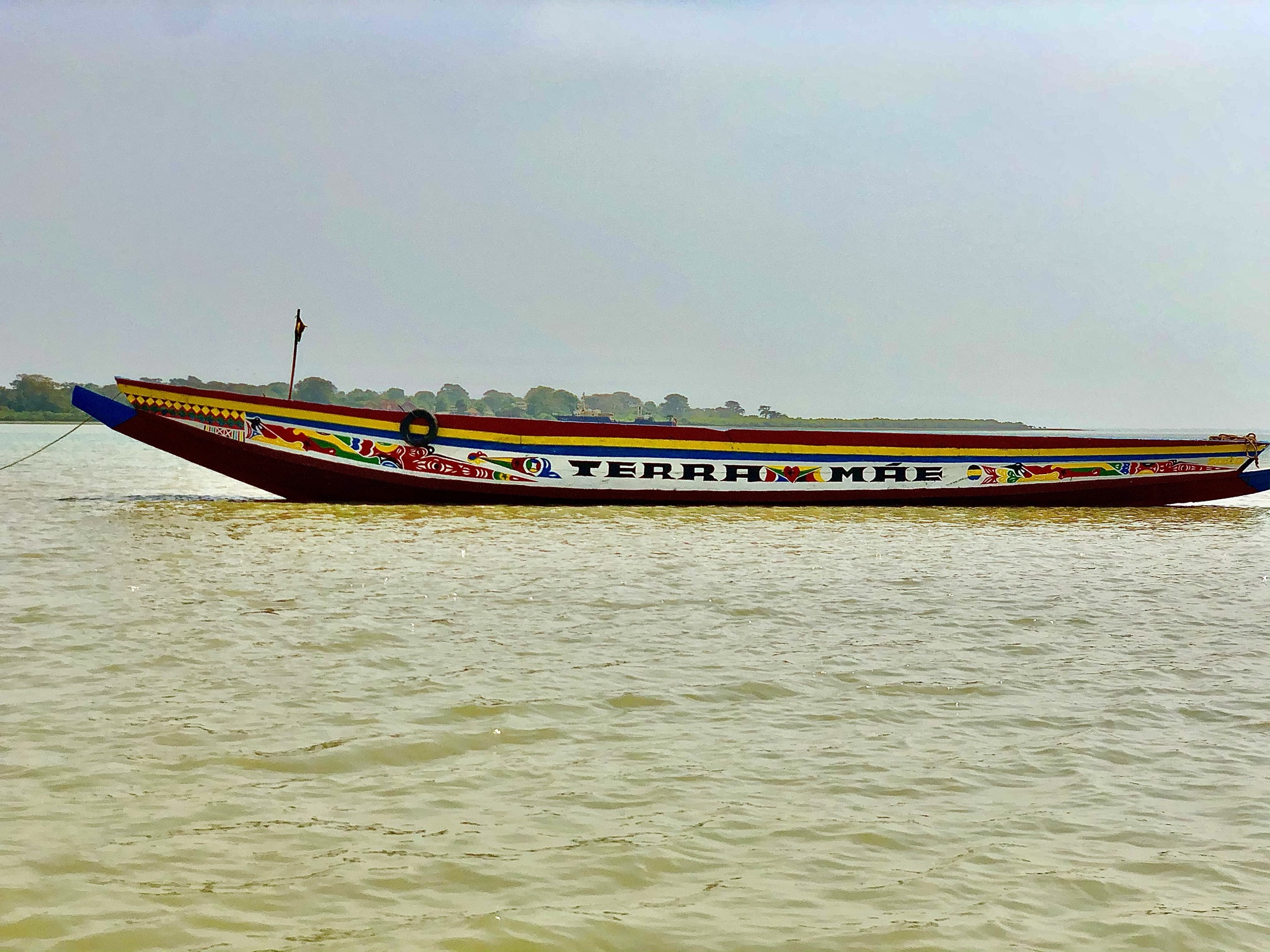
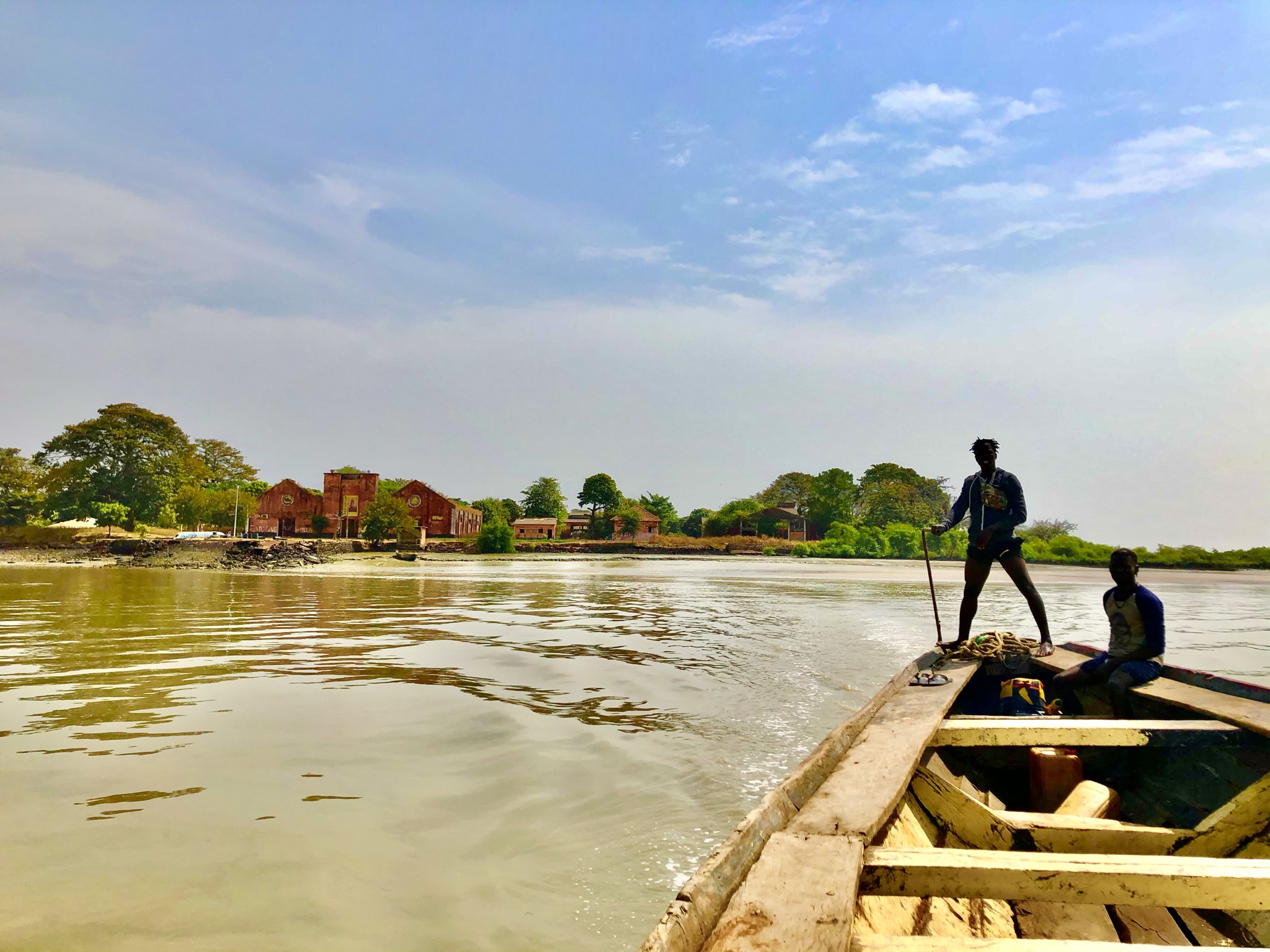
A Three-Hour Tour
The ride over was fun but quick. My boat was named Deus di Puder, and I was the only passenger on the wooden craft powered by a portable outboard motor. Not gonna lie, I kinda felt a little Anthony Bourdain inside me, minus the security and camera team. The bow seemed to slam into the rocks of the island, but my captain knew what he was doing. I jumped off onto the jagged landing, being careful not to fall on my butt. He said he’d come back for me in an hour – I wouldn’t pay him until he did, that way I was guaranteed not to be stranded. I’m guessing my $19 was more than he’d make all day – he’ll be there.
I looked around and saw a couple of locals on the banks, and three guys manning a shack in the distance that I would later find out was a police post. It quickly came apparent that this indeed was not a “tourist” attraction – it was nothing like Suomenlinna Island in Helsinki, with roaming visitors, tiny cafés and storybook-like streams passing under little wooden bridges. I could barely even find the walking path here. I wondered if I’d made a mistake. It was too late. The boat was gone.
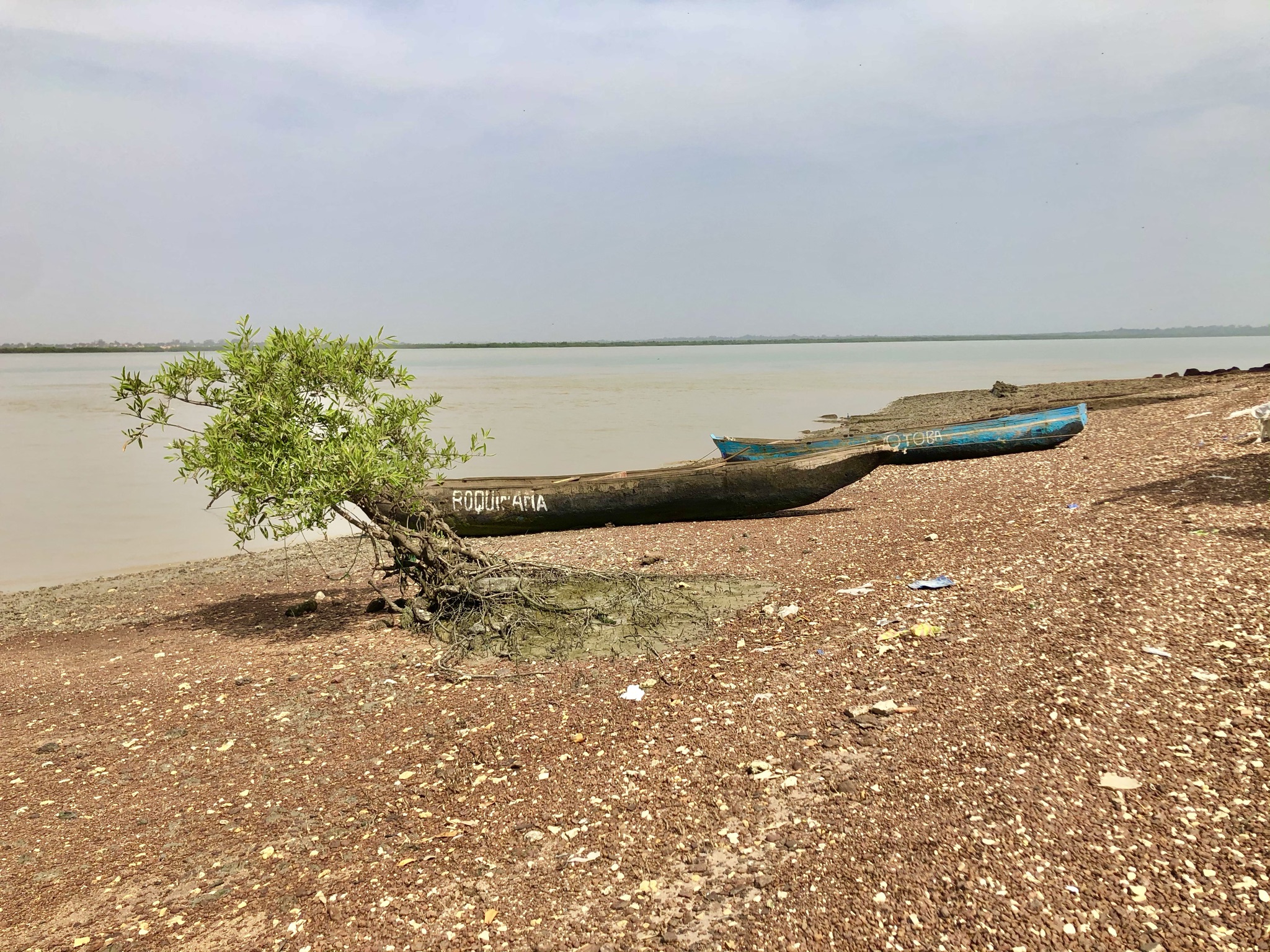
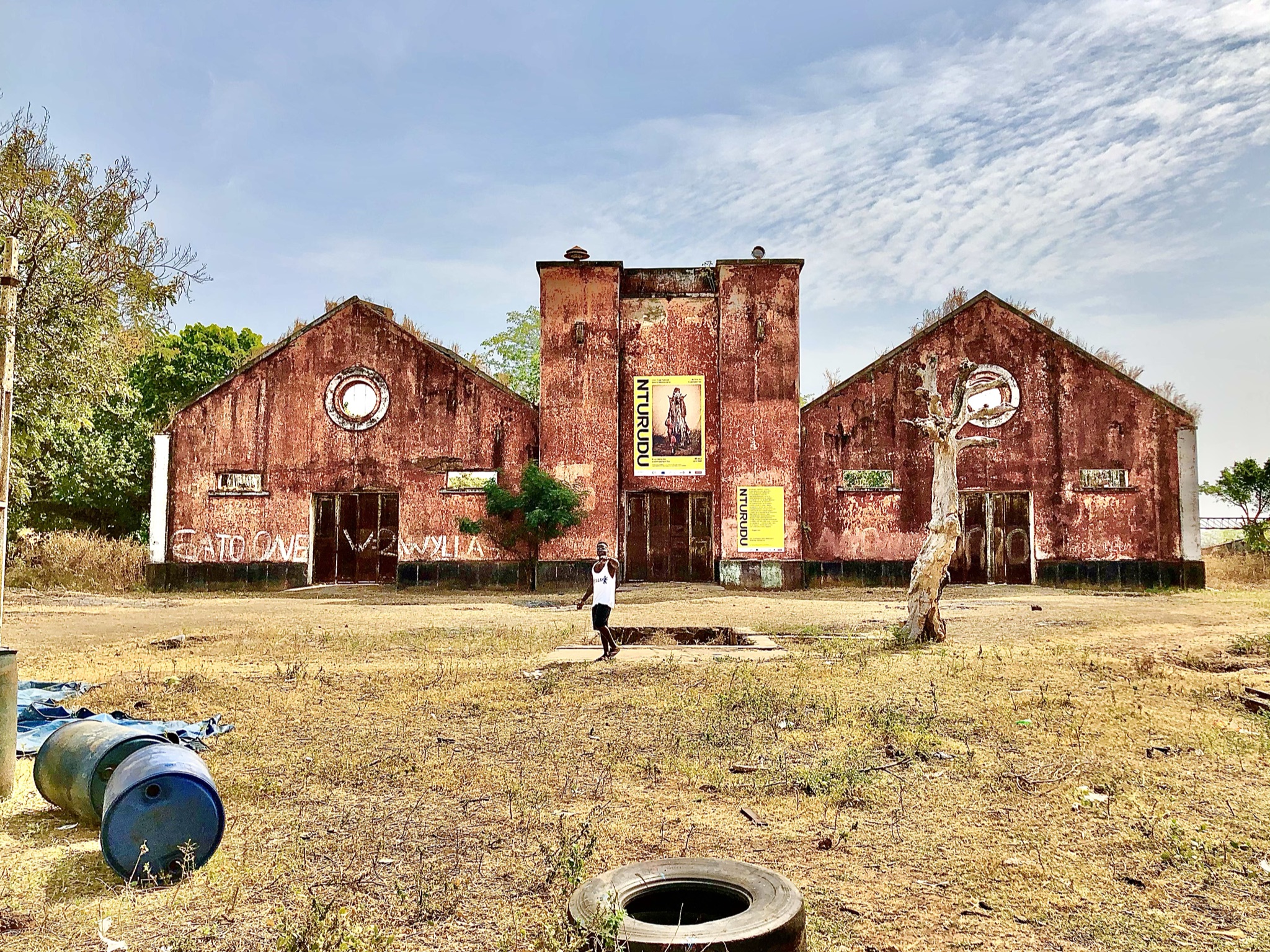
The Curious Case of Julio Berente
There were zero roads and no signs. I finally was able to find what was barely identifiable as a trail. I was really unsure if I was supposed to be here or not. God forbid I step on a landmine. Nonetheless, with no other options, I began my walk into the island. It wasn’t long before I passed a small house with a young man in uniform sitting outside. I wasn’t sure if I was on his property, so out of respect I greeted him with a “Bom dia!” and a “Pode passar?” (Can I pass?). Seconds later, he was offering to be “my guide,” and at this point I figured I had no other choice. I actually welcomed it – I could now breathe easy that I was with a local–in uniform at that–and would be shown the island’s highlights, as well as looked after. What could go wrong?!
The man’s name was Julio Berente and he was actually a member of the Brigada Costeira (the coast guard). Pretty cool! I did my best to keep up with his stories of the island in Portuguese, but I missed a lot. I’m okay with basic conversation, but once Julio picked up the pace, I was a little lost. Nevertheless, I enjoyed our walk about the island, as we passed crop fields, livestock and villagers, whom Julio introduced many of them to me. Before you knew it, my hour was up, and it was time to head back to catch my boat for the return. Not before paying a “fee” to those guys at the military post. Apparently there is a charge to visit the island. I should’ve known! It was okay actually – my visit well worth the ten bucks. Of course I tipped my guide, too.
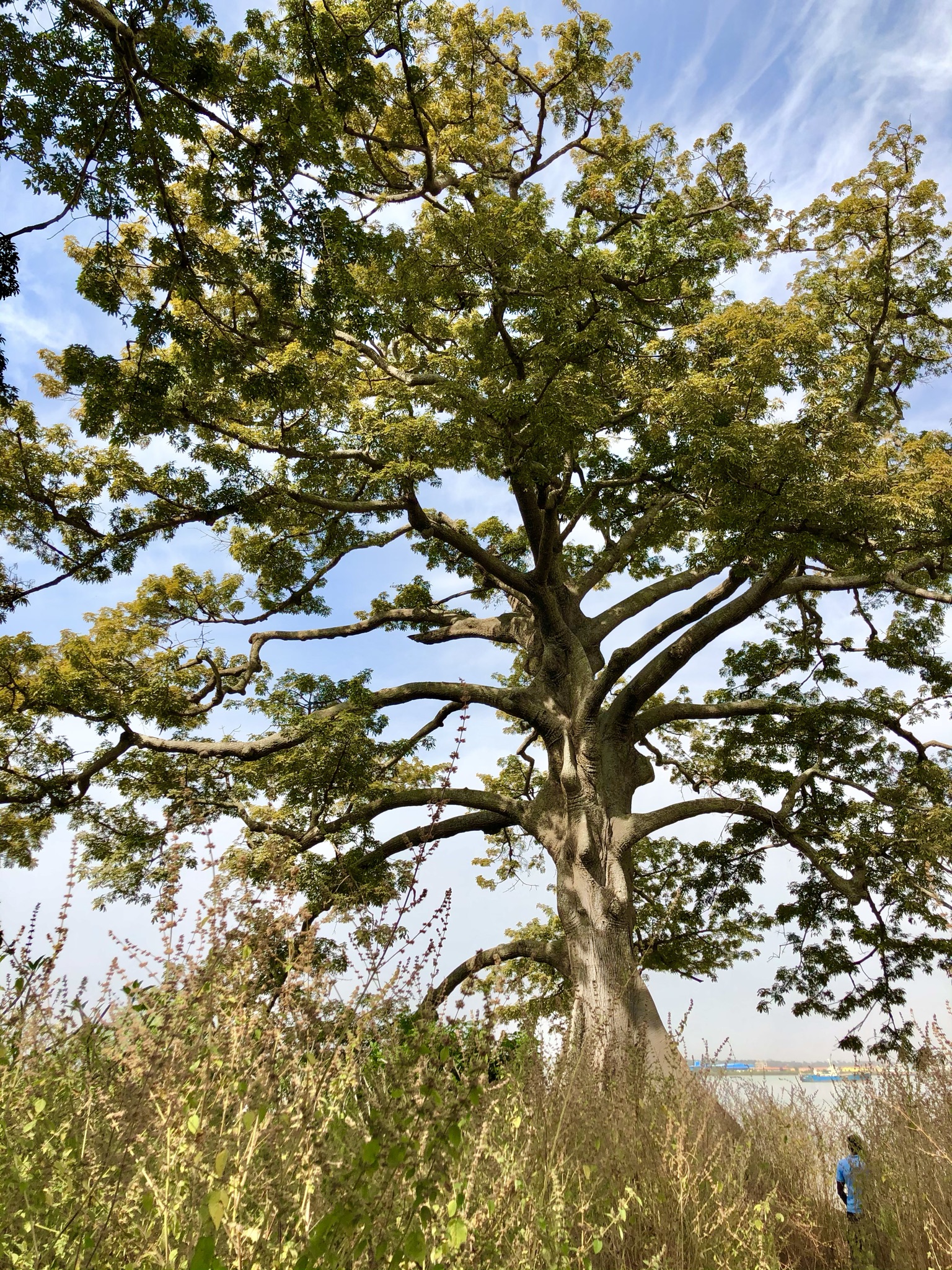
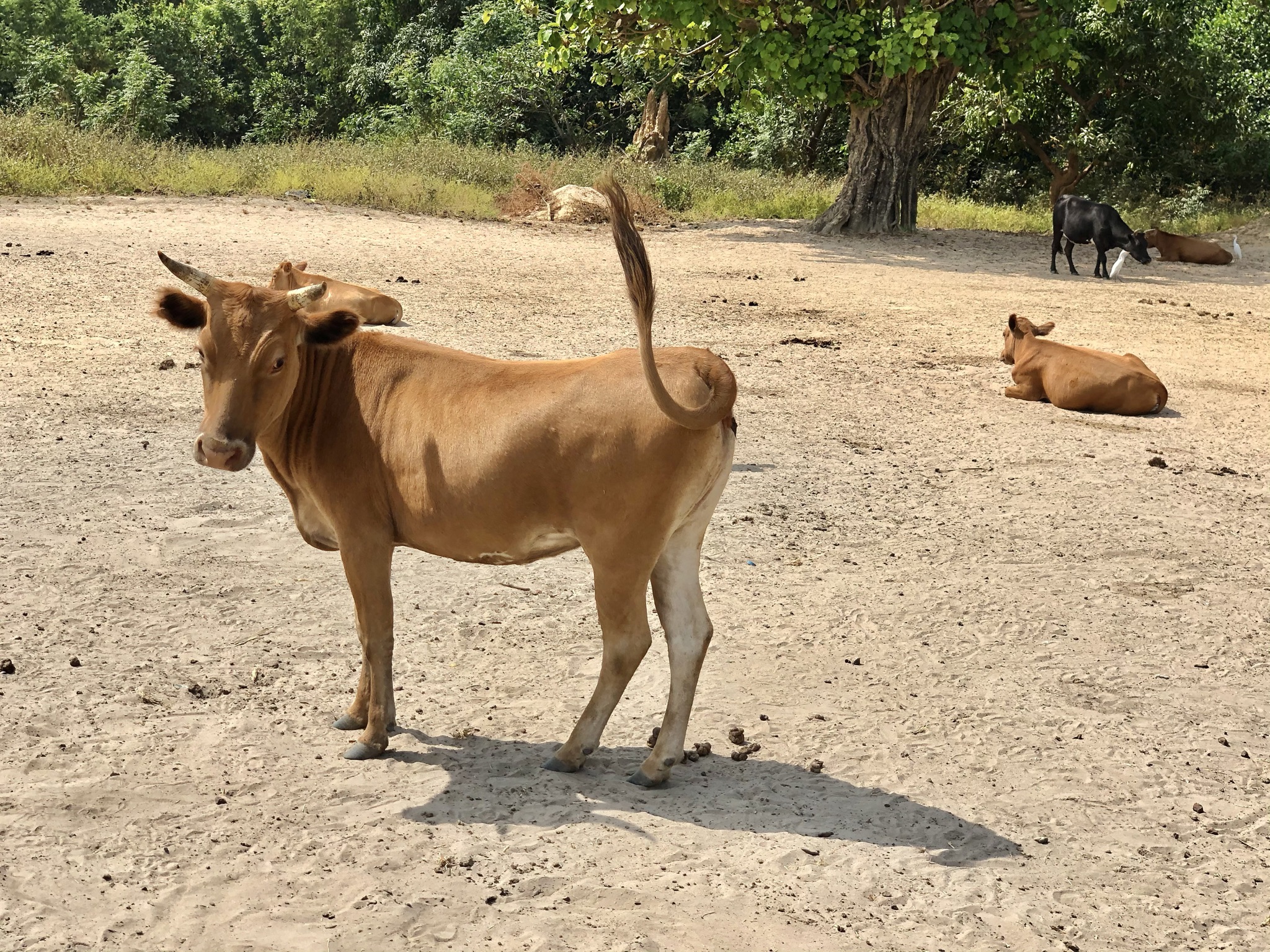
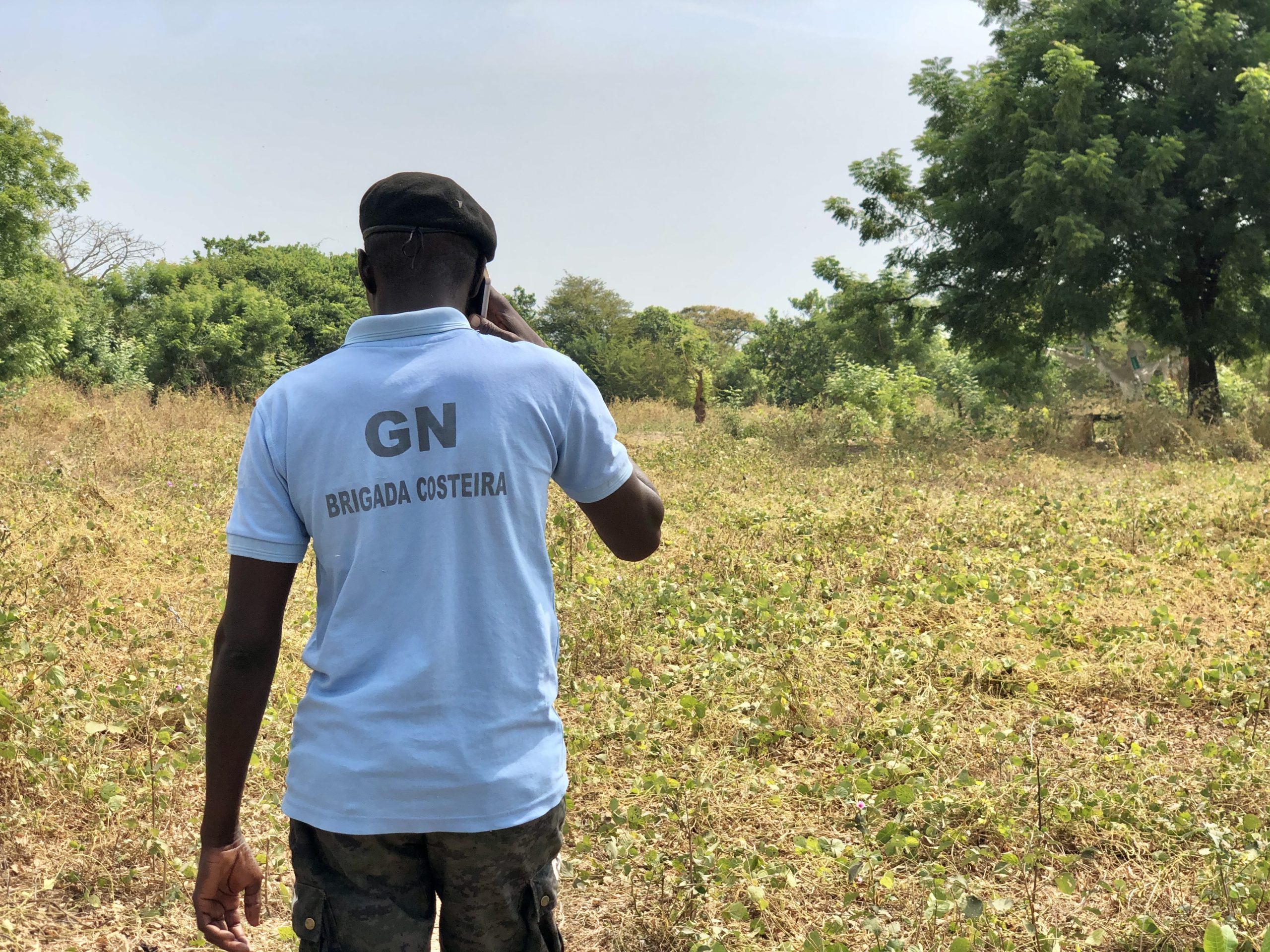
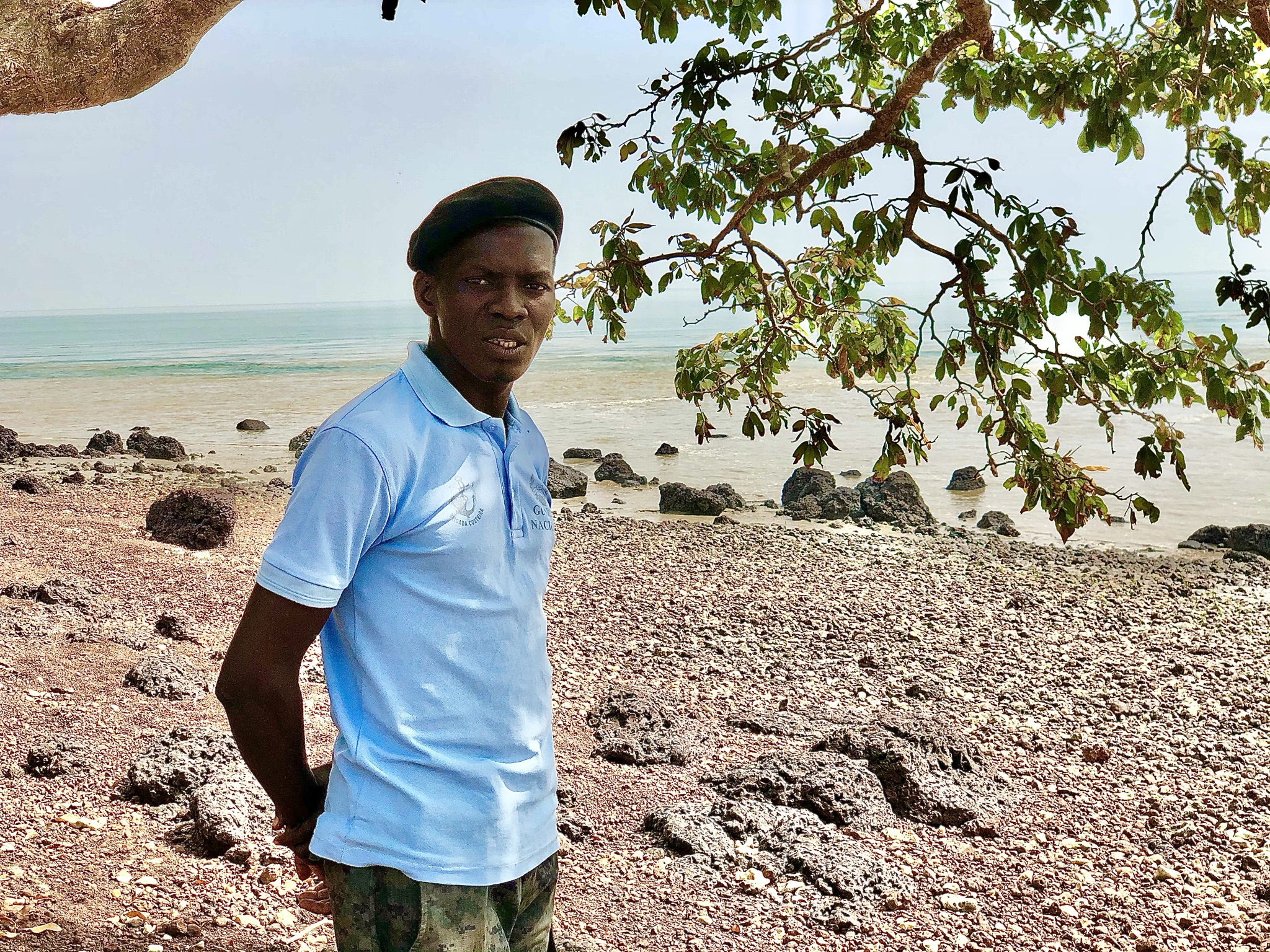
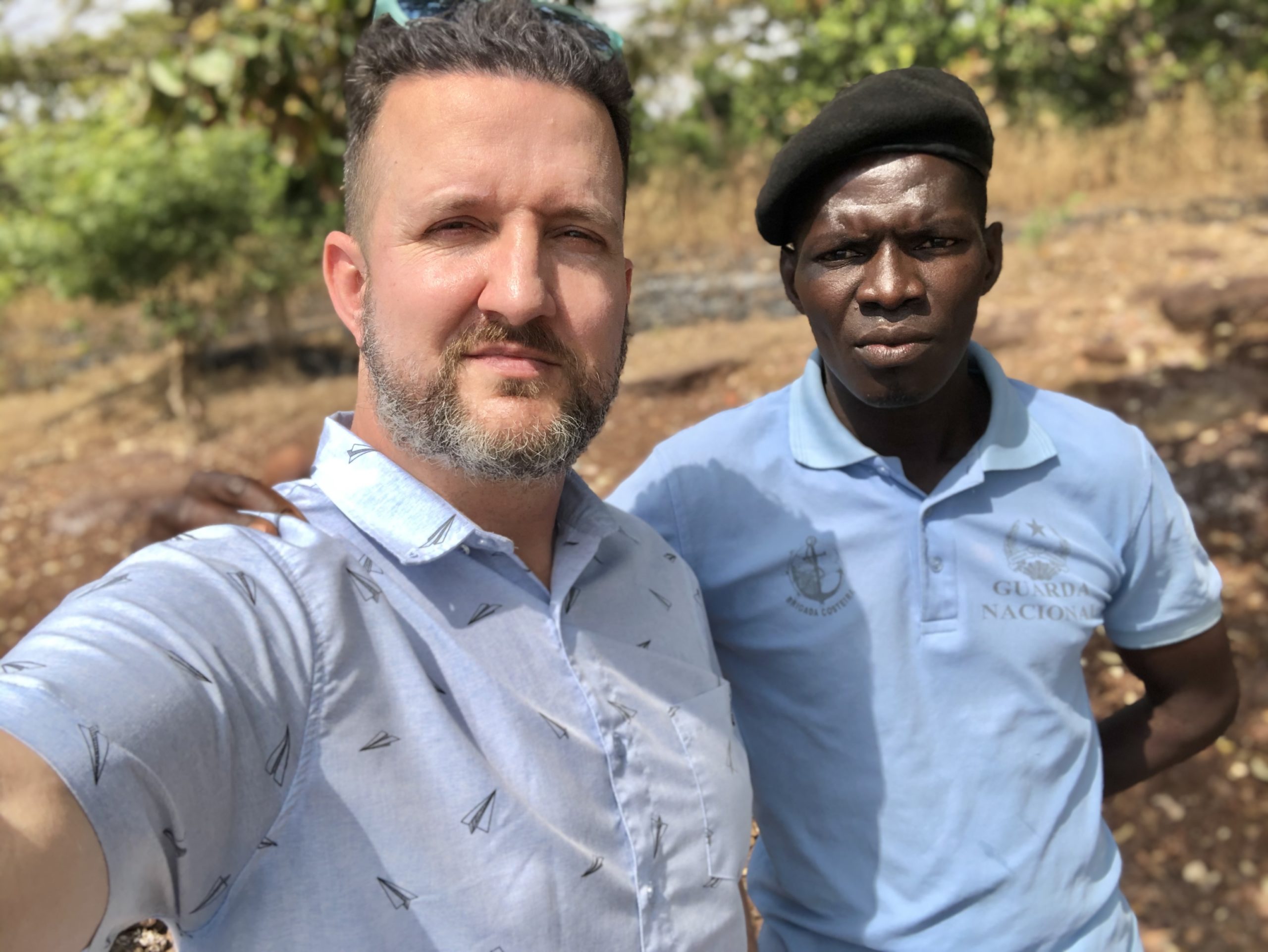
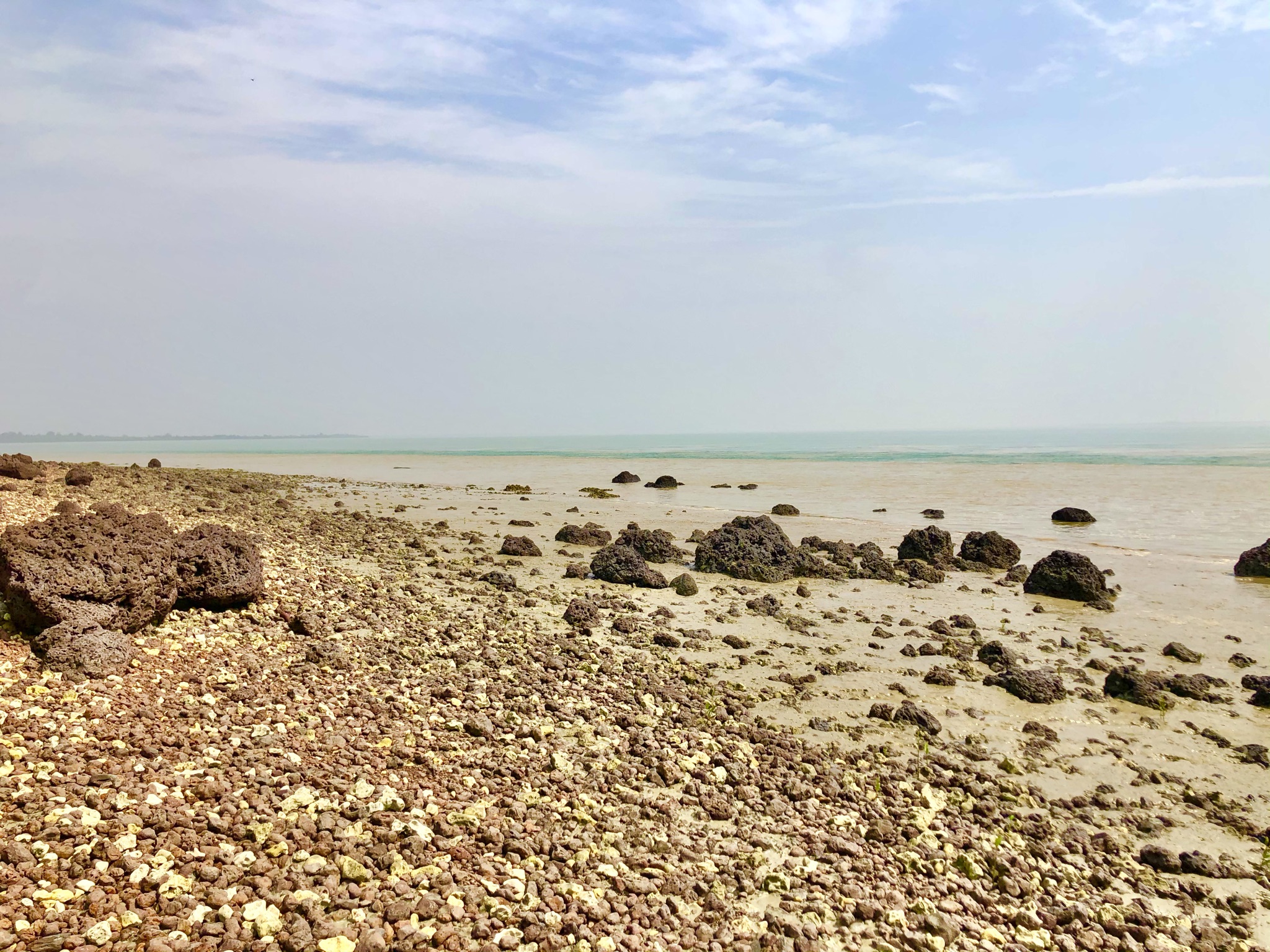
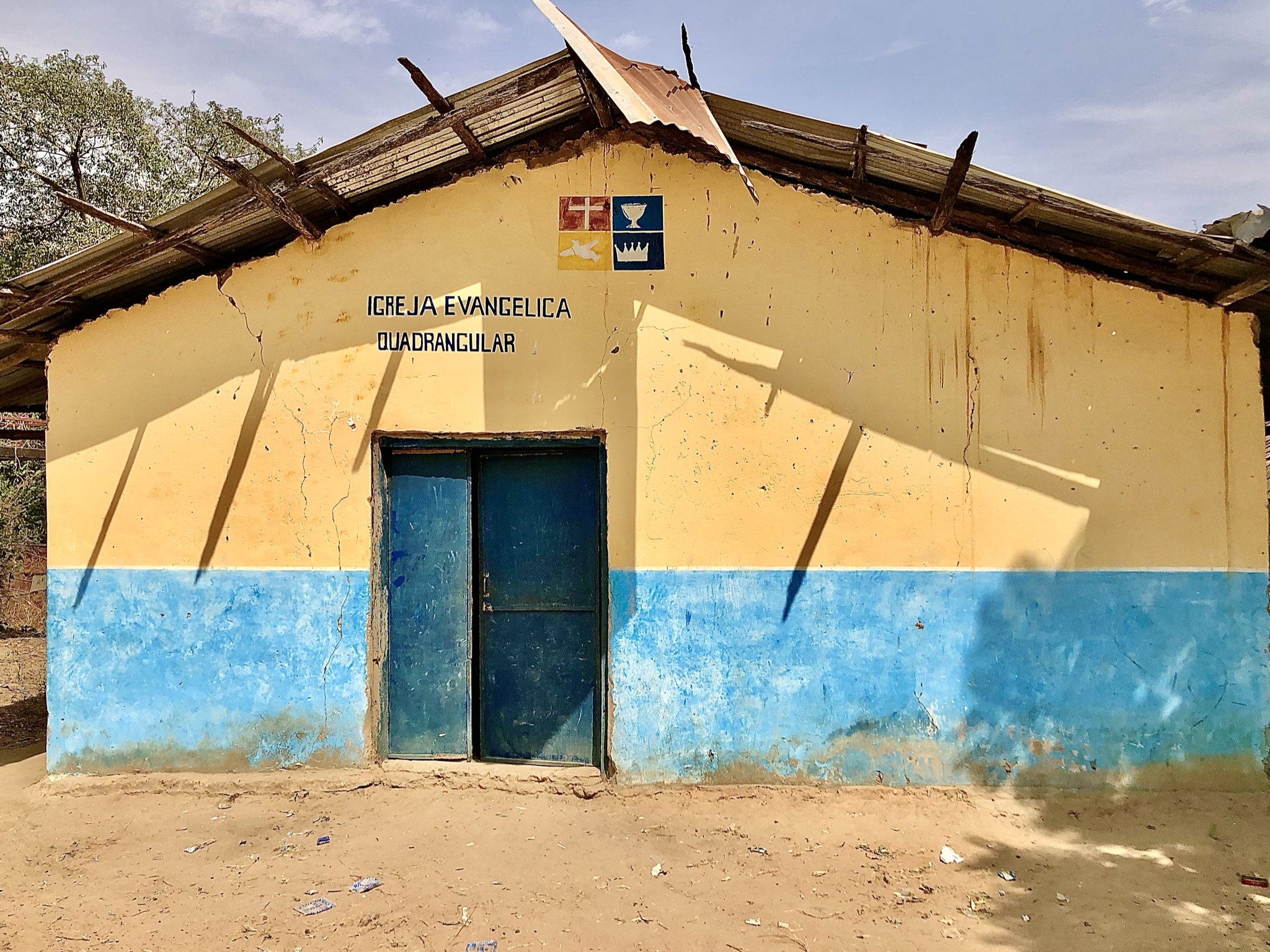
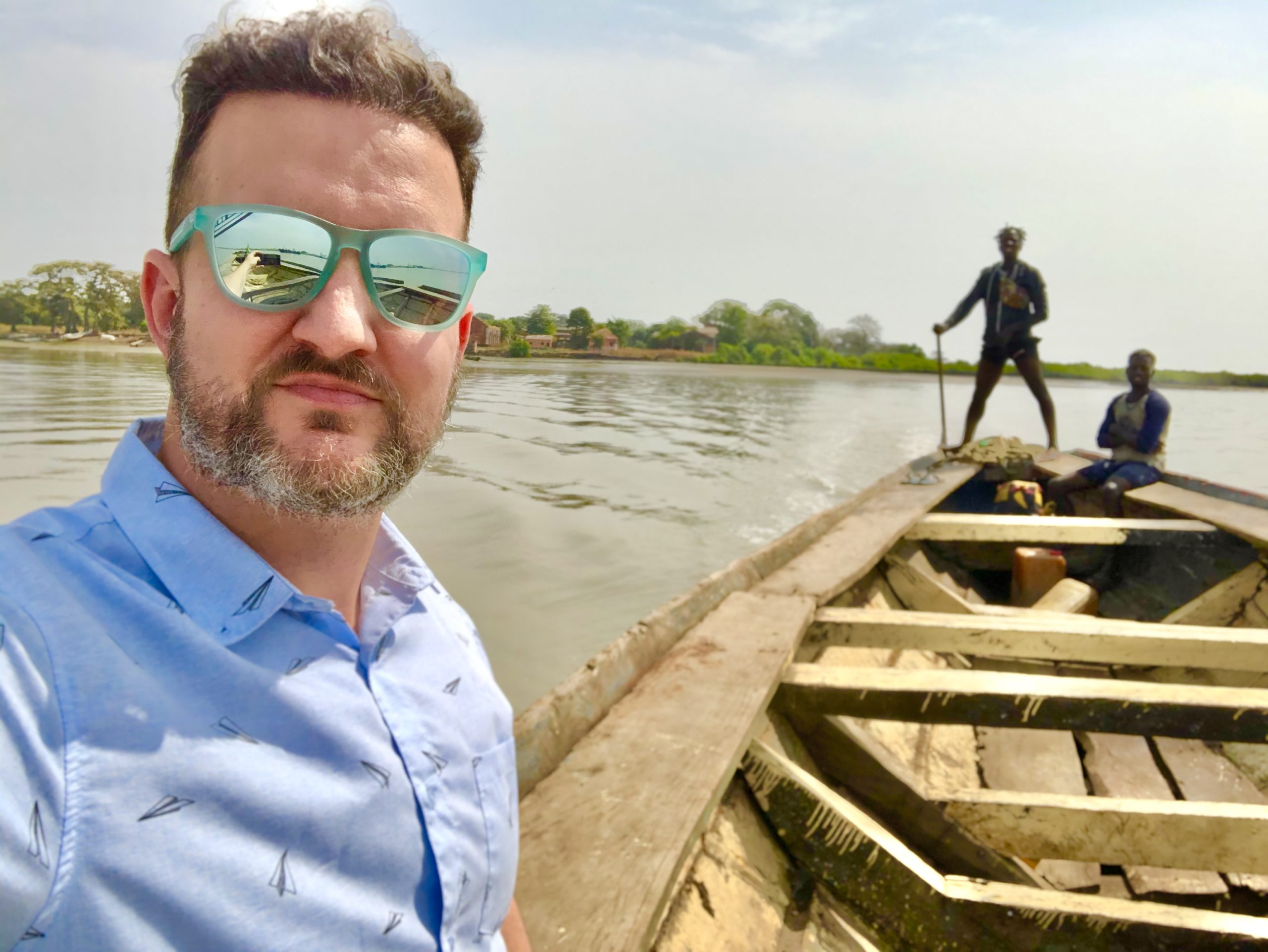
Christmas in Bissau
I spent the rest of the day exploring even more. I couldn’t help but walk the dusty streets of Bissau Velho again. Man, I just loved that area. On the way back to the hotel, I stopped by a Lebanese mini-market for some cool treats, including a Mojito-flavored 7-Up…so darn good, I wish we had them in The States! This store featured imports from all around the world, from France to Lebanon to Tunisia. It was very cool to look around and drink a couple of foreign, bubbly and sugary beverages. I passed by National Heroes Plaza again, this time to sneak a photo of the Presidential Palace. I read online that photos are not allowed, so I had to be quick, you have been warned.
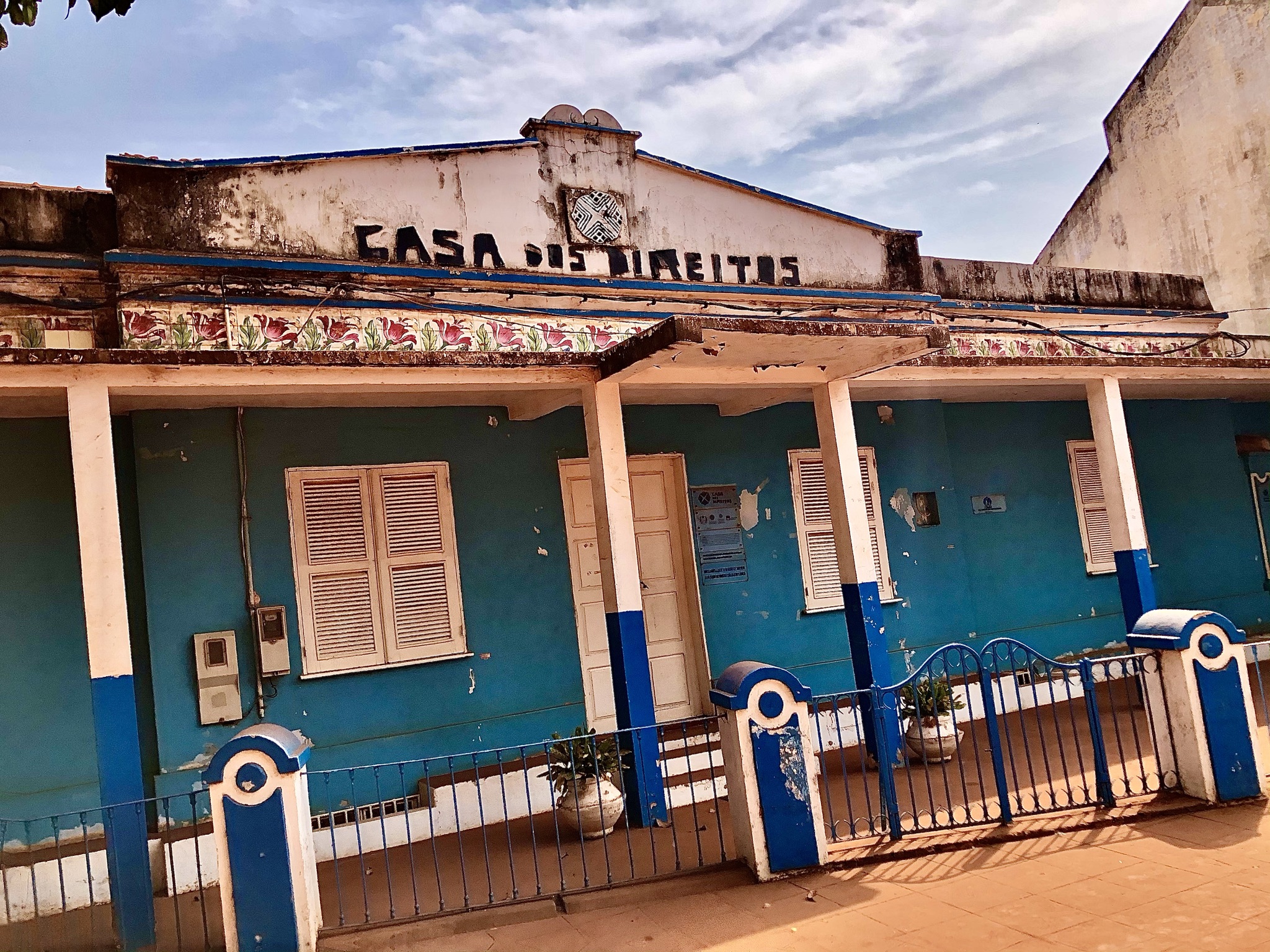
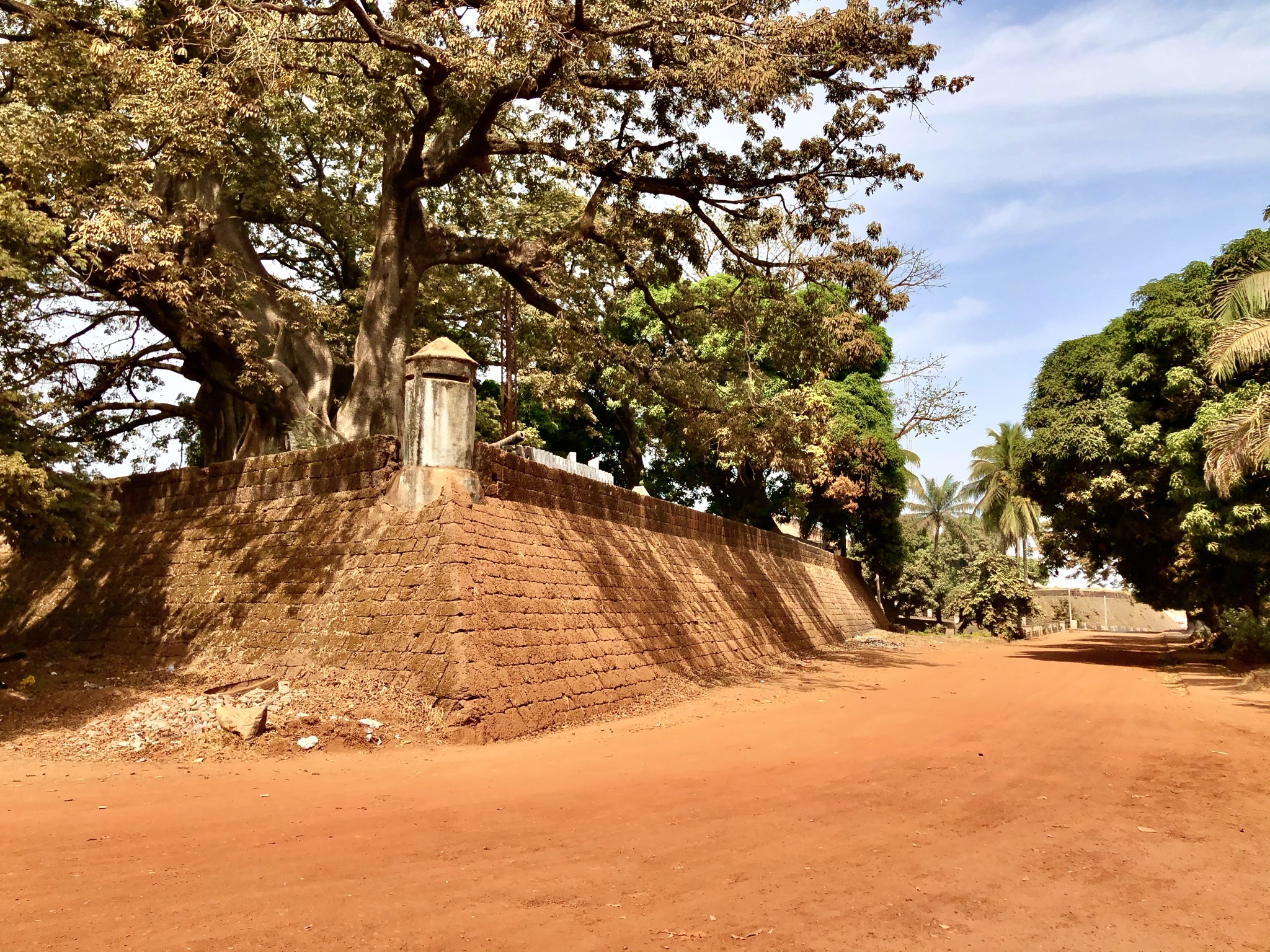
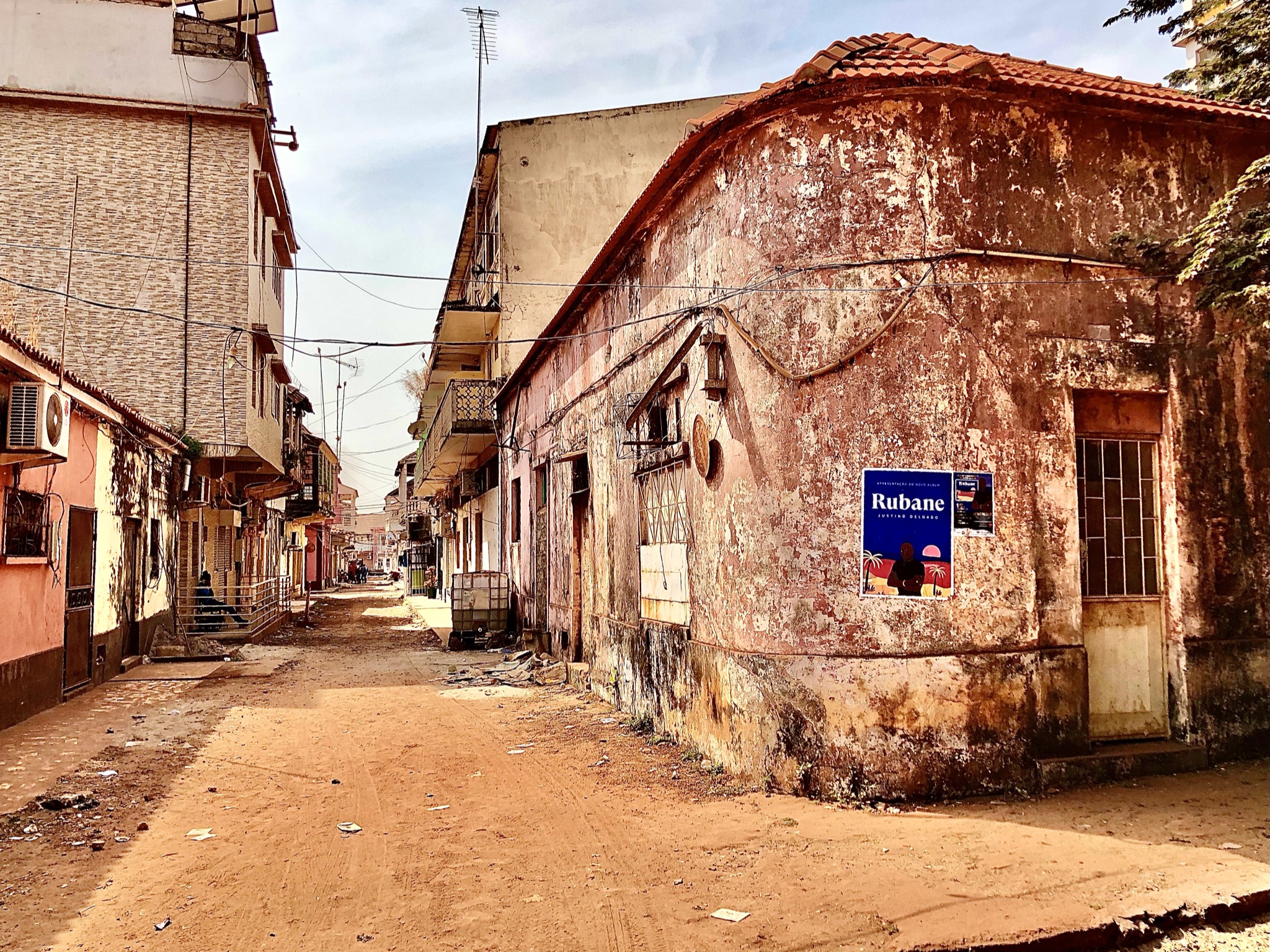
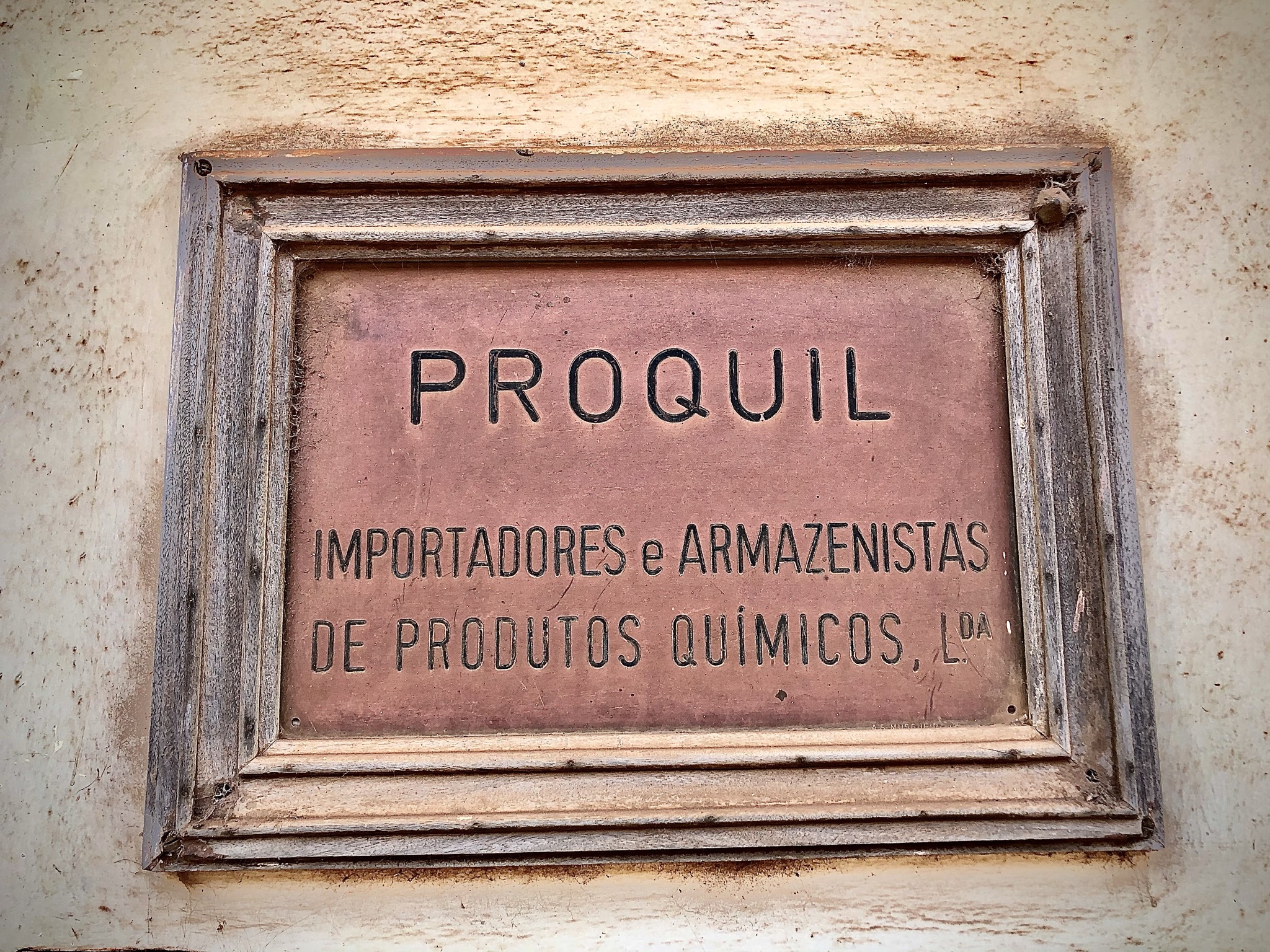
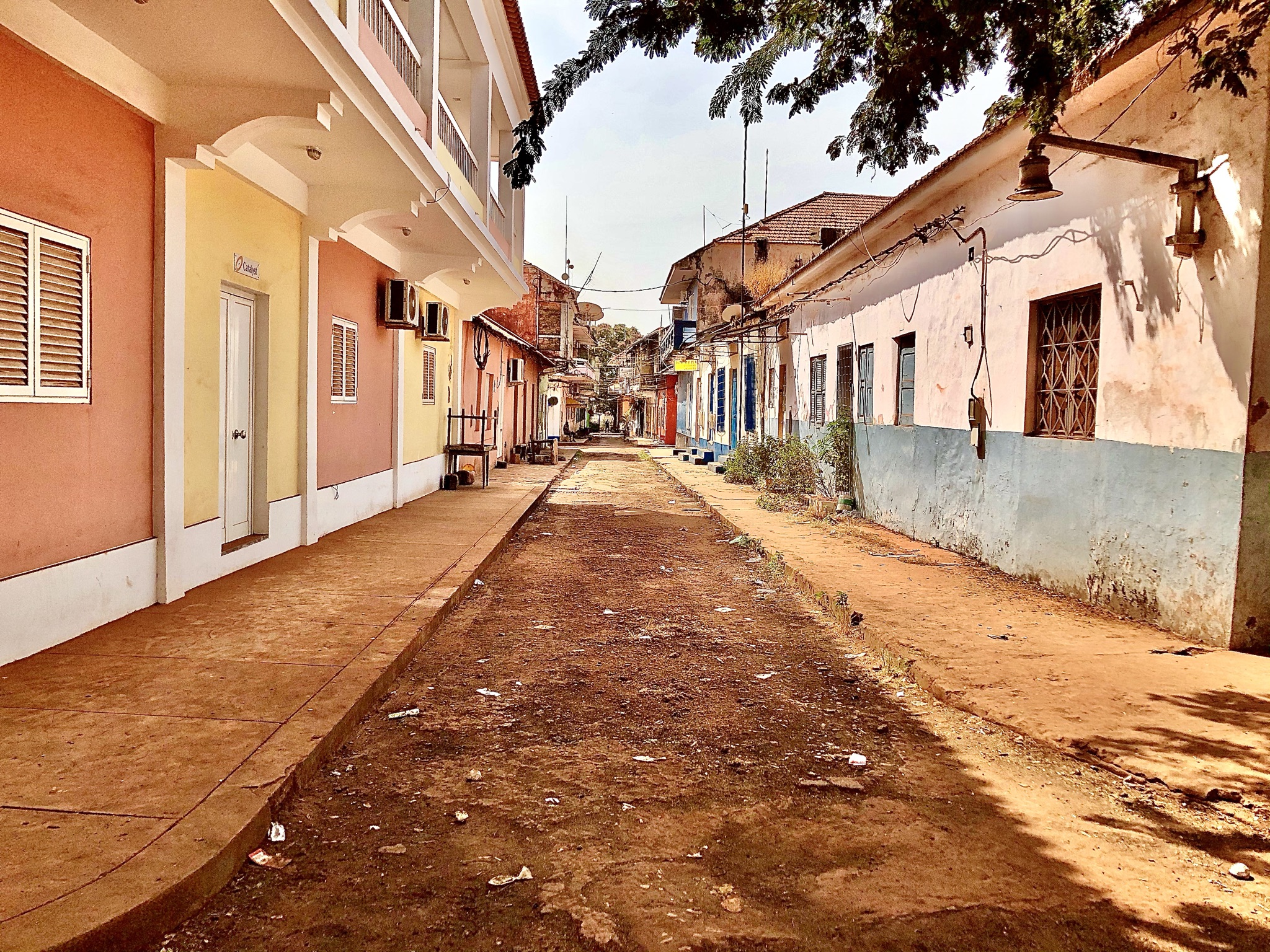
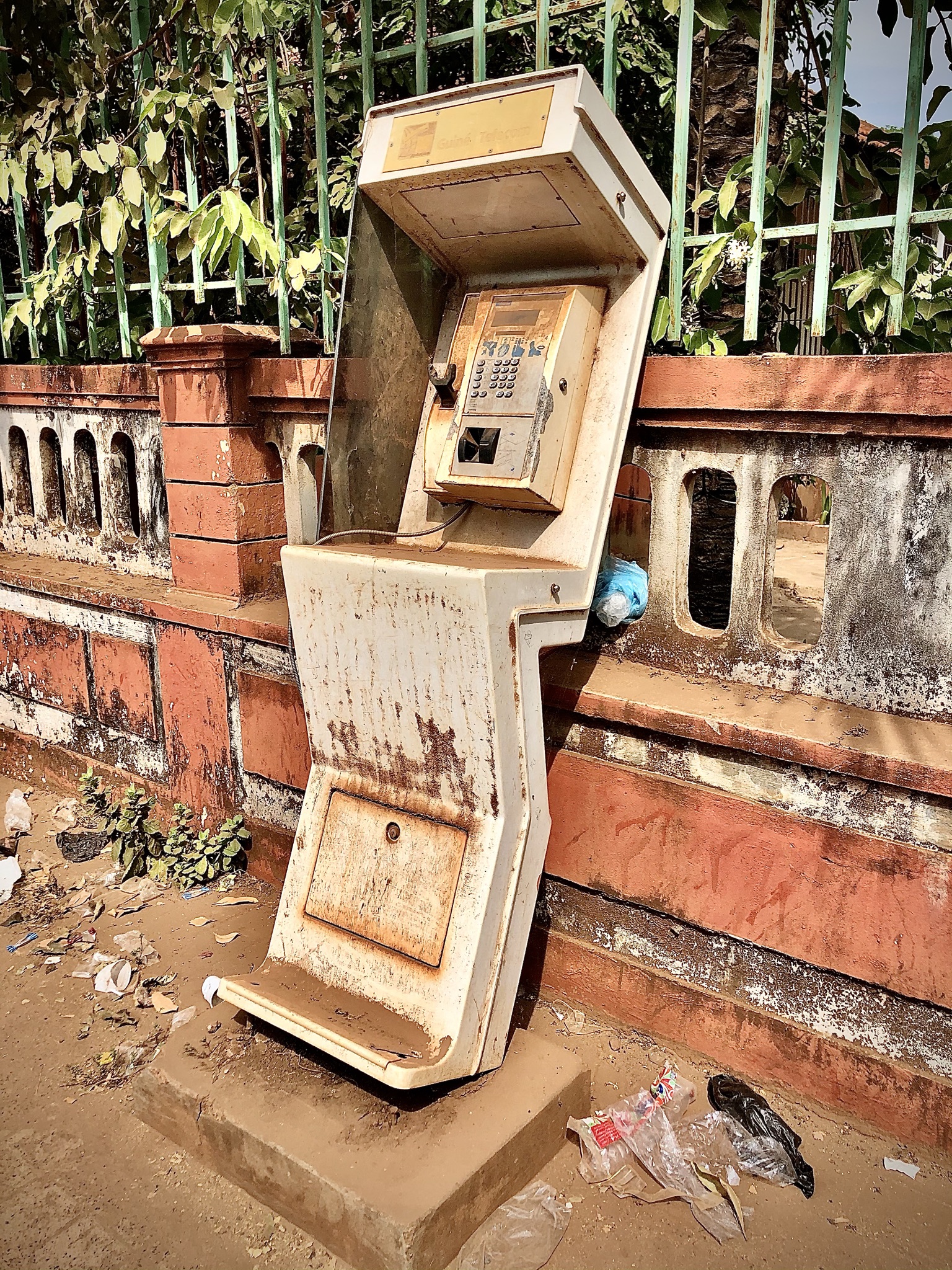
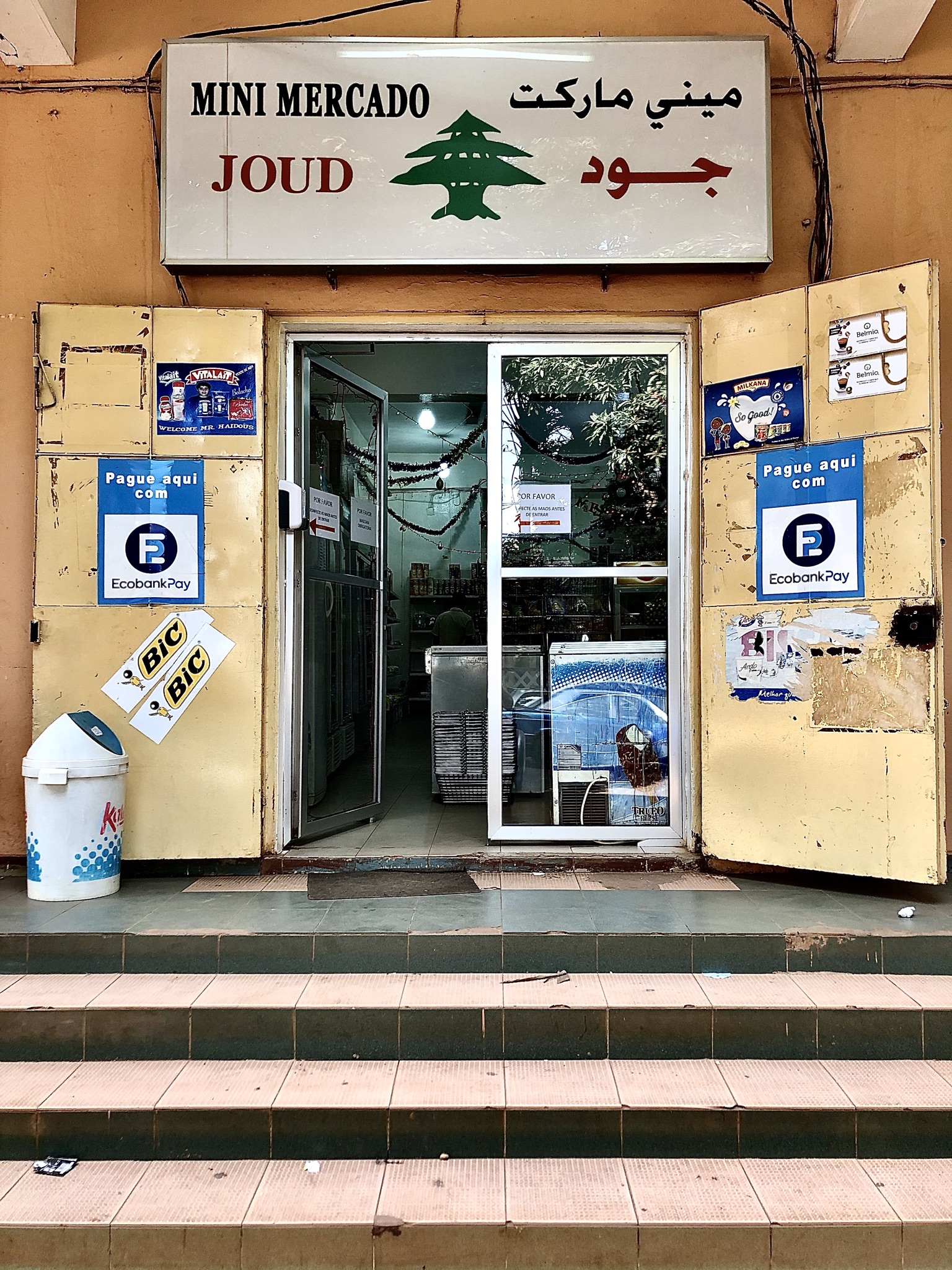
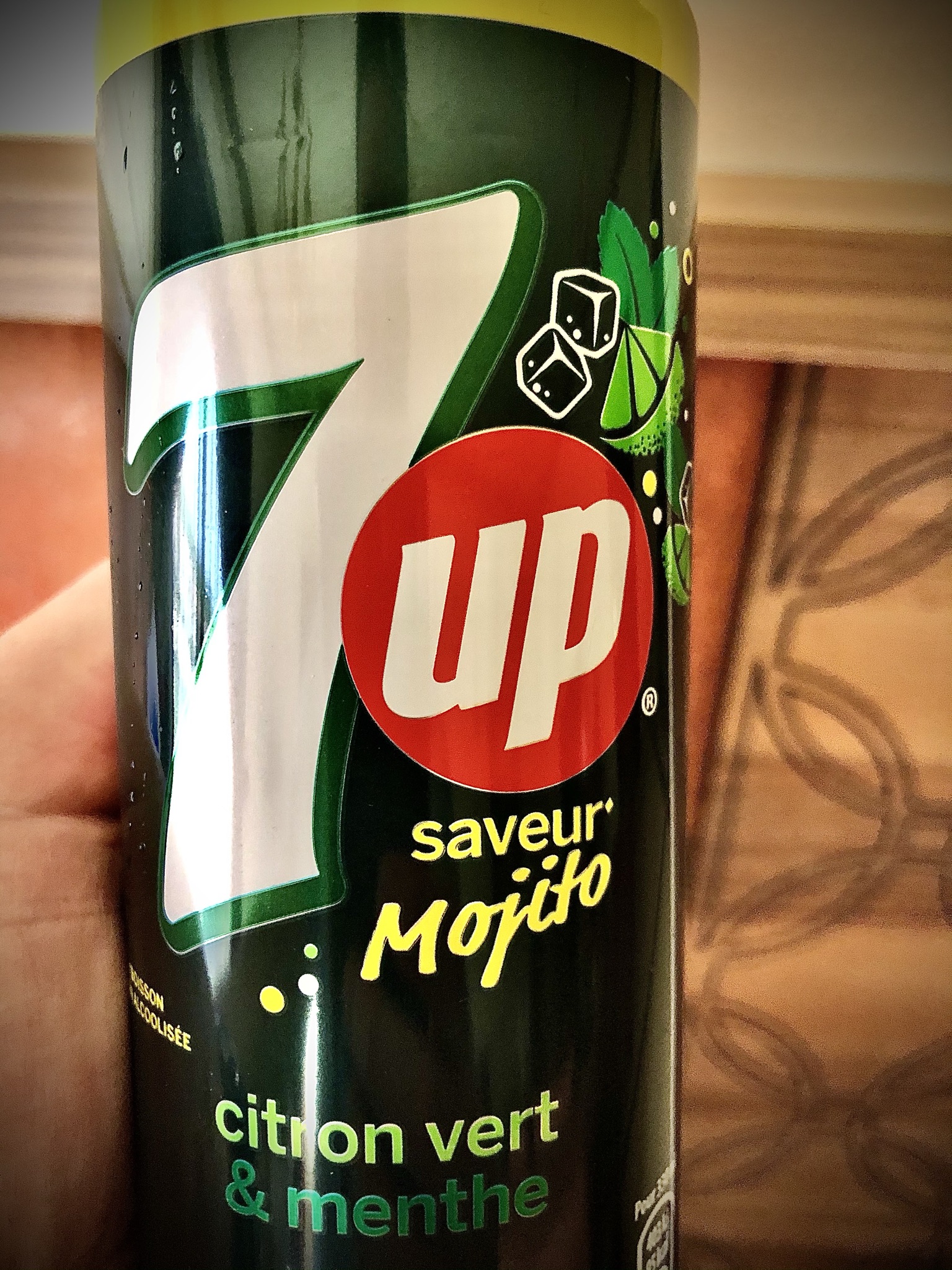
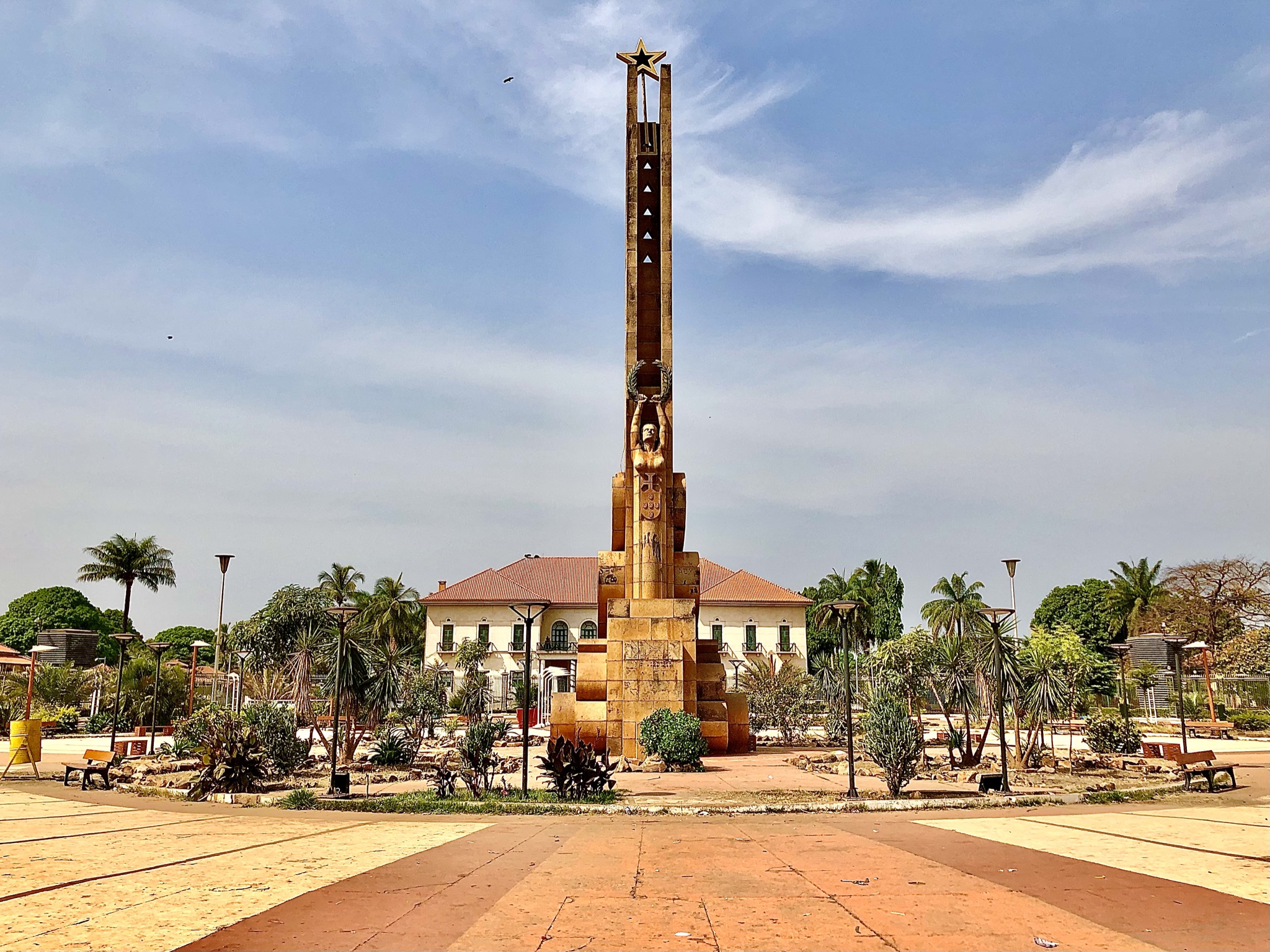
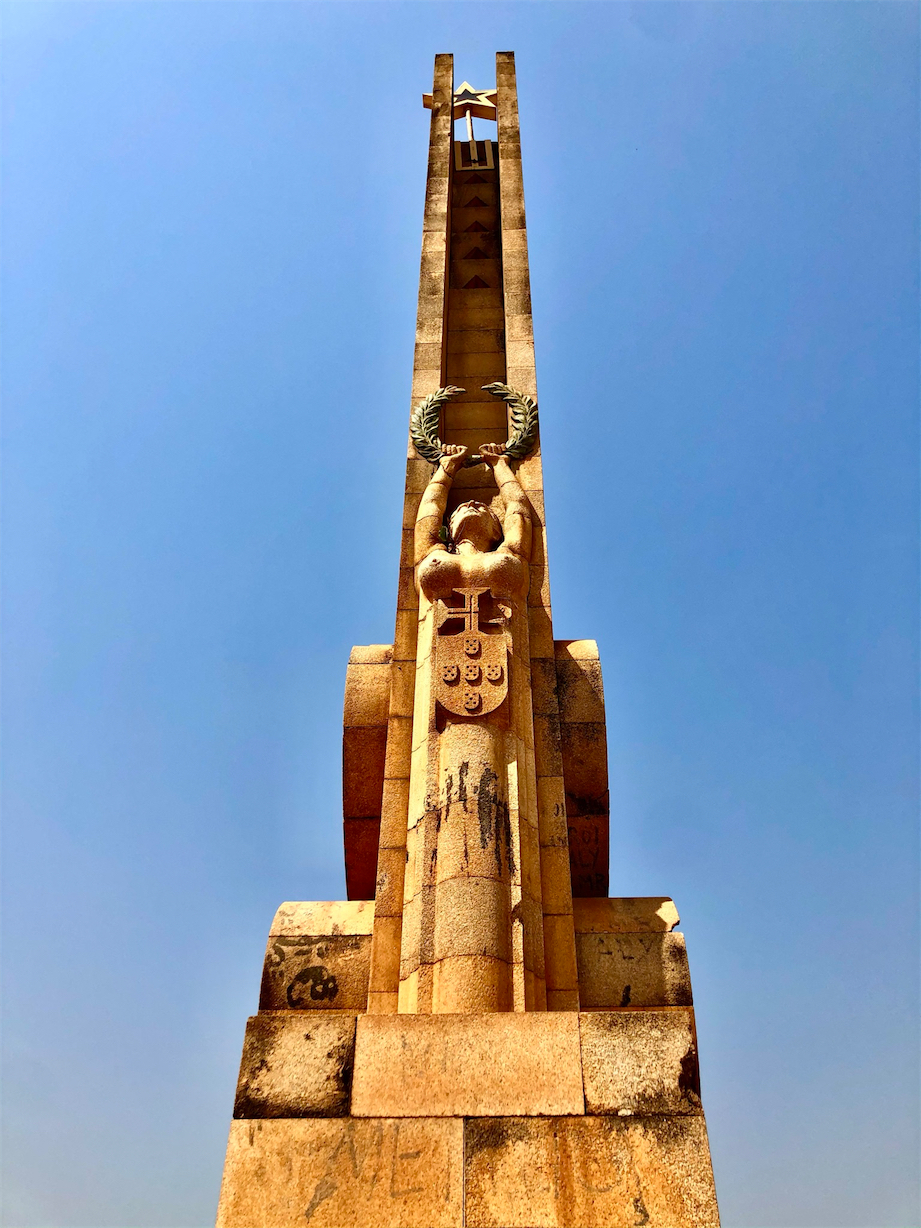
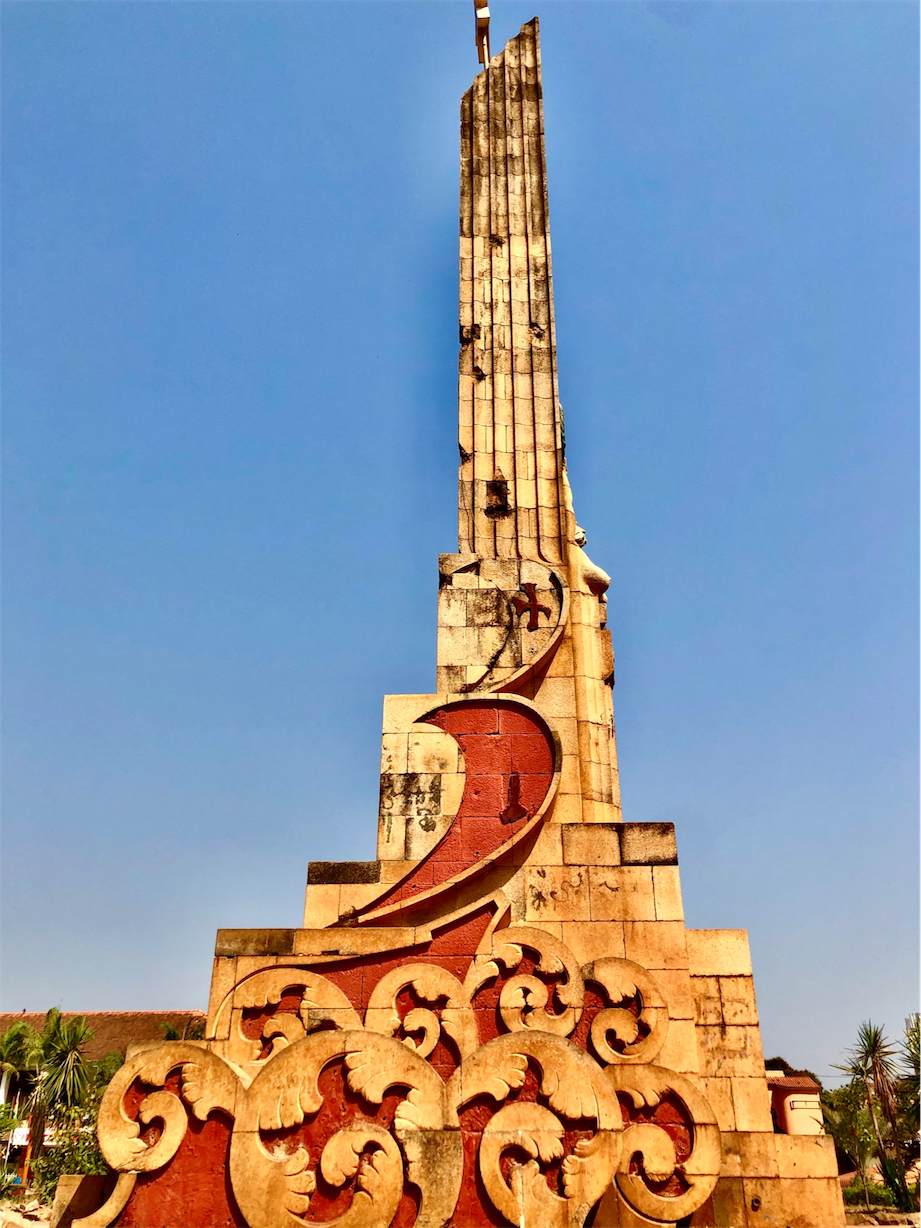
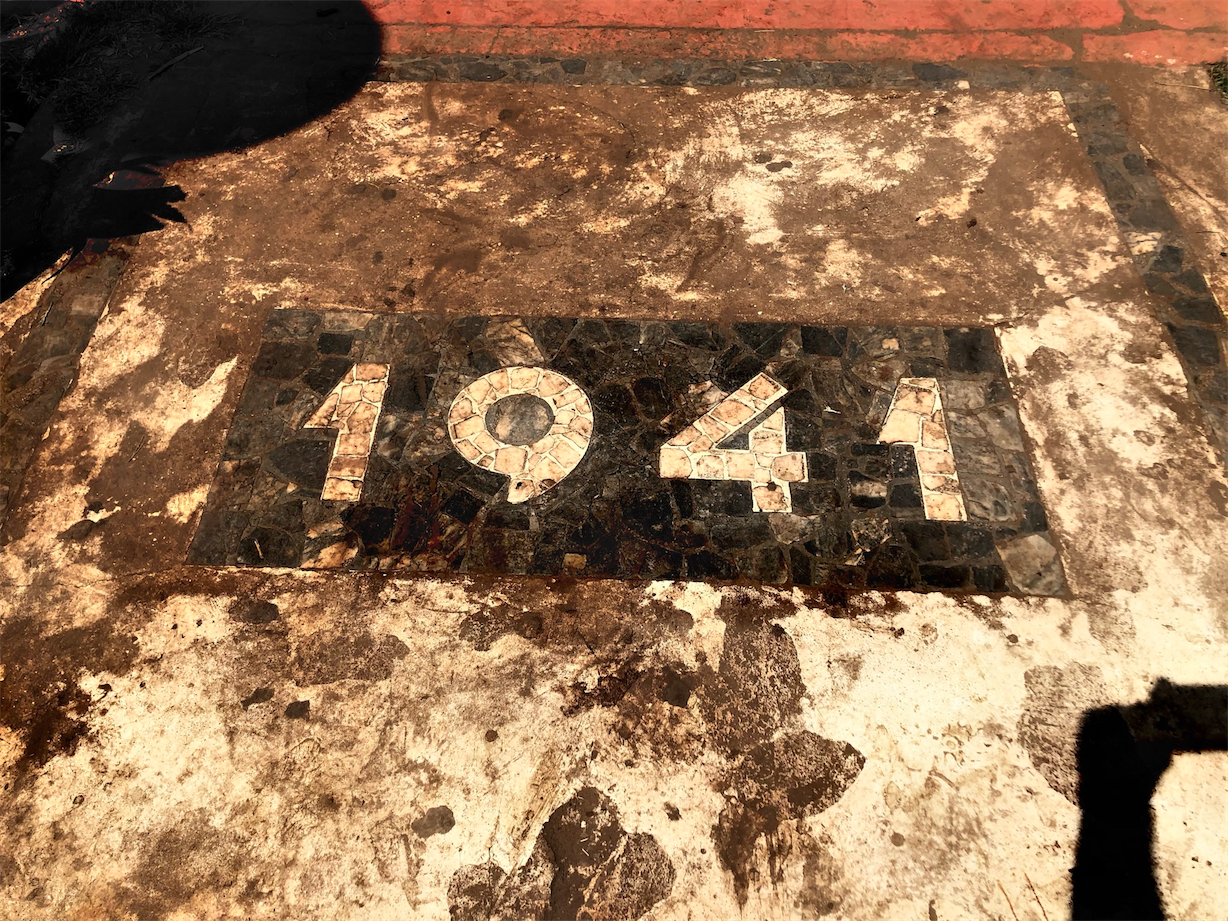
The Big House
The nicest, newest hotel in Bissau is the Spanish-owned Ceiba Hotel. It’s also the most expensive, which dissuaded me from staying there. But no harm in stopping by for a drink, right? Besides looking a little like a federal compound, the hotel is immaculate! There didn’t seem to be many guests there either – I can’t imagine how much money they are losing. I’m sure the owners didn’t envision a global pandemic striking less than two years after construction was completed. I enjoyed a fresh pineapple juice by the pool before moving on. The pool sure looked inviting.
You can learn more about The Ceiba Hotel, and other hotels in Bissau, in my comprehensive Bissau Hotel Report, HERE.
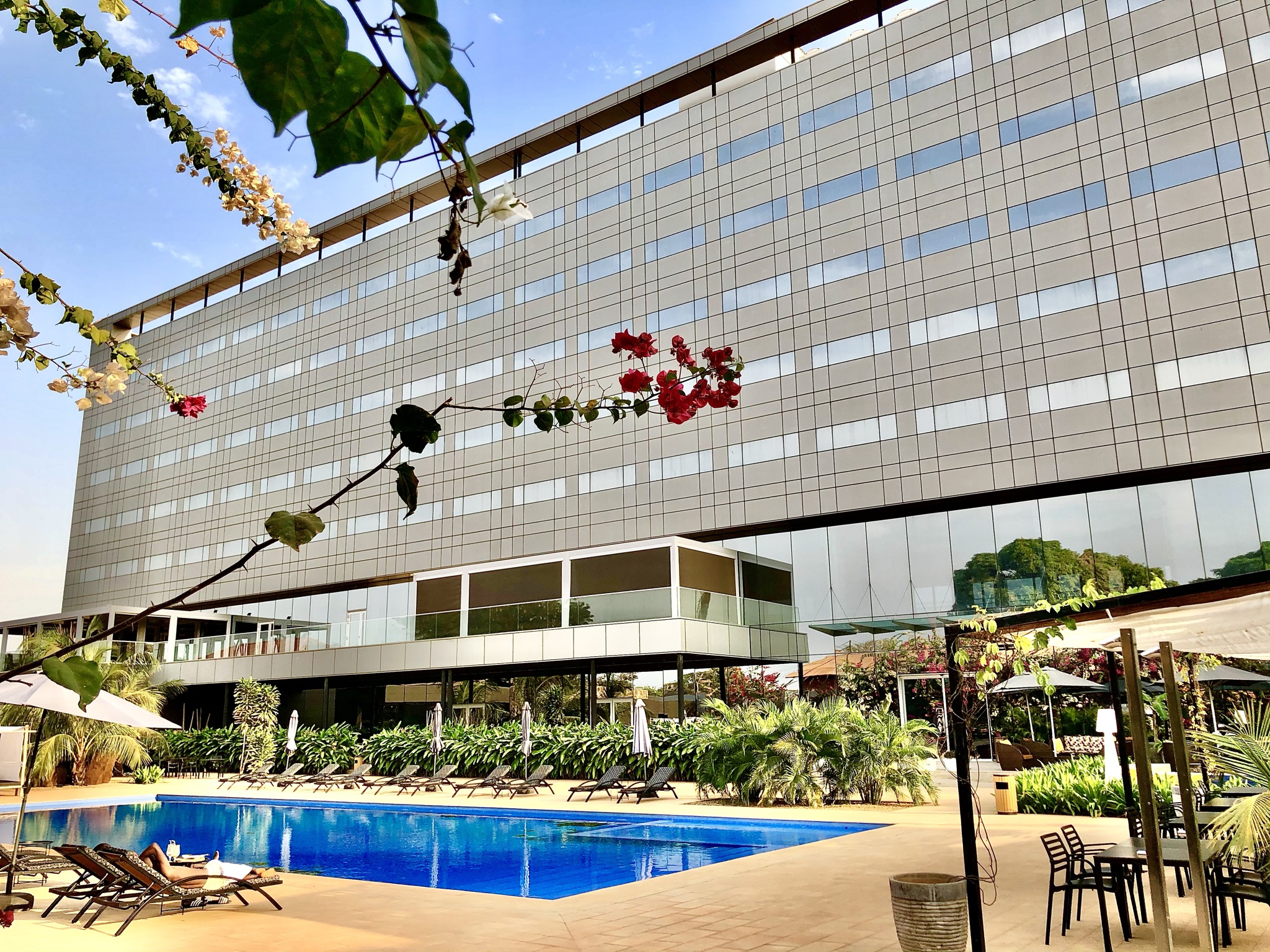
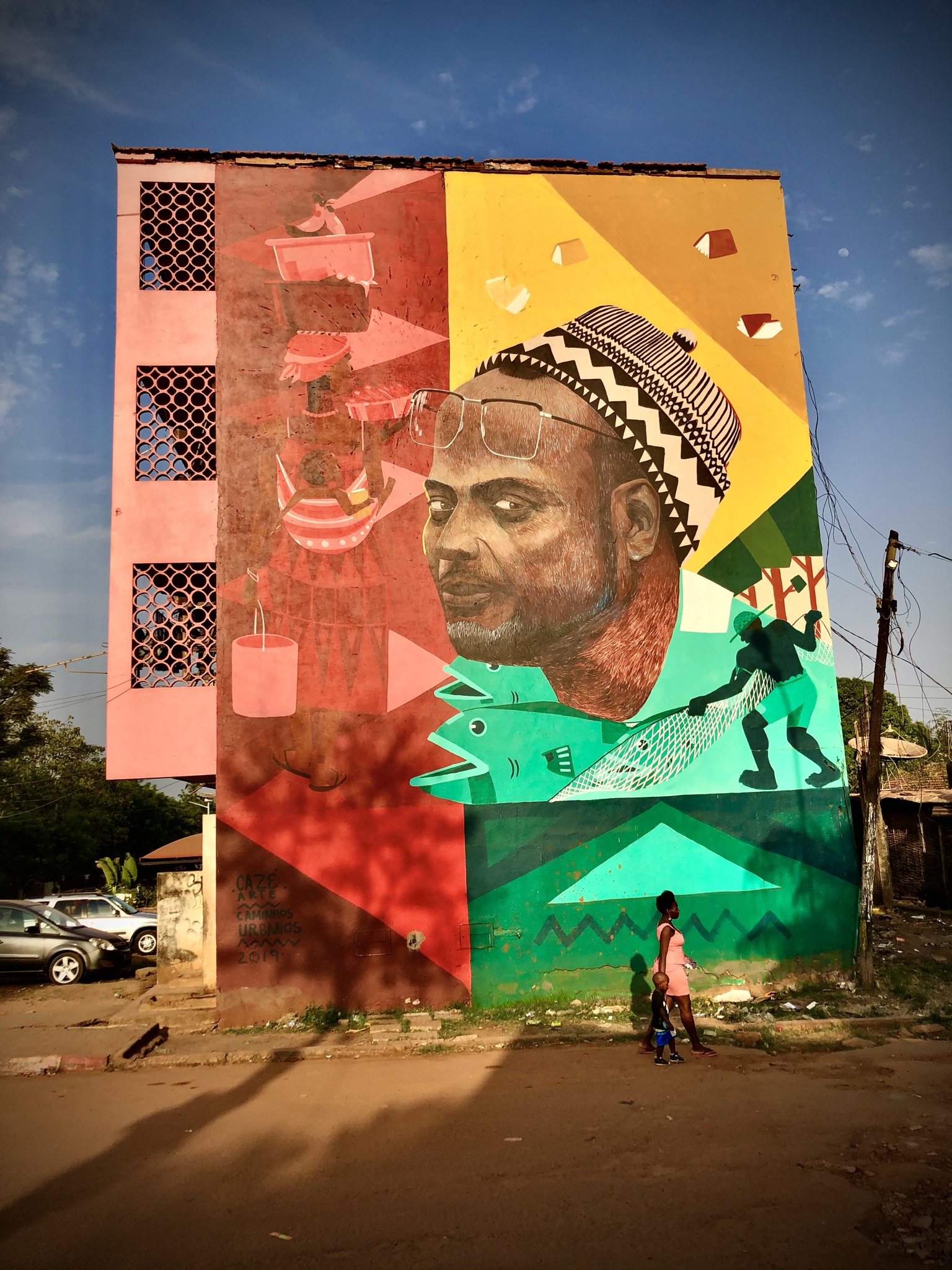
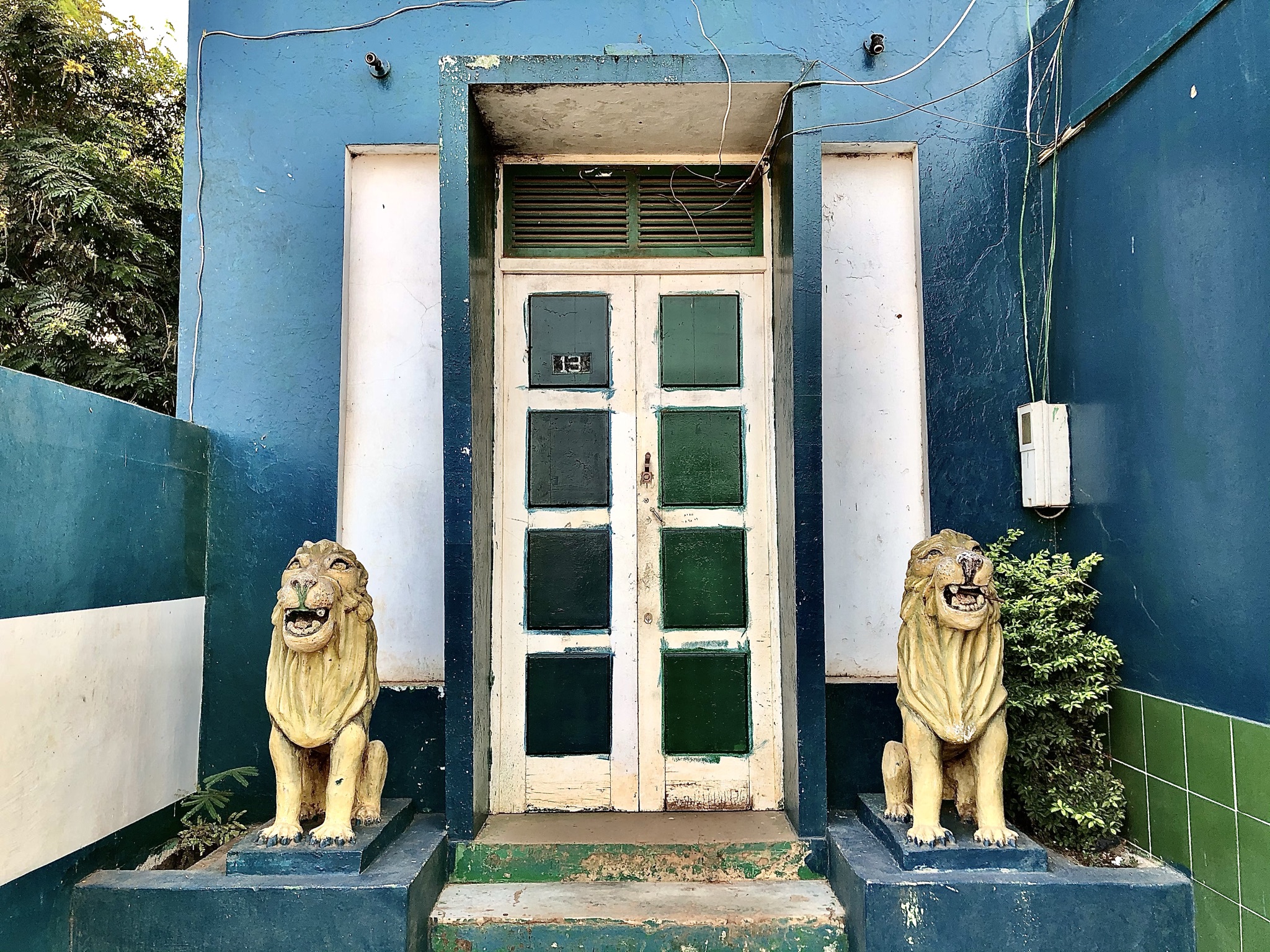
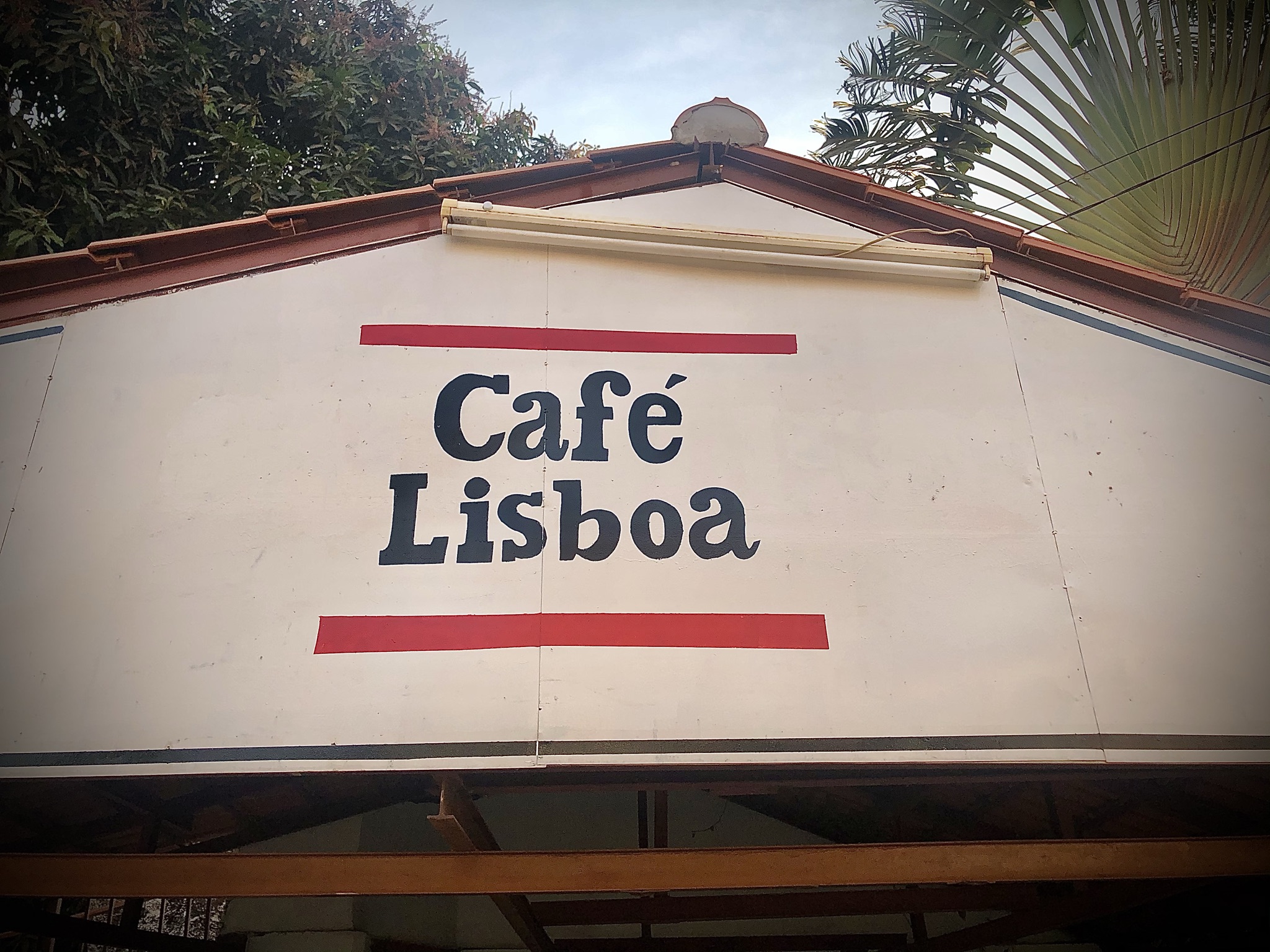
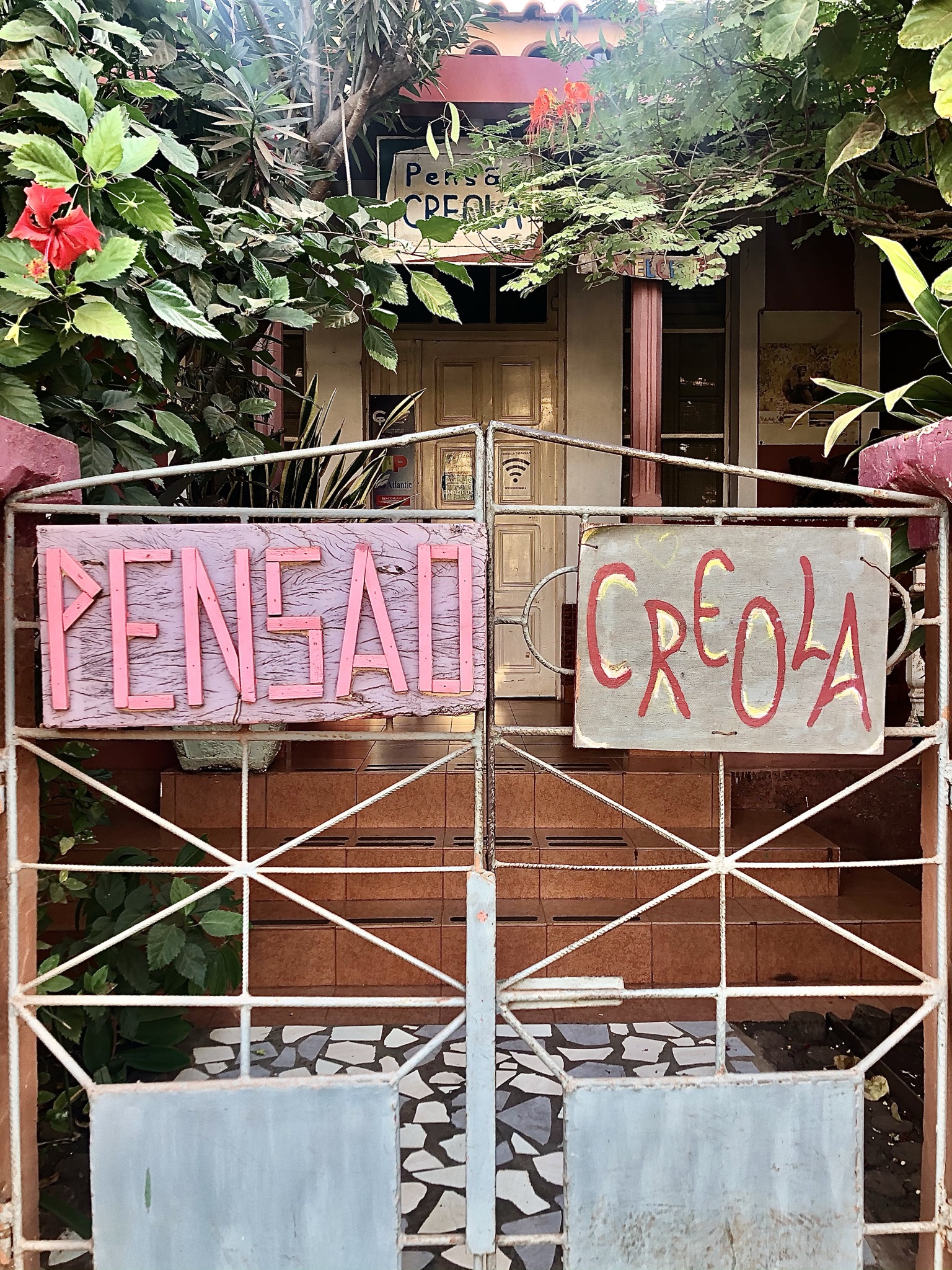
Boas Festas
I had no idea the entire country would converge on the main plaza tonight. Imagine my surprise when the otherwise tranquil Avenida Amílcar Cabral–which would have had tumbleweeds blowing across it earlier in the day, if tumbleweeds existed here–suddenly rivaled Bourbon Street during Mardi Gras. It was actually closer to the crowds of Rio De Janeiro‘s Carnaval if we’re being fair. The people just kept coming, and coming, and coming and coming. By nightfall the sea of people covered every inch of the streets. I would have loved to join the party–even though I don’t like crowds–but definitely not during a pandemic. I was amazed that nobody was wearing a mask. Crazy!
I retired to my room like the velho I am, and fell asleep to firecrackers and the continuous roar of a city in celebration. Feliz Natal!
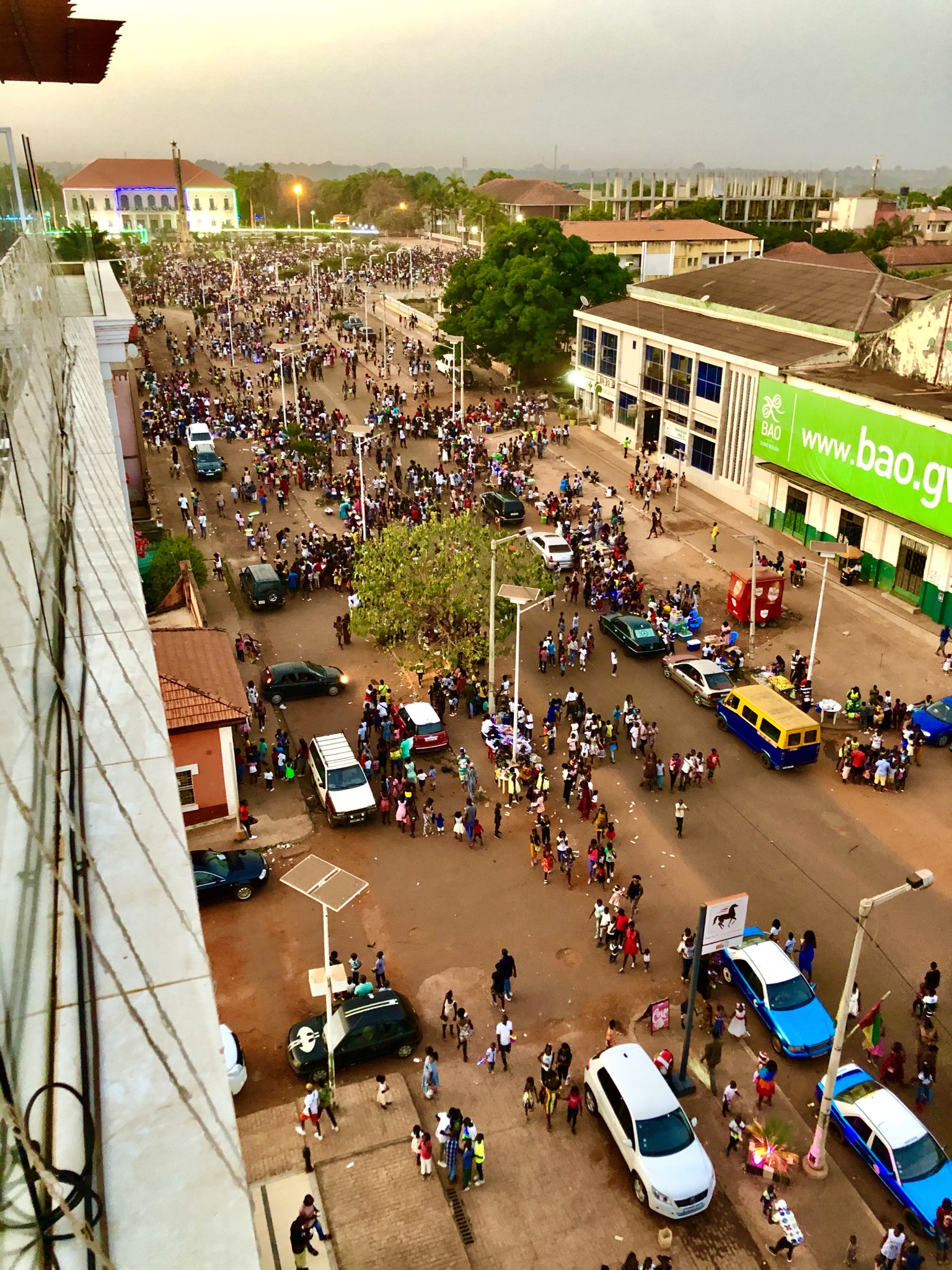
Día Três (Day Three)
I told myself I should stay away from the market, but my walk this morning would lead me smack dab into Mercado Bandim. But not before exploring a few residential neighborhoods, passing by some pretty churches and observing a normal, everyday morning in Bissau. The scenery was so enjoyable, from passing women with bunches of bananas on their heads, to frolicking goats and the occasional pig scurrying by as if he was late for a very important appointment…and of course one of my favorite scenes: seeing men walk by with two or three chickens in each hand. I did feel for the chickens though, who were still alive and acting pretty calm considering they were being carried by their little chicken-ankles. How uncomfortable! The sights, sounds and smells of Bissau were like no other.
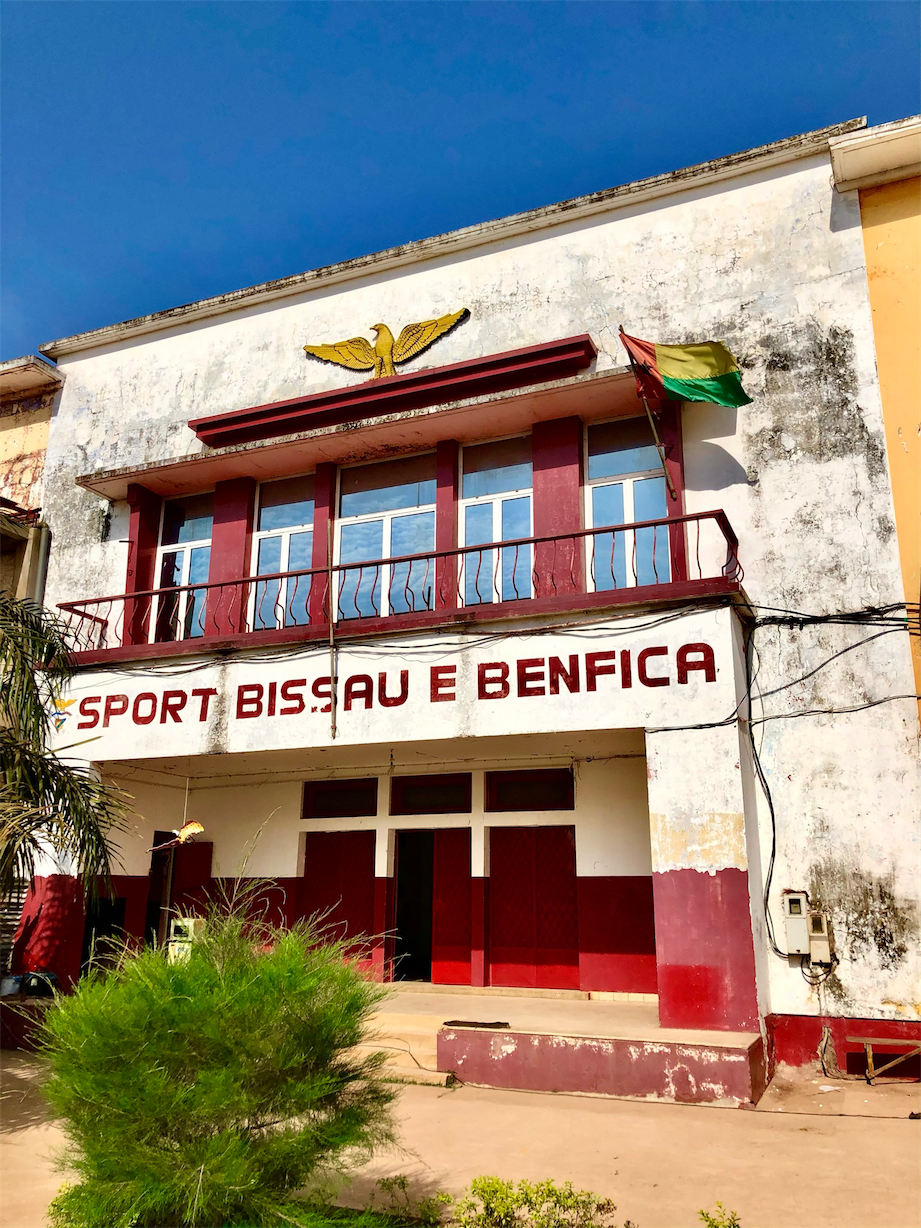
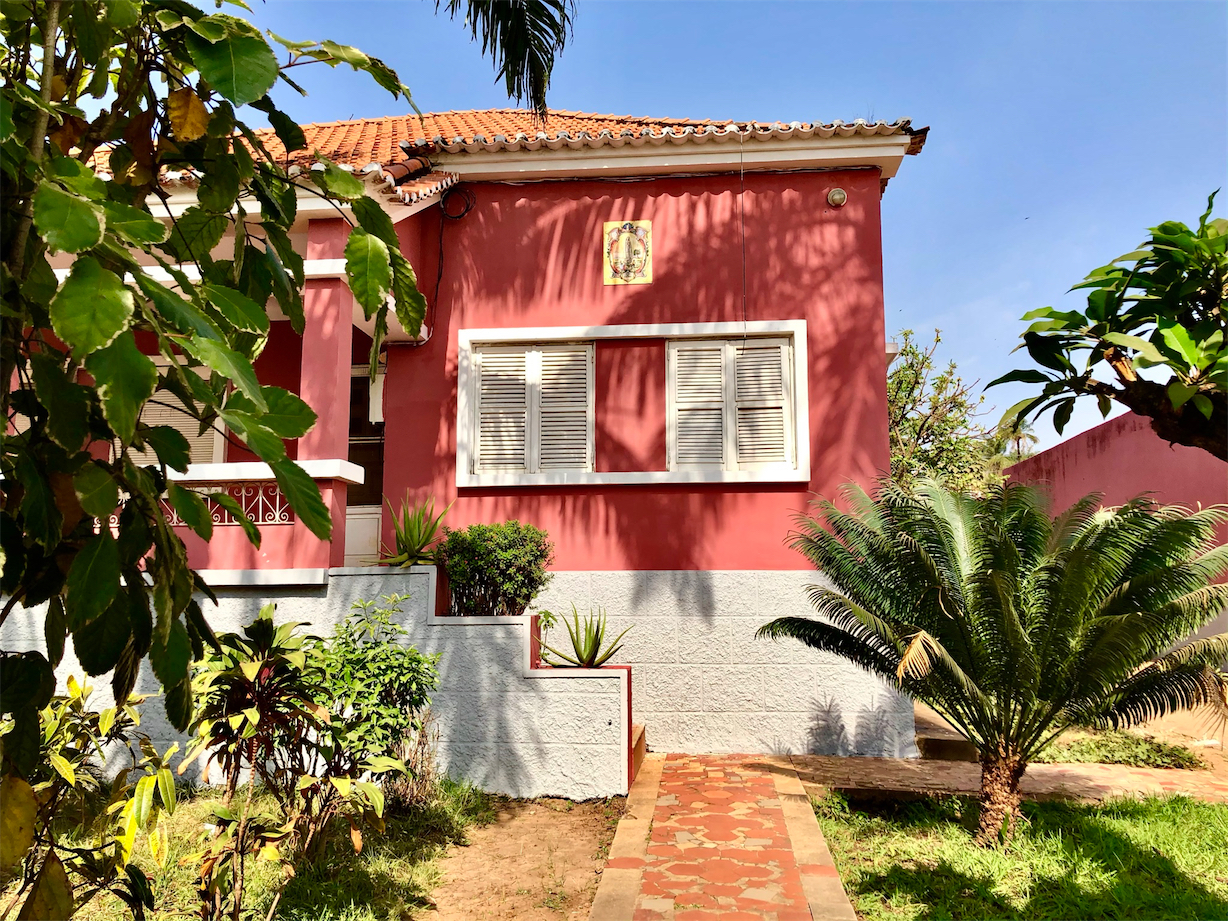
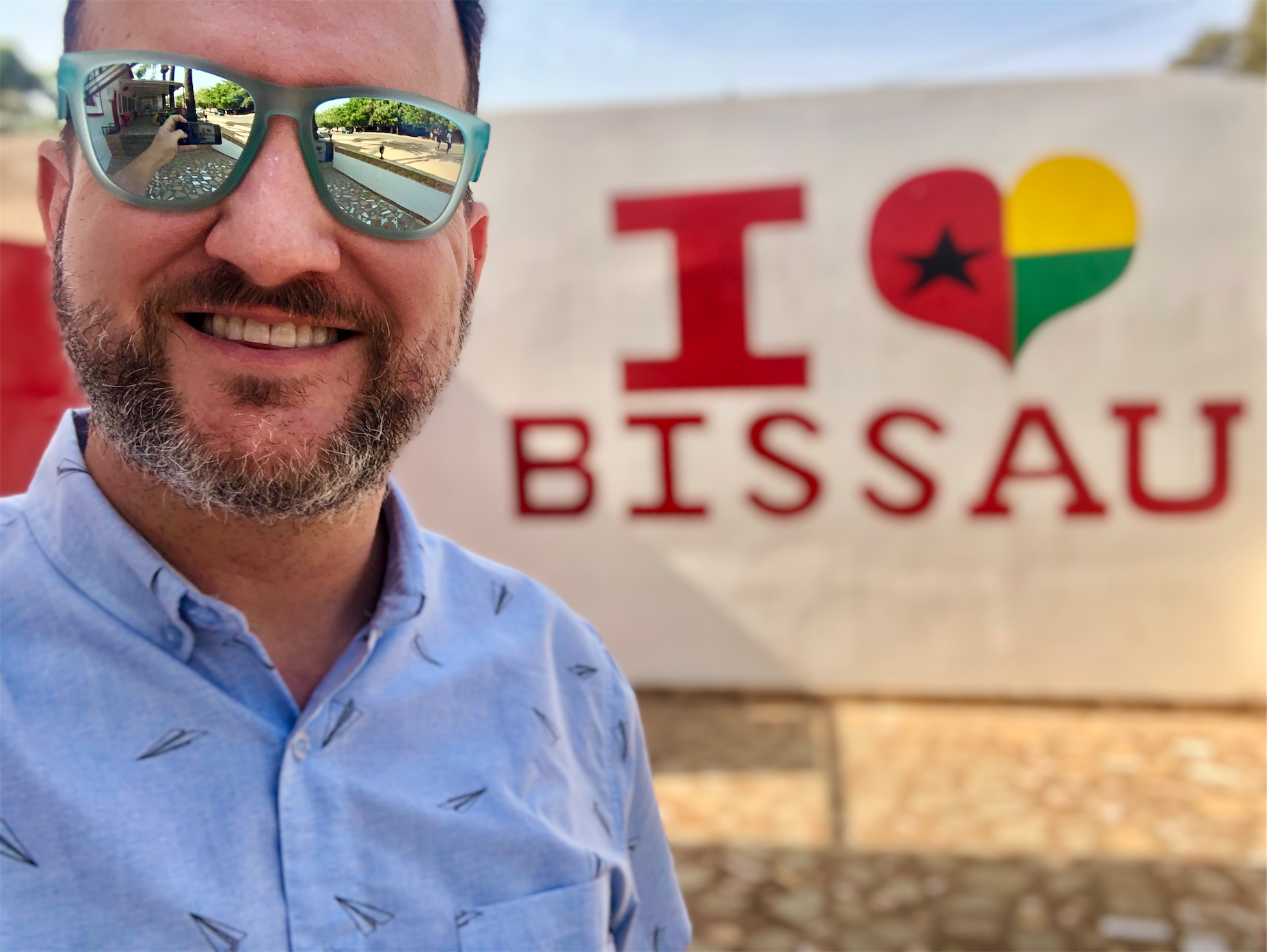
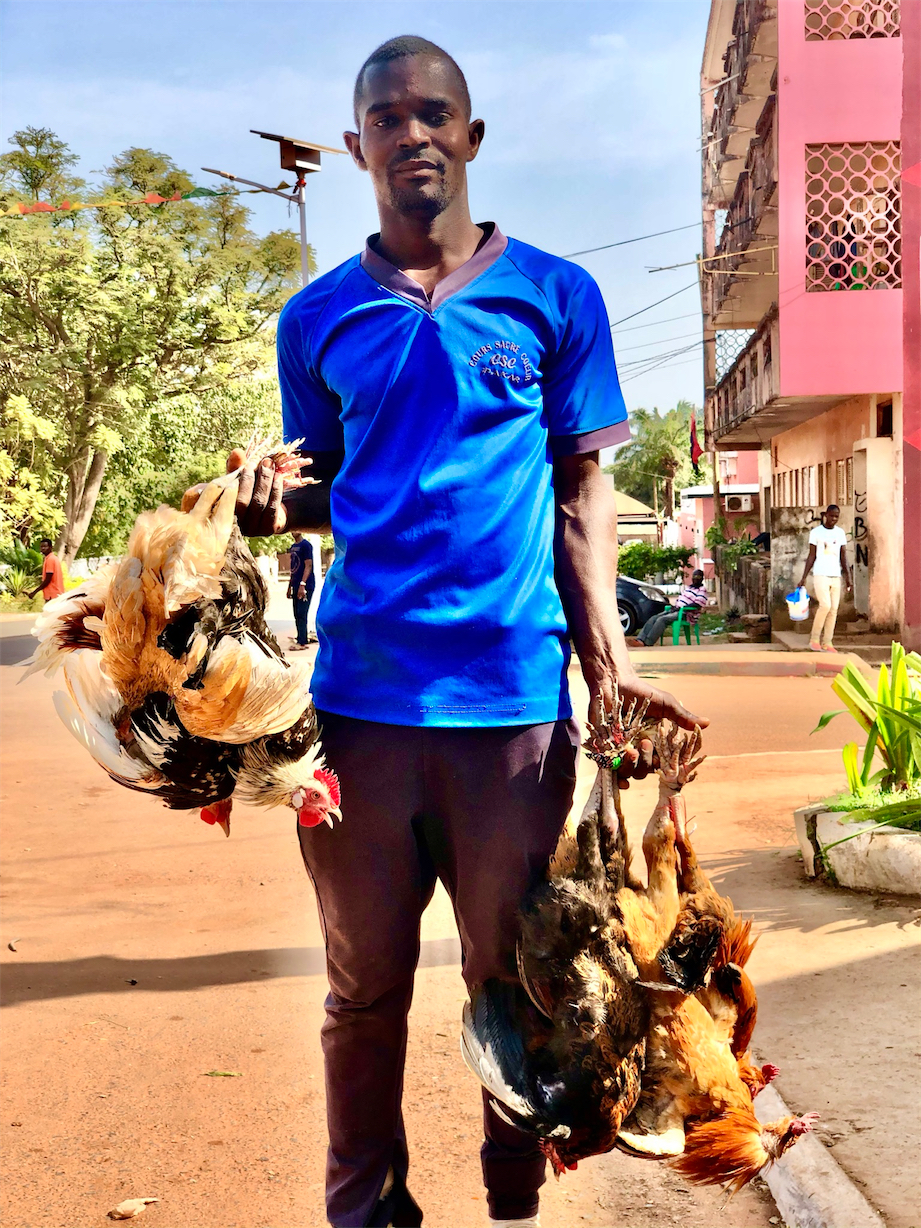
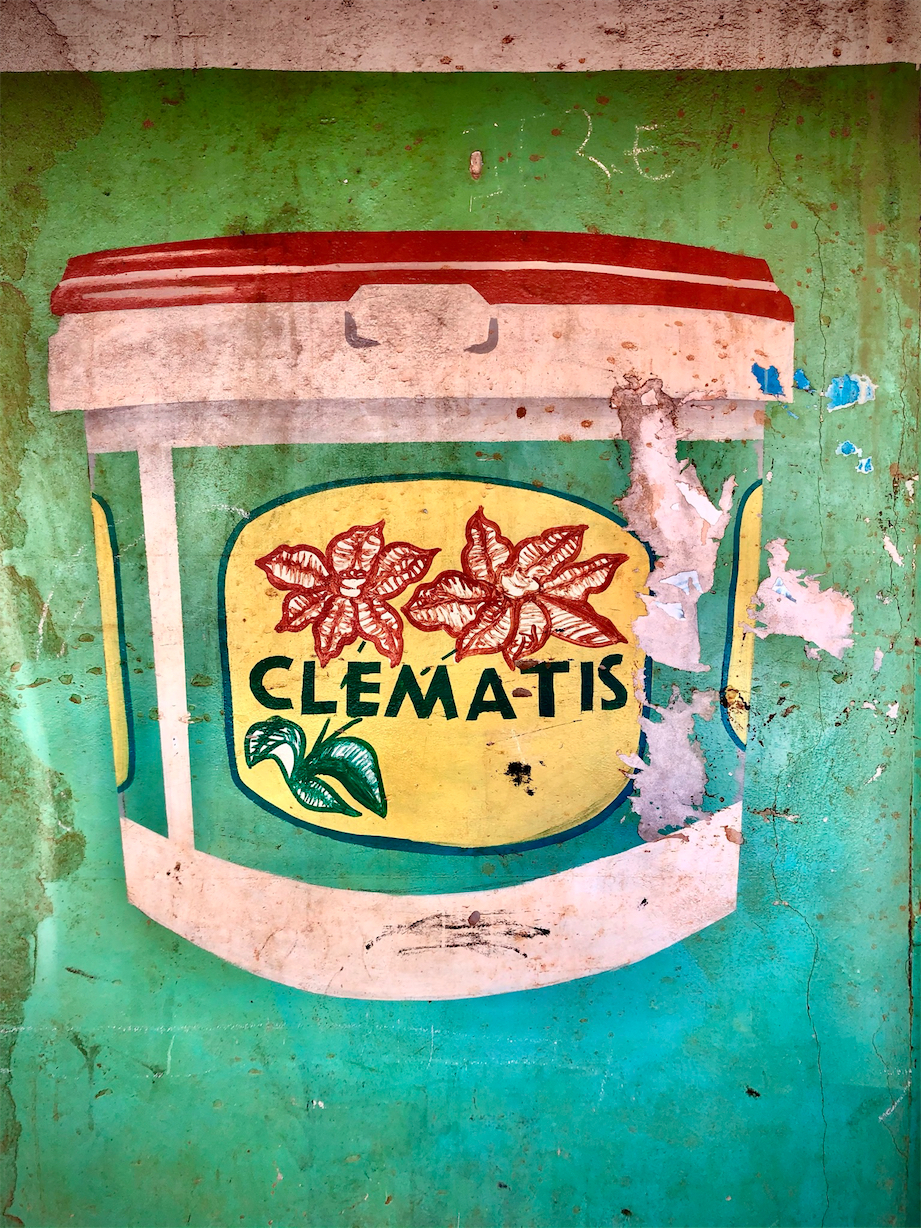
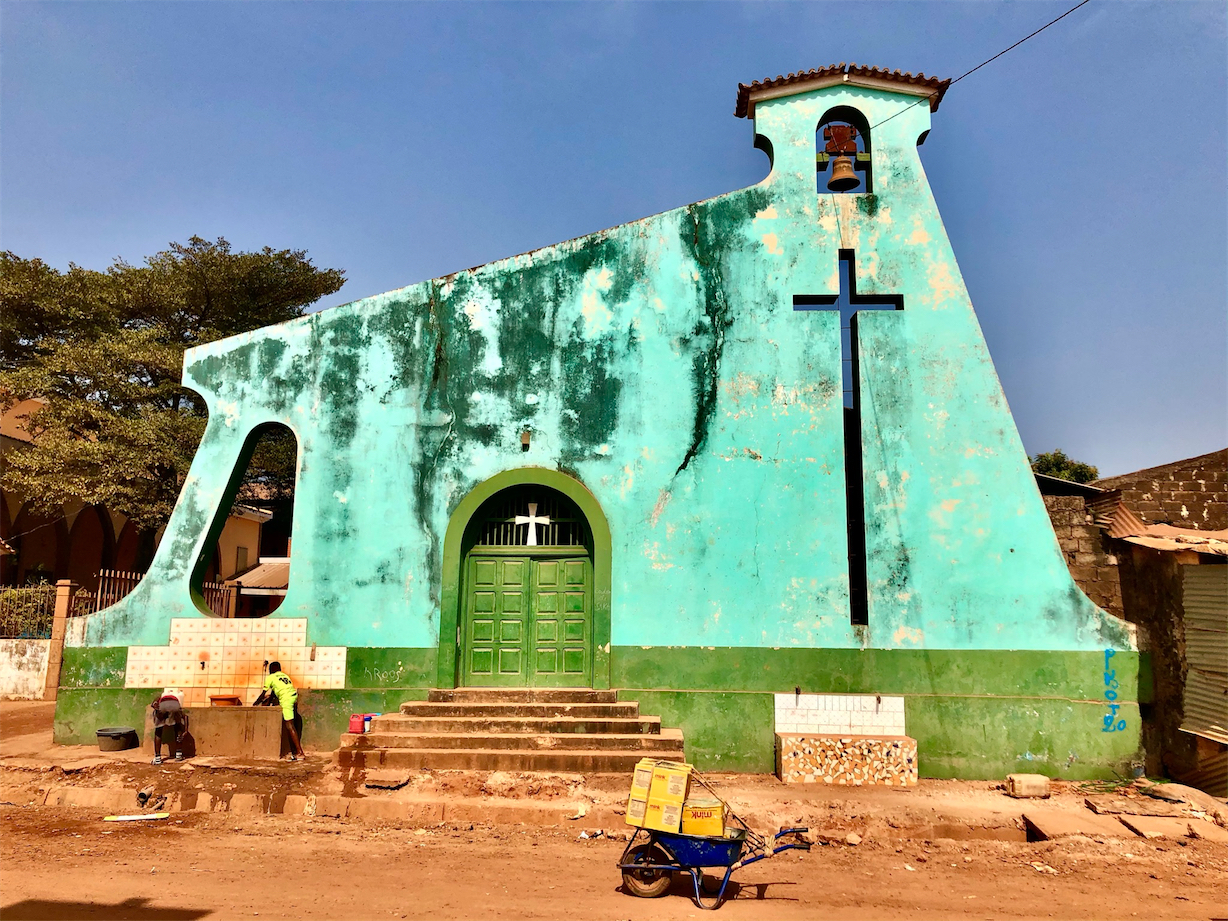
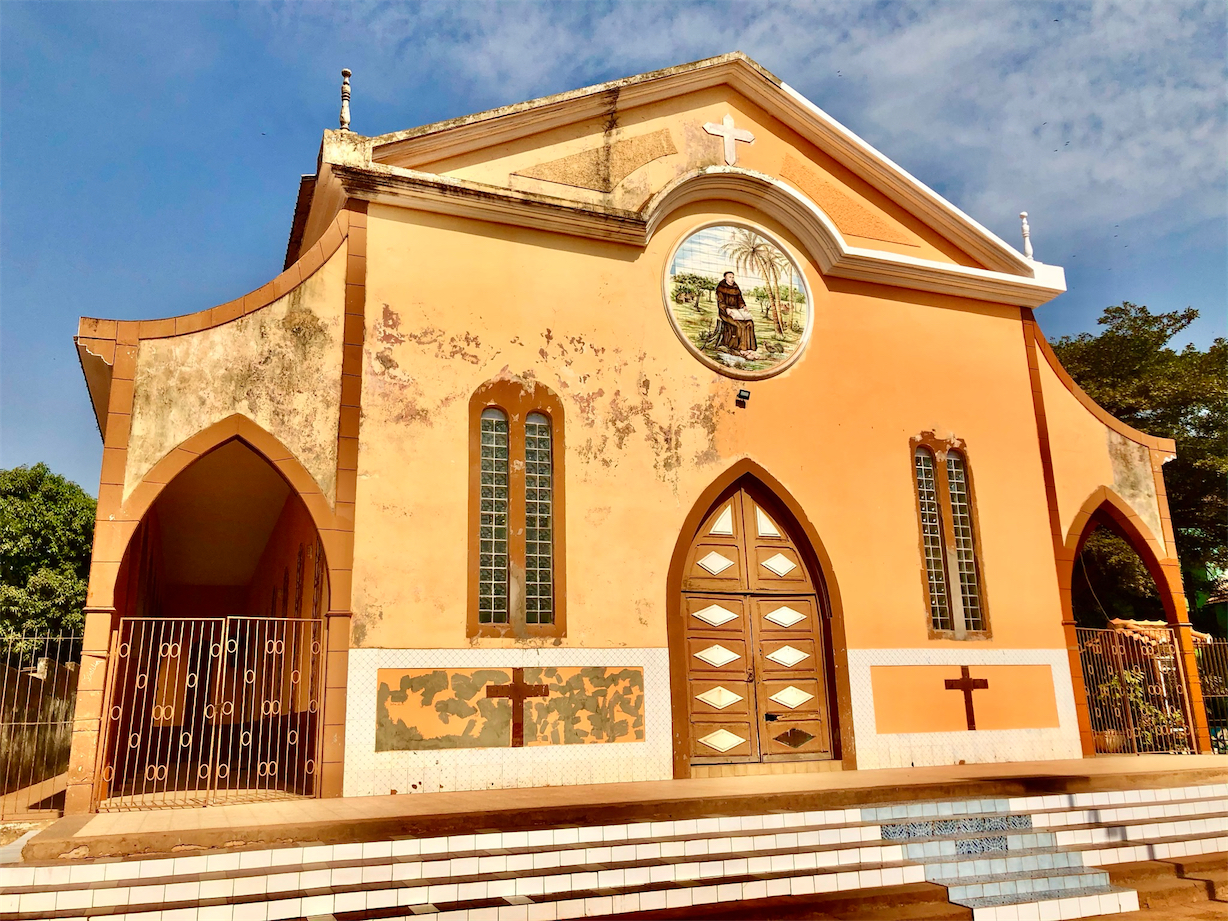
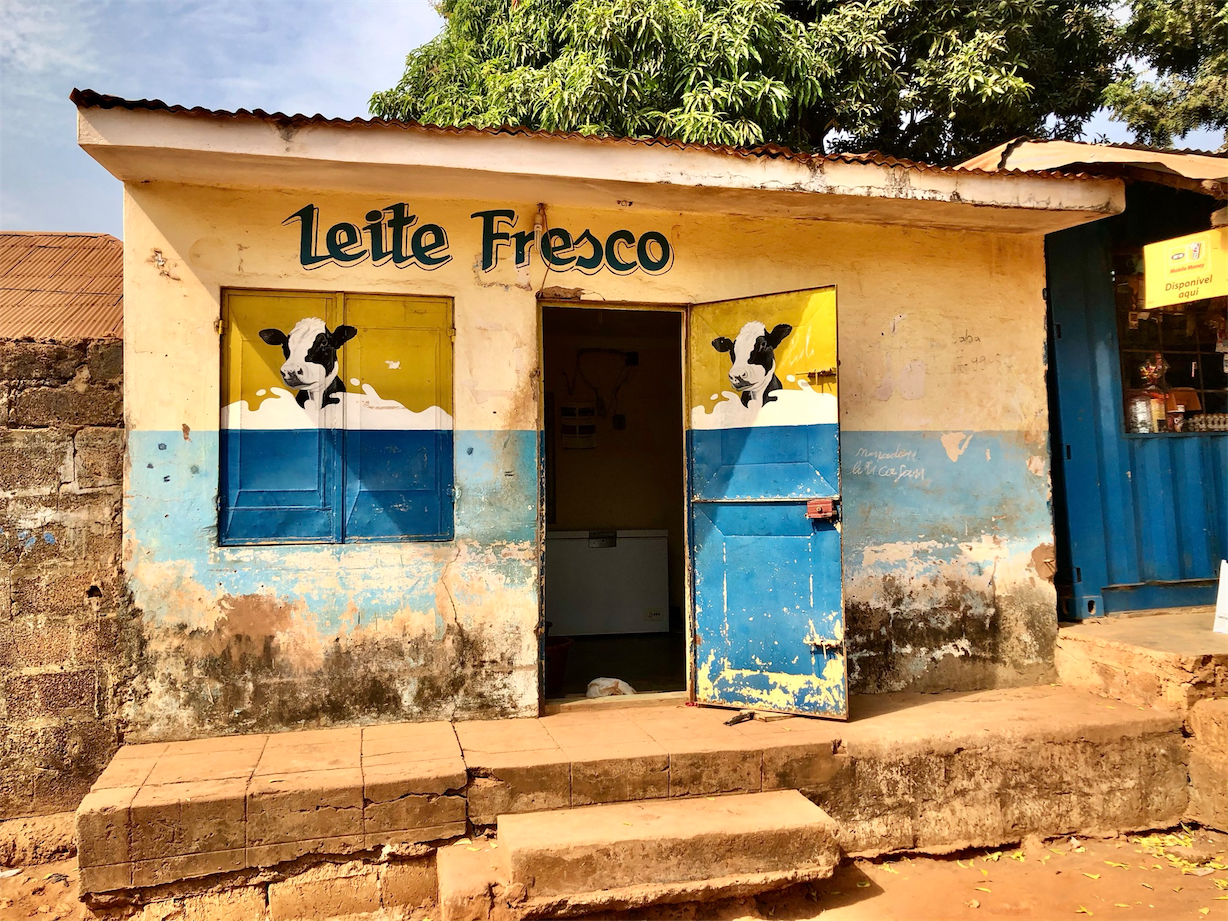
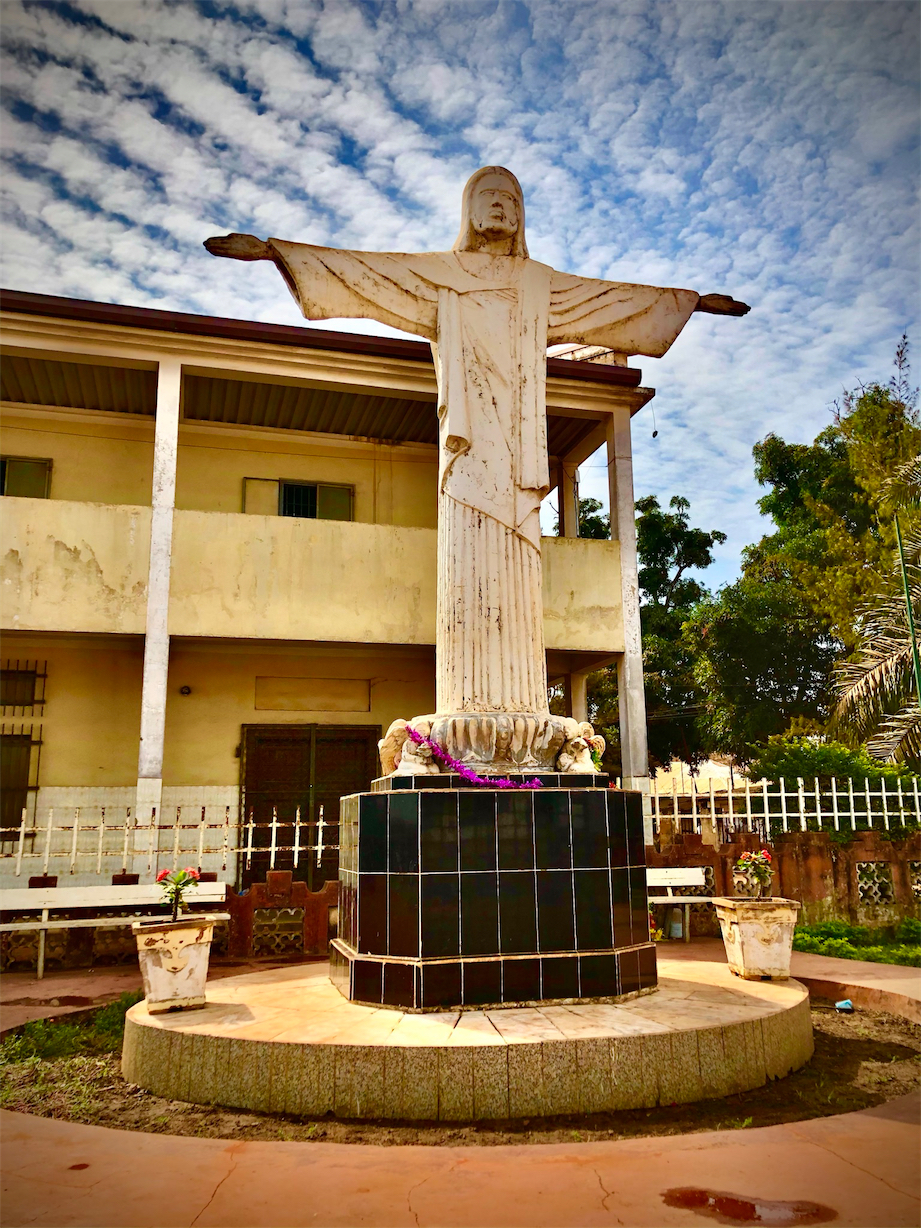
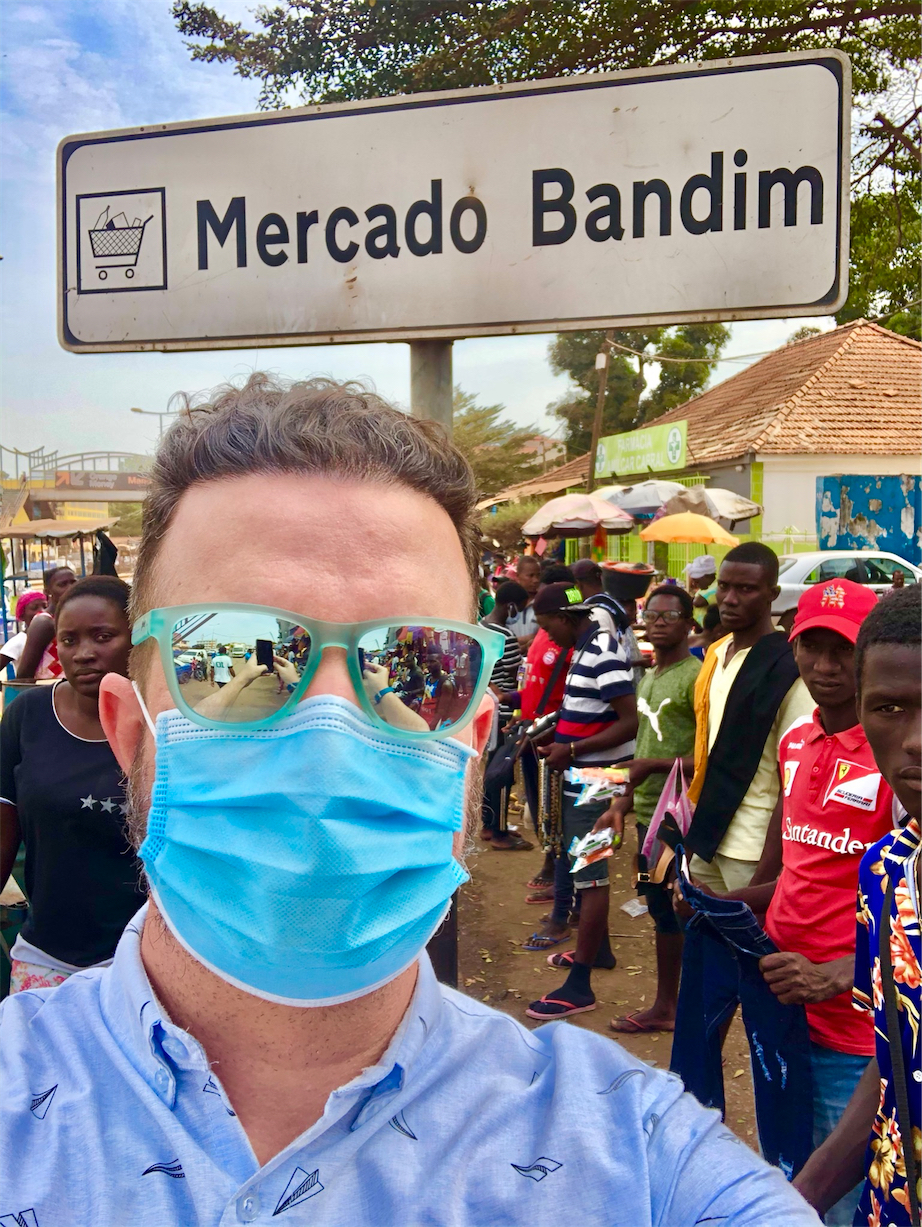
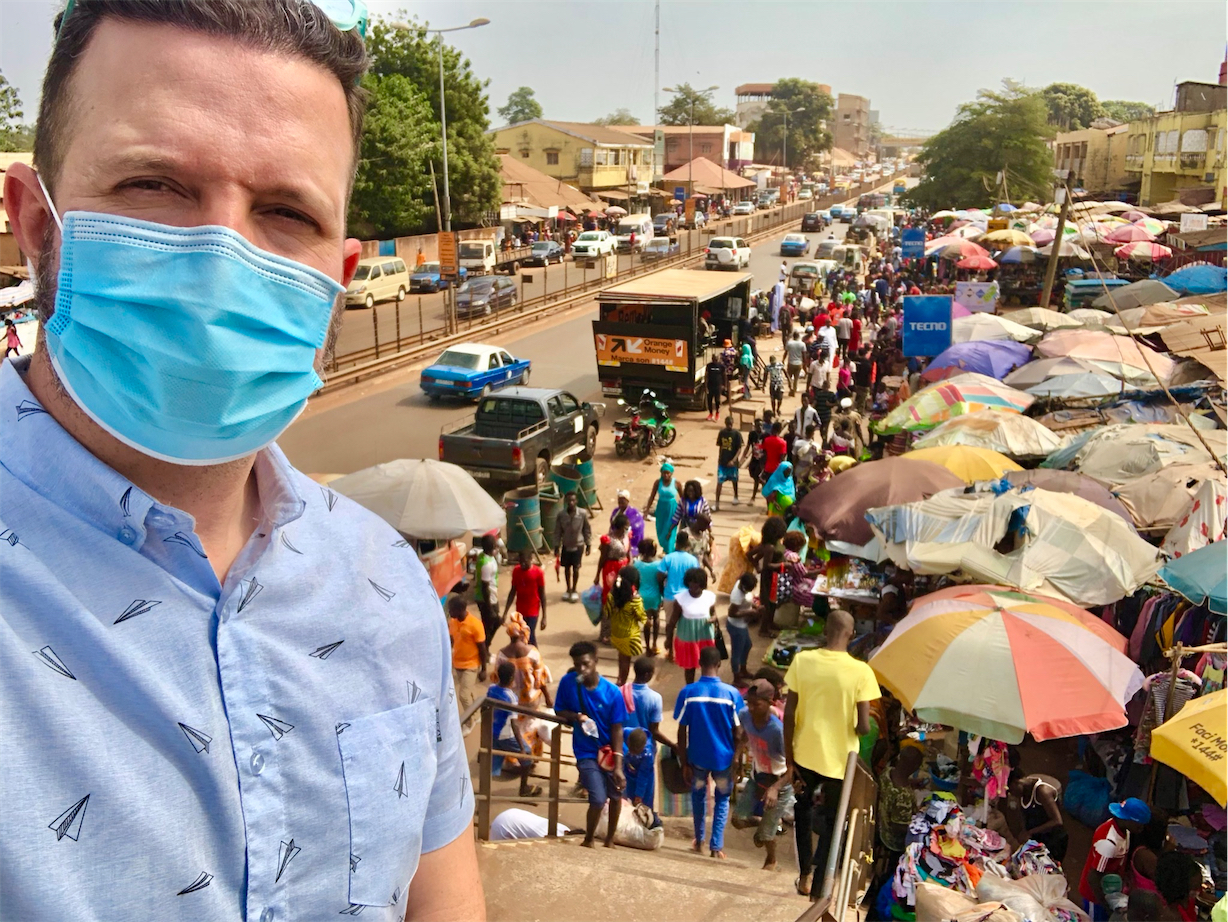
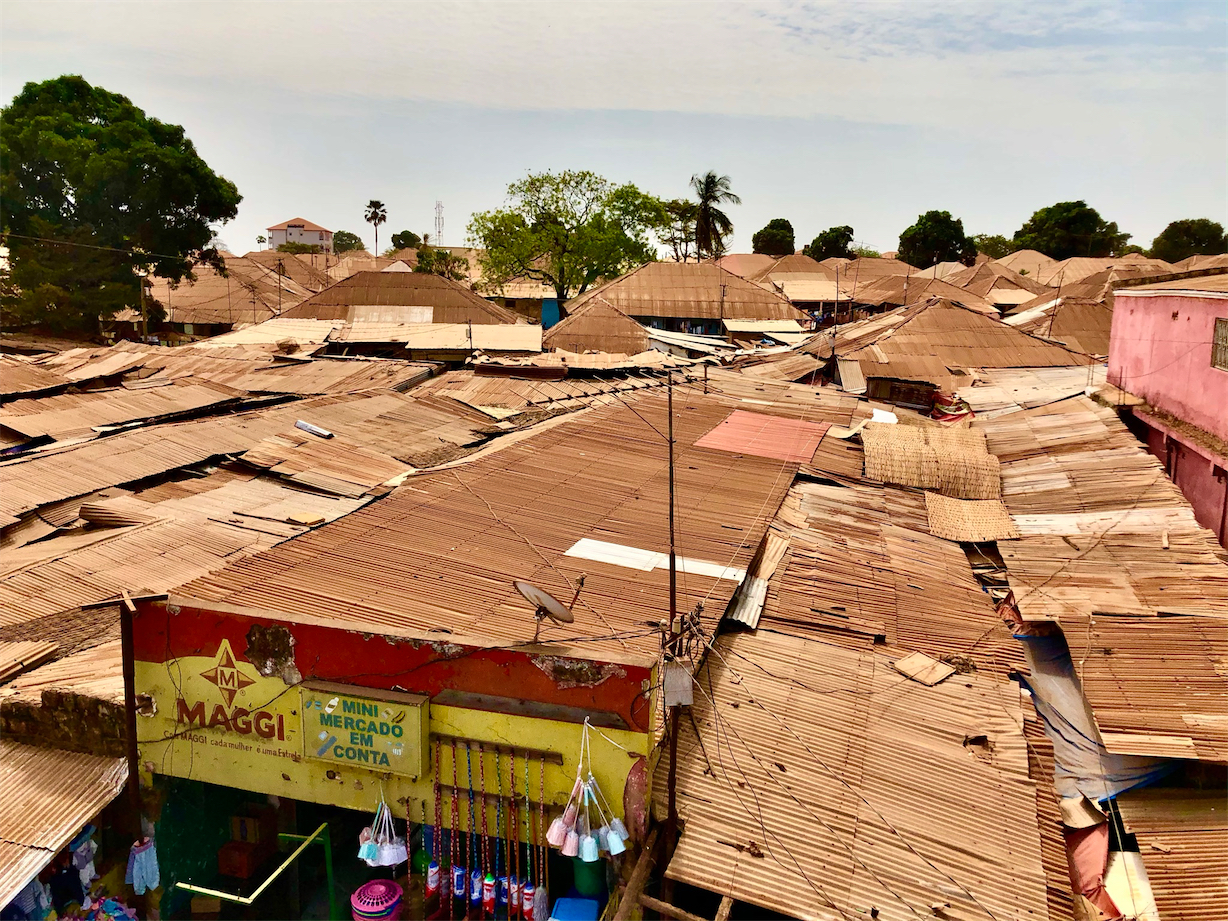
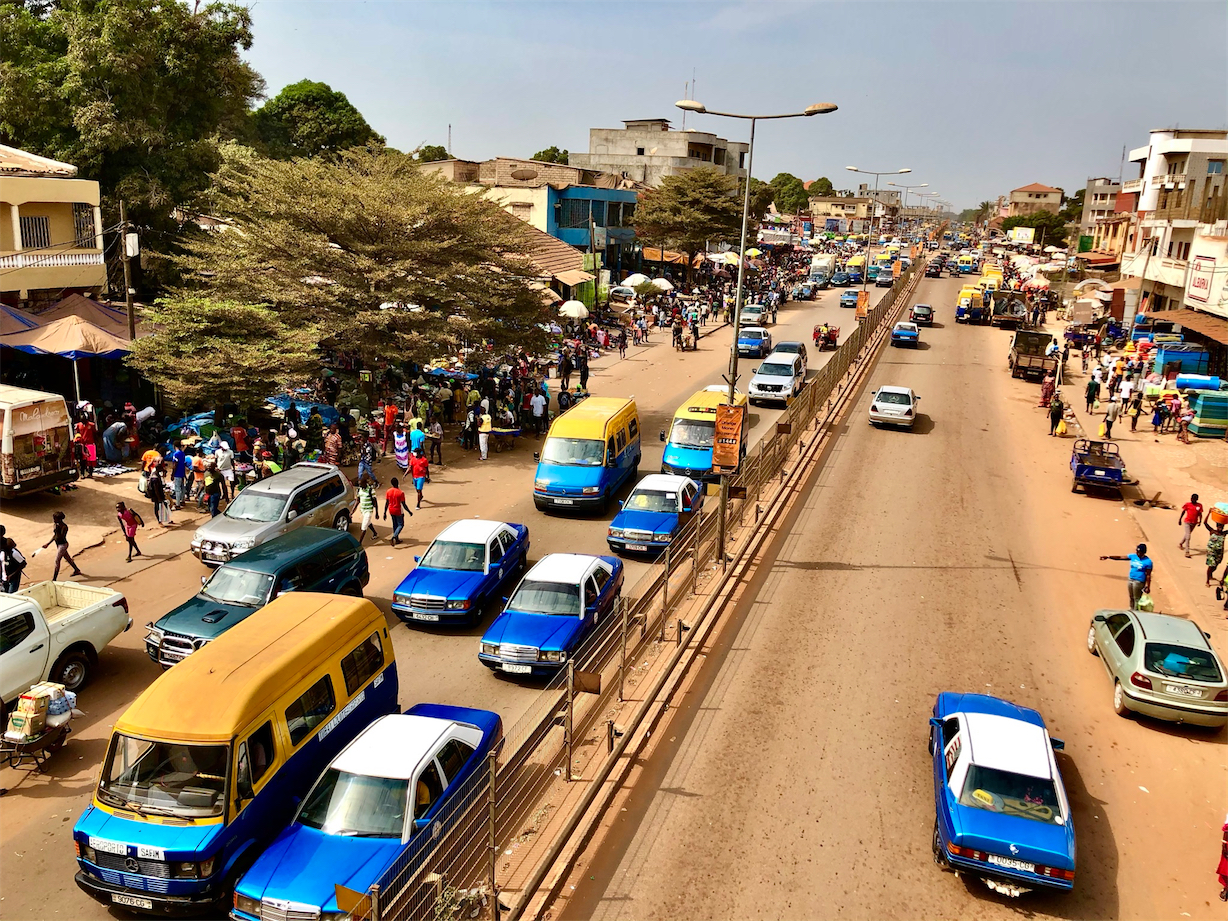
Hot Wheels
We have to talk about the taxis. Why do I care about the taxis? Well, I am intrigued only because of the thousands of taxis I’ve seen–they are everywhere, and more common than normal, privately owned cars–every single one of them are similar-year Mercedes-Benz cars. Every. Single. One. Not one Toyota, Kia, Nissan, Renault or Fiat. All of them, Mercedes-Benz, in a beautiful two-tone color scheme: a metallic blue on the bottom half, with white on top. They looked like Hot Wheels with their sparkly-blue bodies, although many of these taxis looked like they’d seen better days.
I Have Questions: Who decided only Mercedes-Benz would be the official taxi of Bissau? They all look like they’re from the 1980s. What happened? Did the government broker some amazing deal in 1987 for 30,000 Mercedes-Benz 190Es? And how the heck did they acquire so many luxury cars in an otherwise super-impoverished country? One would think Toyota Tercels or Nissan Sentras or Ford Escorts might be more attainable. How and why did they get all those Benzes and no other brand of car for their taxis? This concludes this episode of I Have Questions.
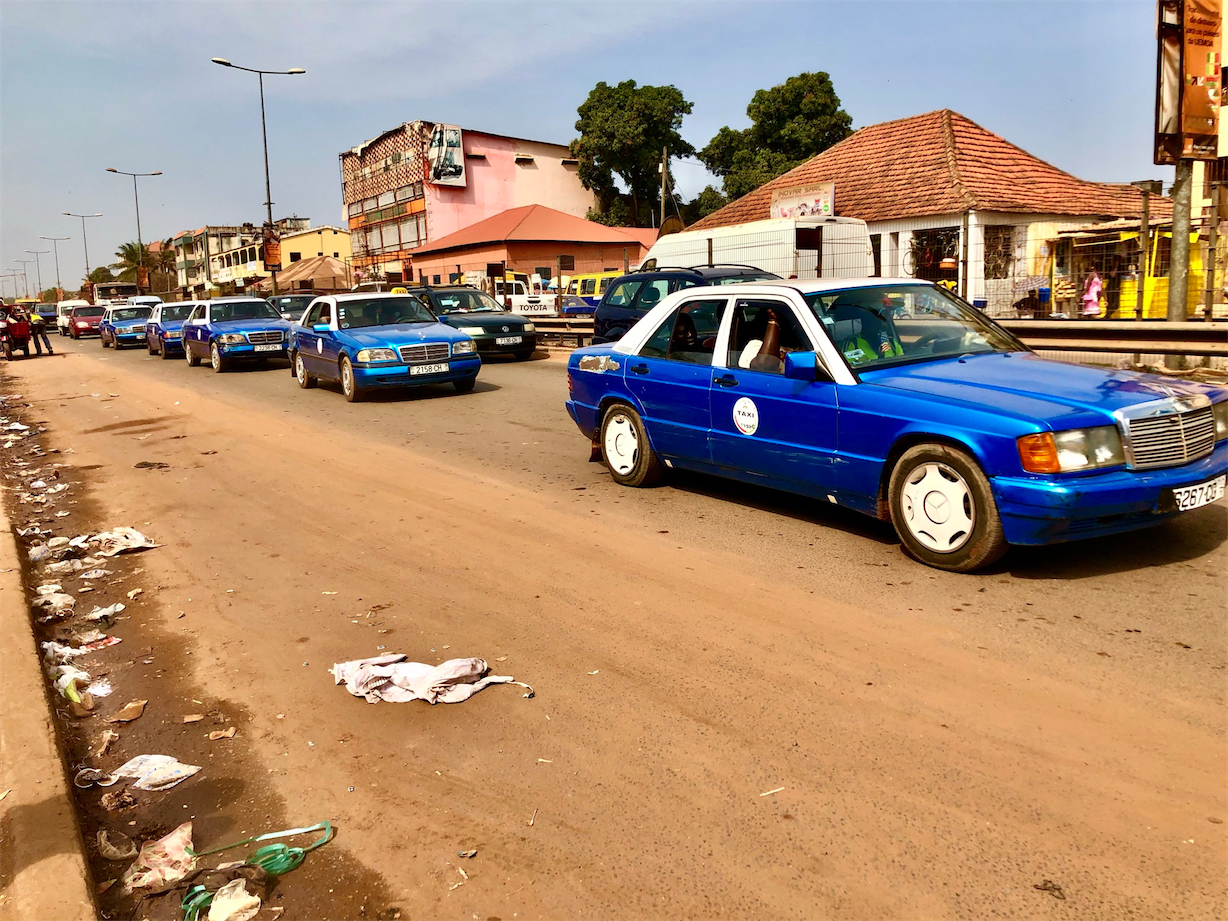
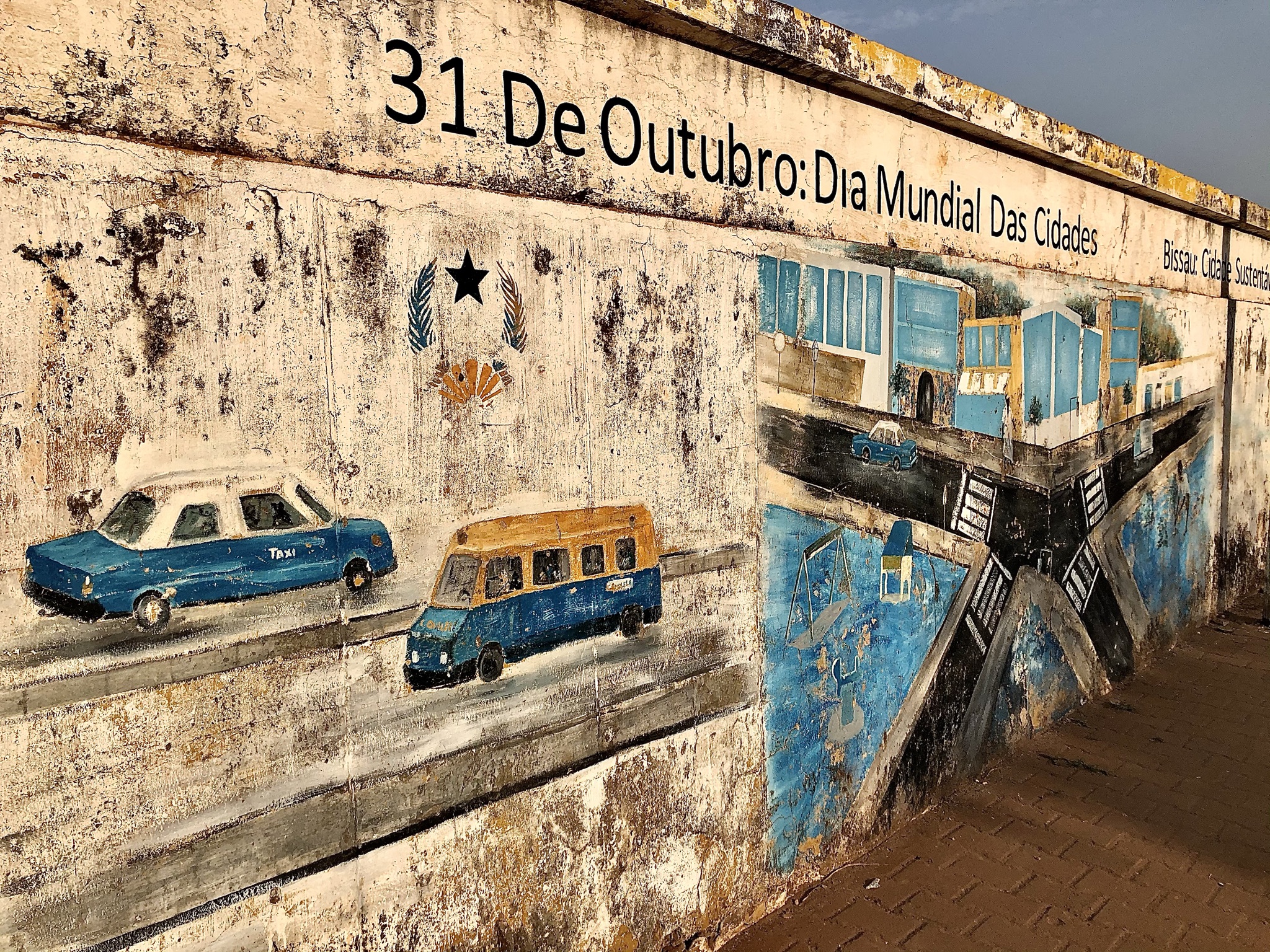
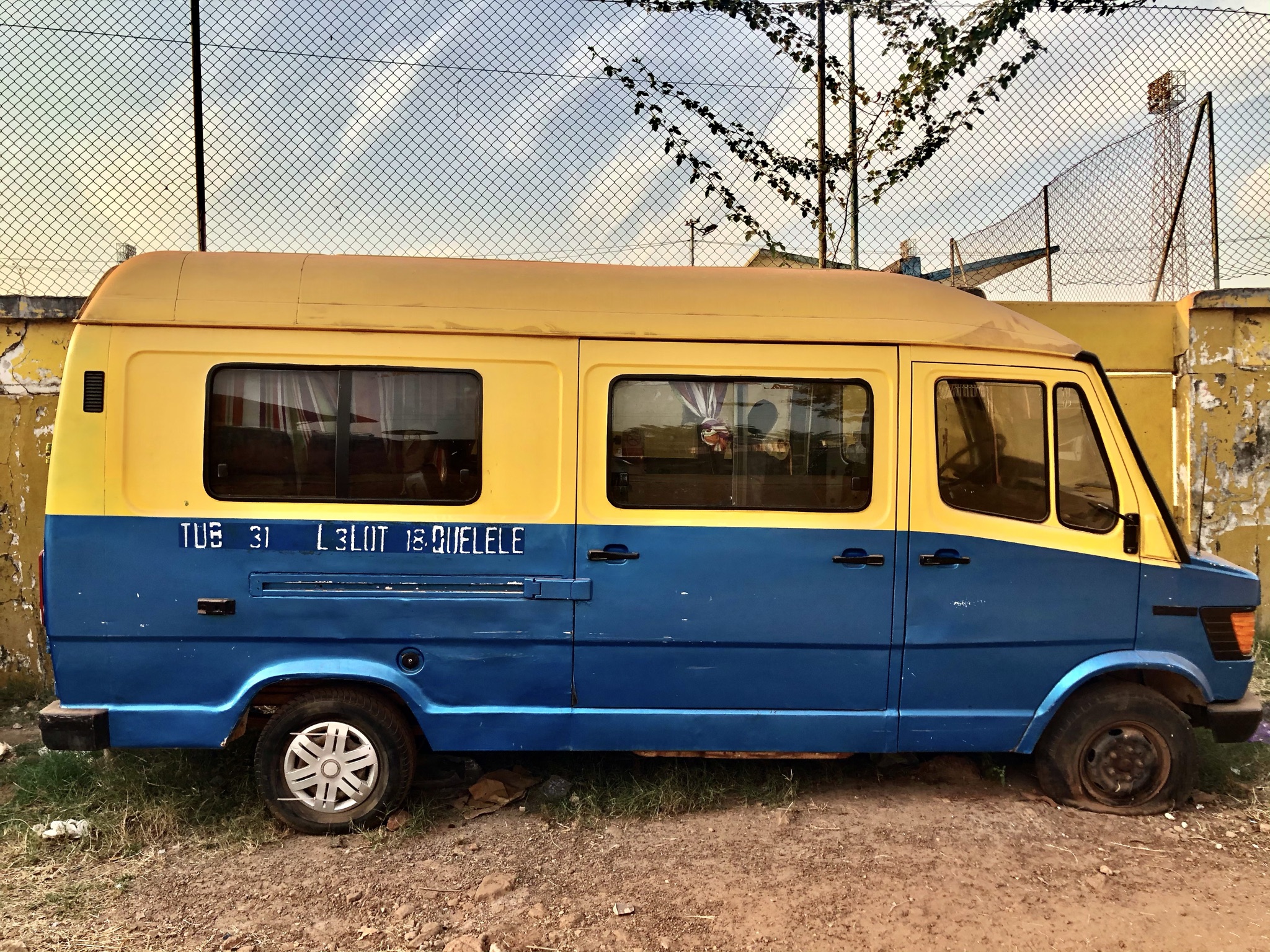
The Walk Home
On the way back to my hotel, I stopped by The Ceiba once again for a natural juice – this time two: a lanranja (orange) and melancia (watermelon). Shout out to my bartender Ricardo, who I’ve gotten to know well. Then, I admired more awesome (residential) Art Deco structures before stopping into the Hôtel Império for some Pasteis de Nata. Not as good as the ones in Lisbon, but I still enjoyed them. I also was a little daring and tried a new fruit juice I’d never heard of: veludo, which translates to “velvet.” I had to Google it, and I’m still not sure what kind of fruit it is. It wasn’t bad. It wasn’t great either, but I’m glad I tried it.
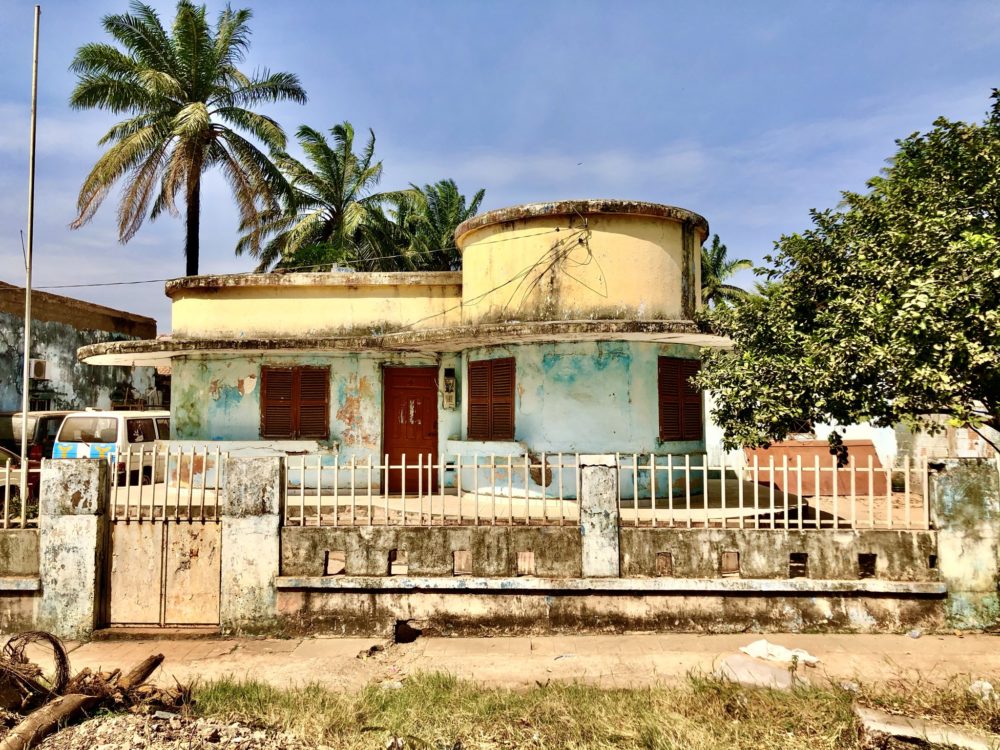
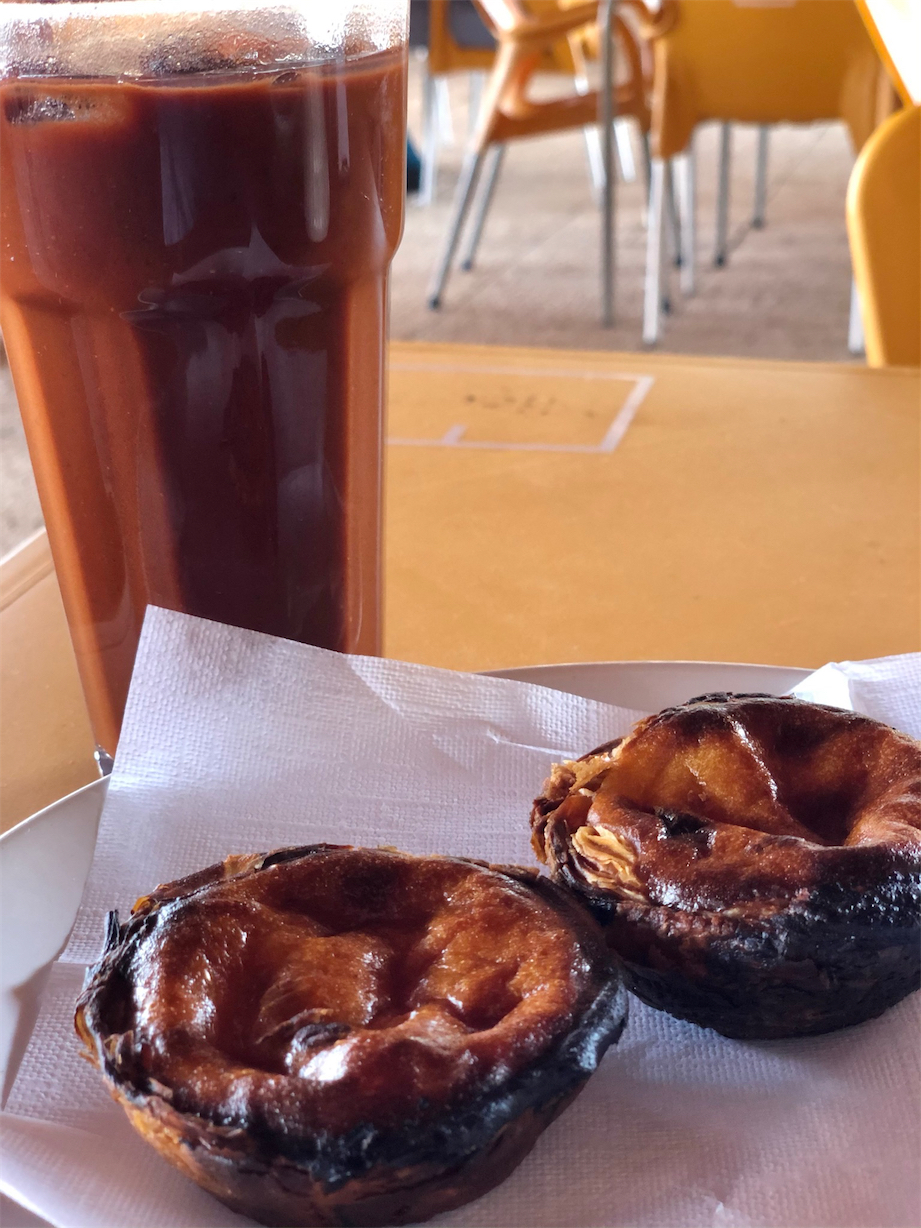
O Cinêma (The Movie Theater)
Since arriving in Bissau four days ago, I’ve been enamored with the old cinema located directly across from my hotel. I did a Google search for Cine Udib and it seems I’m not the only fan. The building boasts simple, but sexy Art Deco lines and curves – a little conservative as Art Deco goes, but if you pay attention, you’ll enjoy the subtle curves and grooves. The main building is missing the entire roof and the facade’s beauty is covered by a billboard. I was actually able to go inside the structure, as the city’s main Corona Virus testing center was operating here. How lucky was I?!
UDIB is an acronym for União Desportiva Internacional. (Not sure why the “B” is there though!)
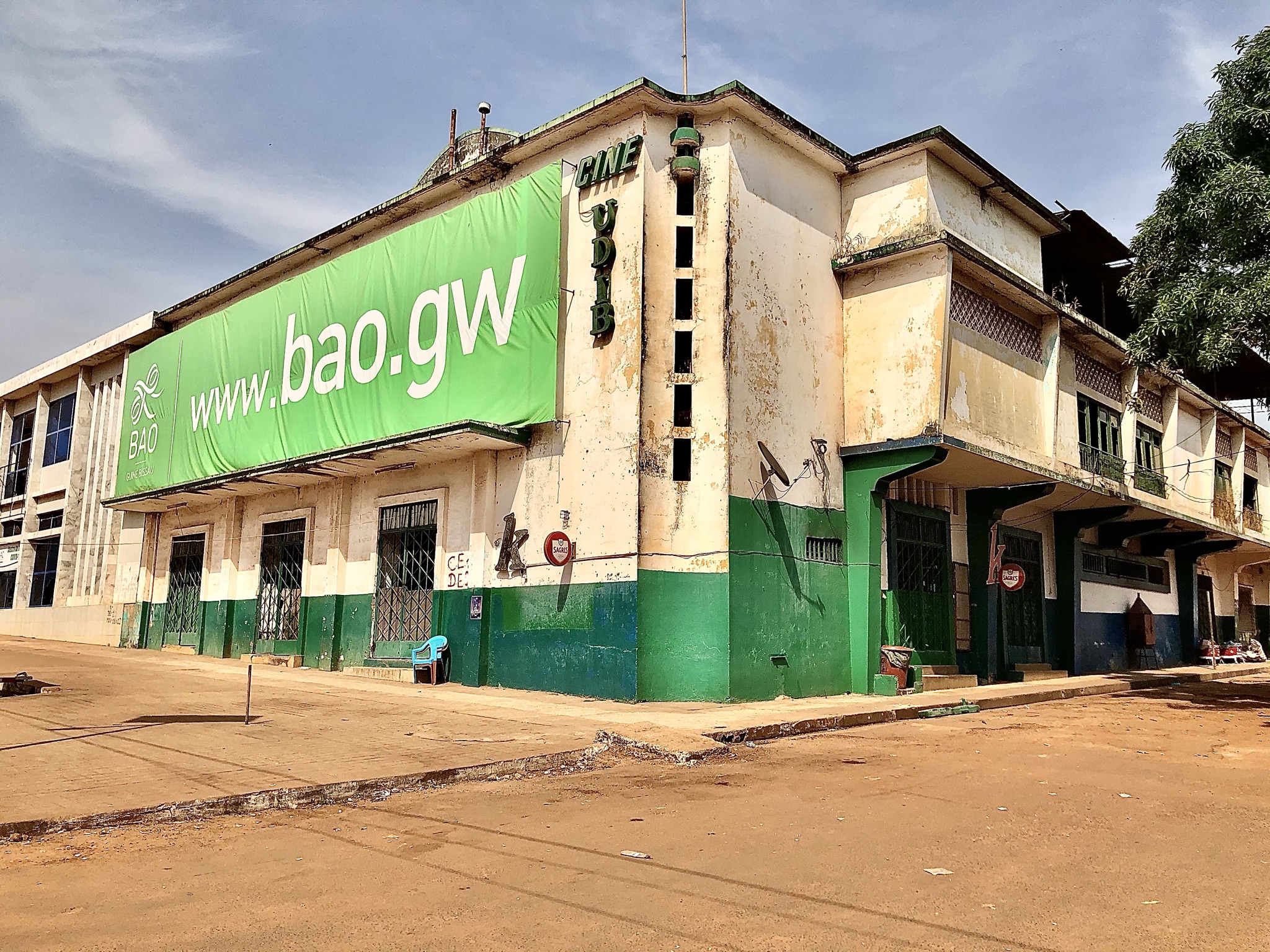
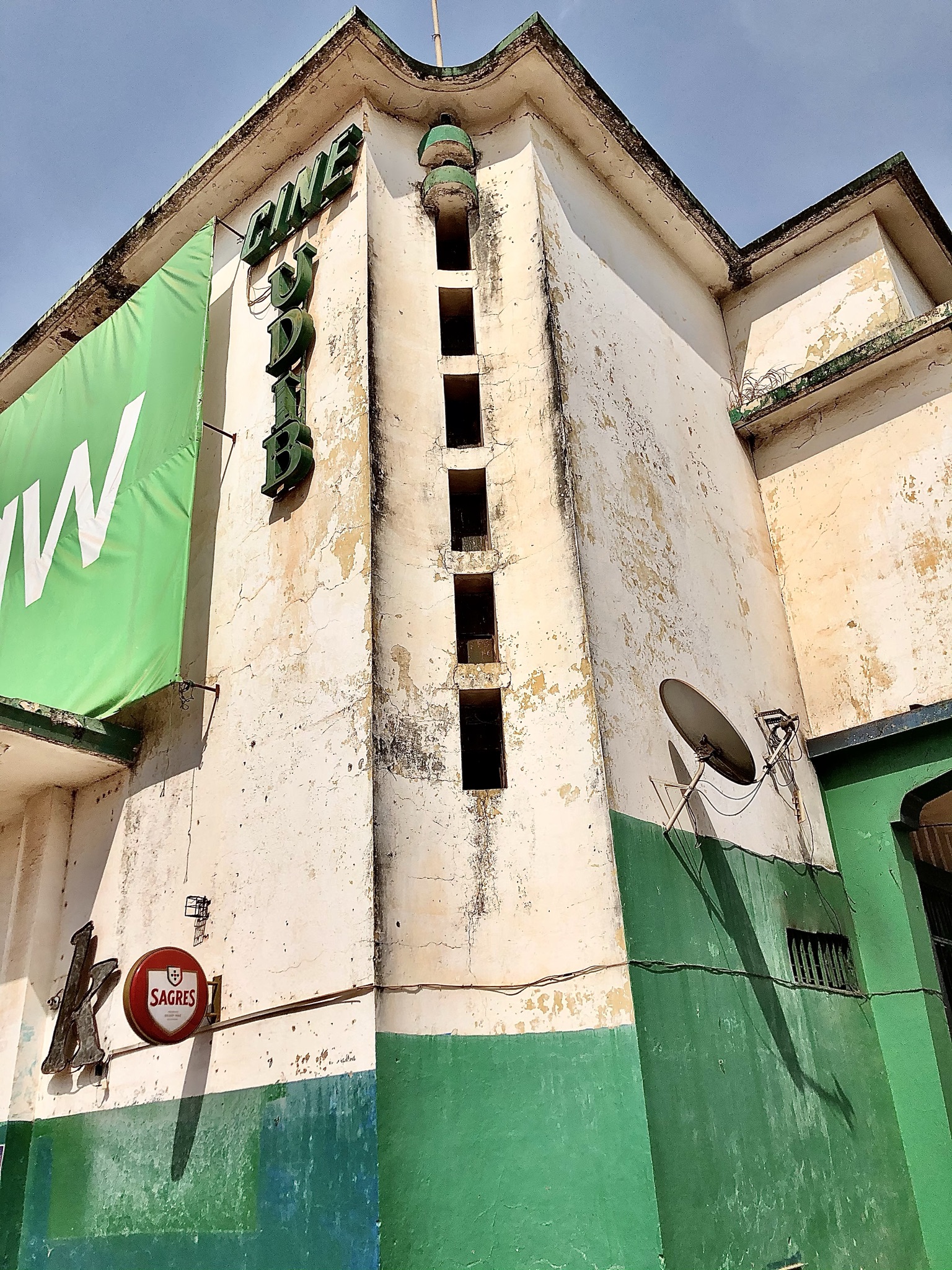
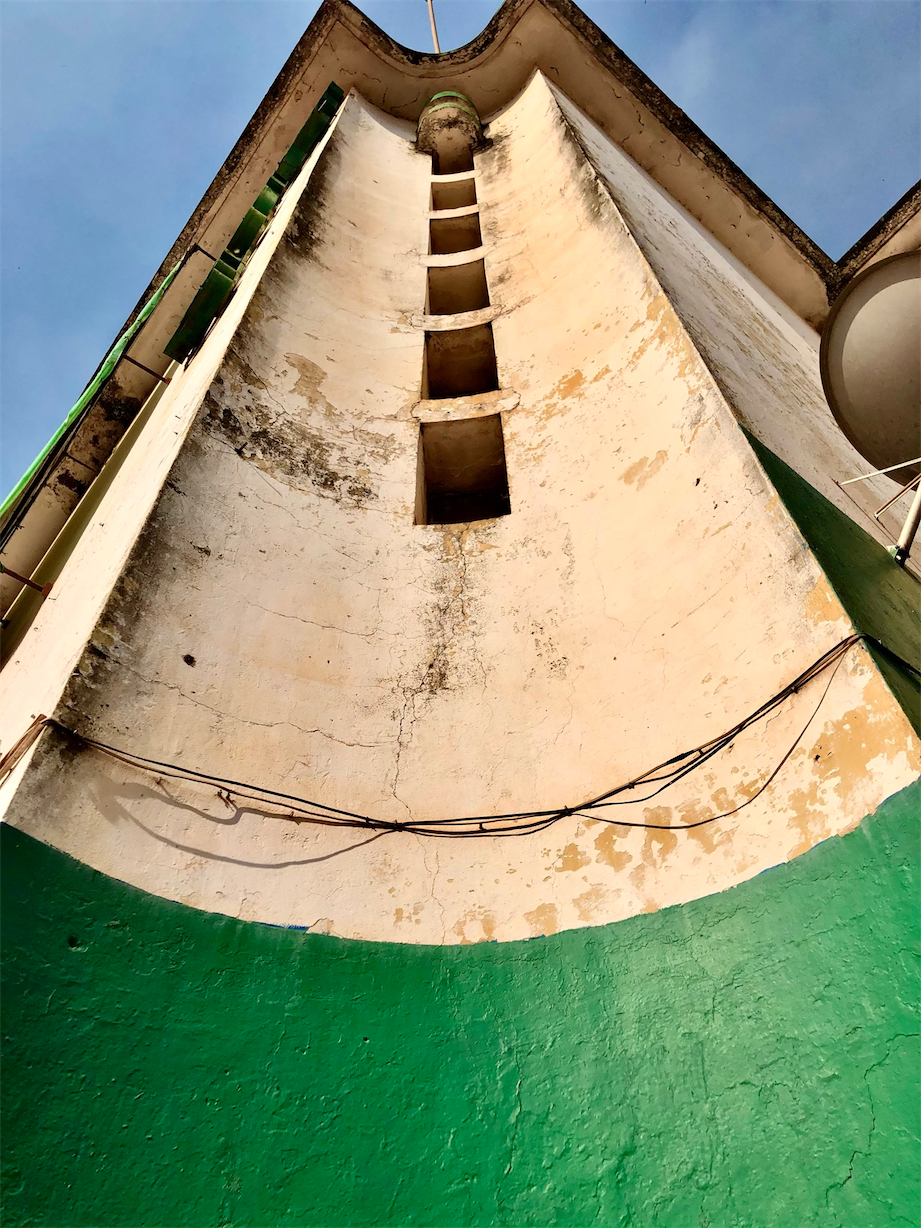
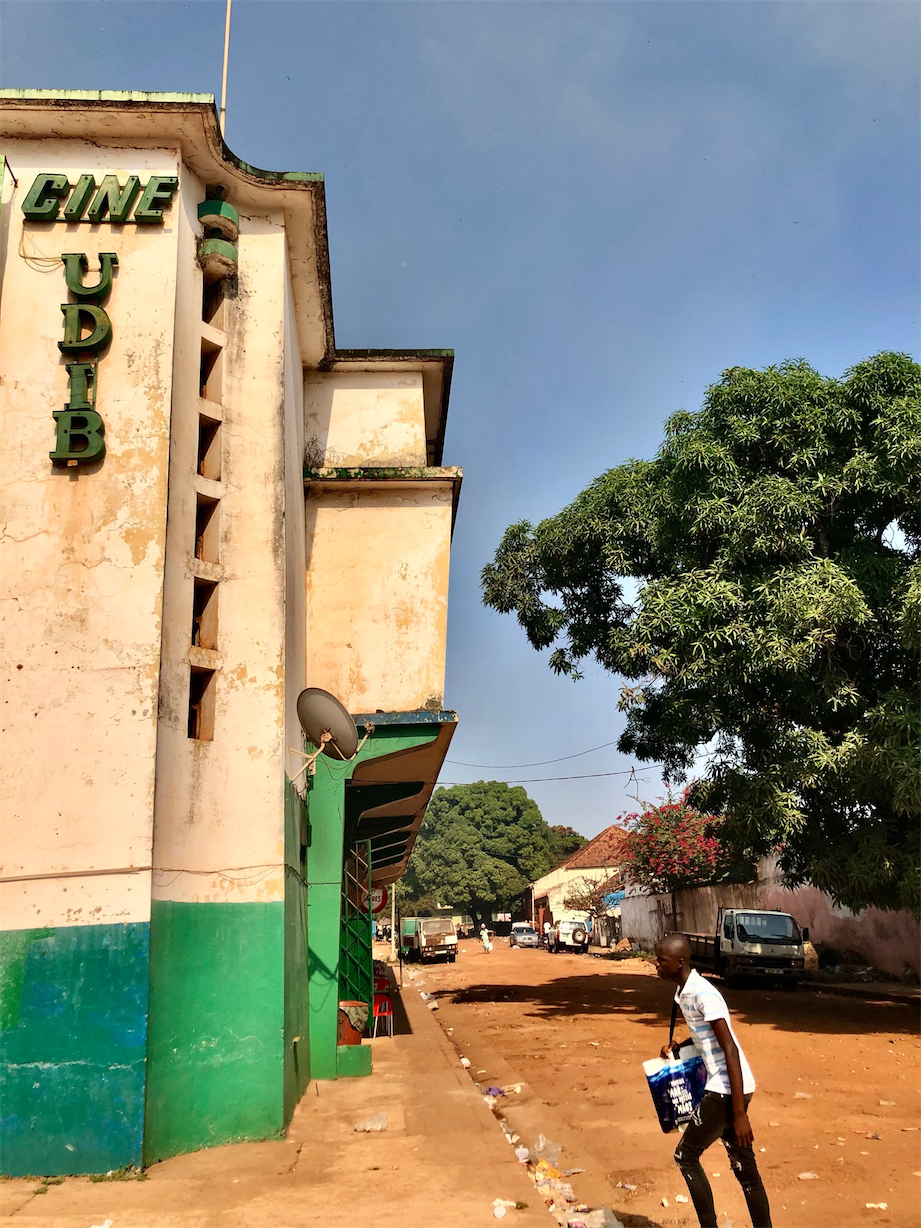
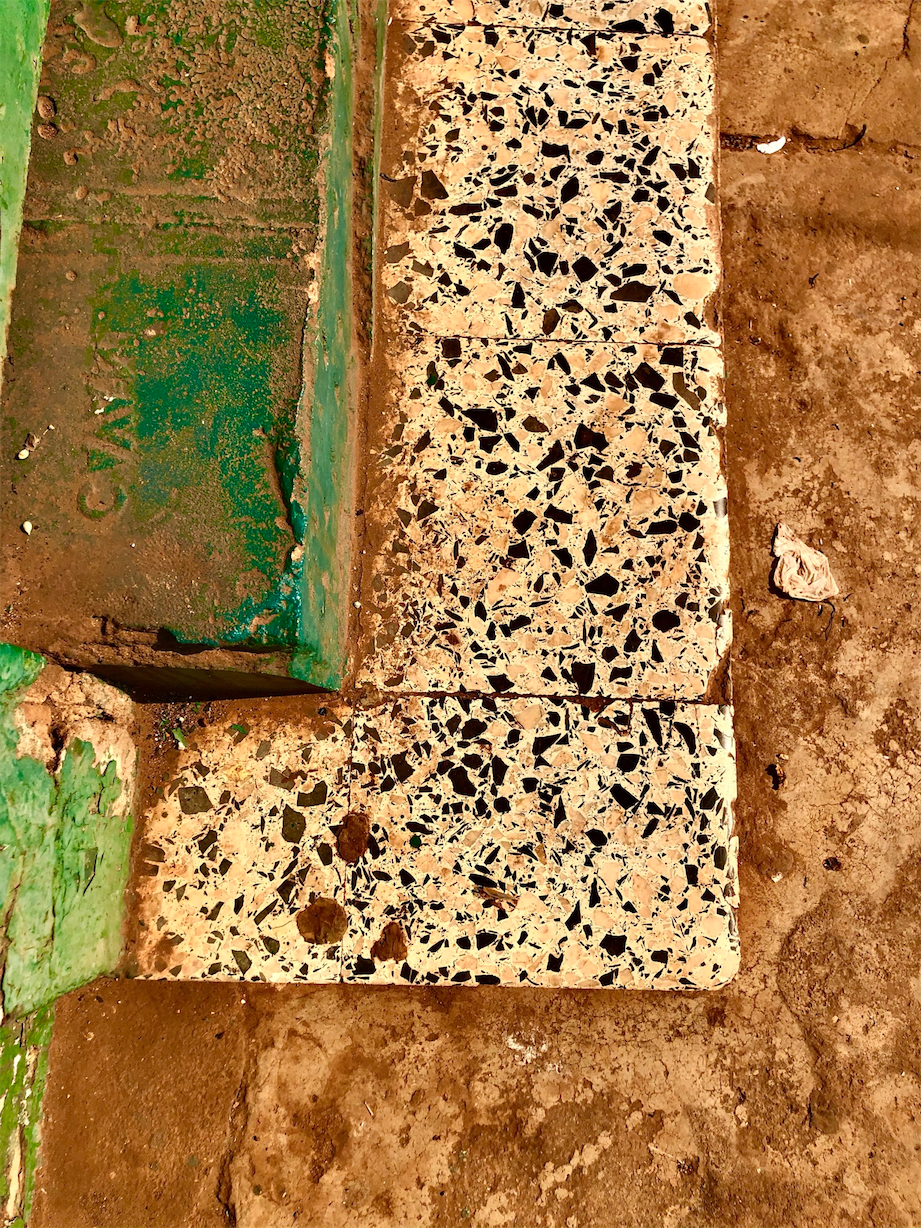
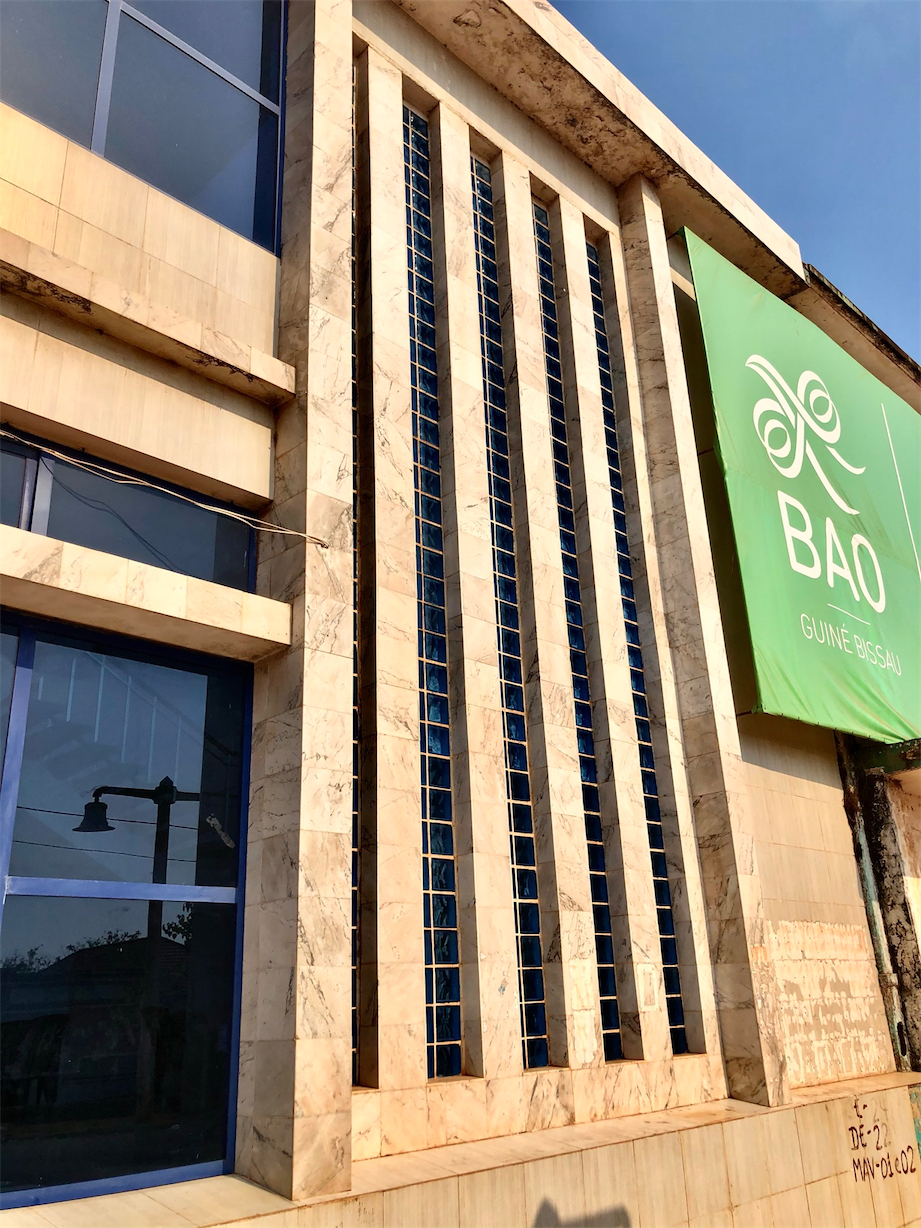
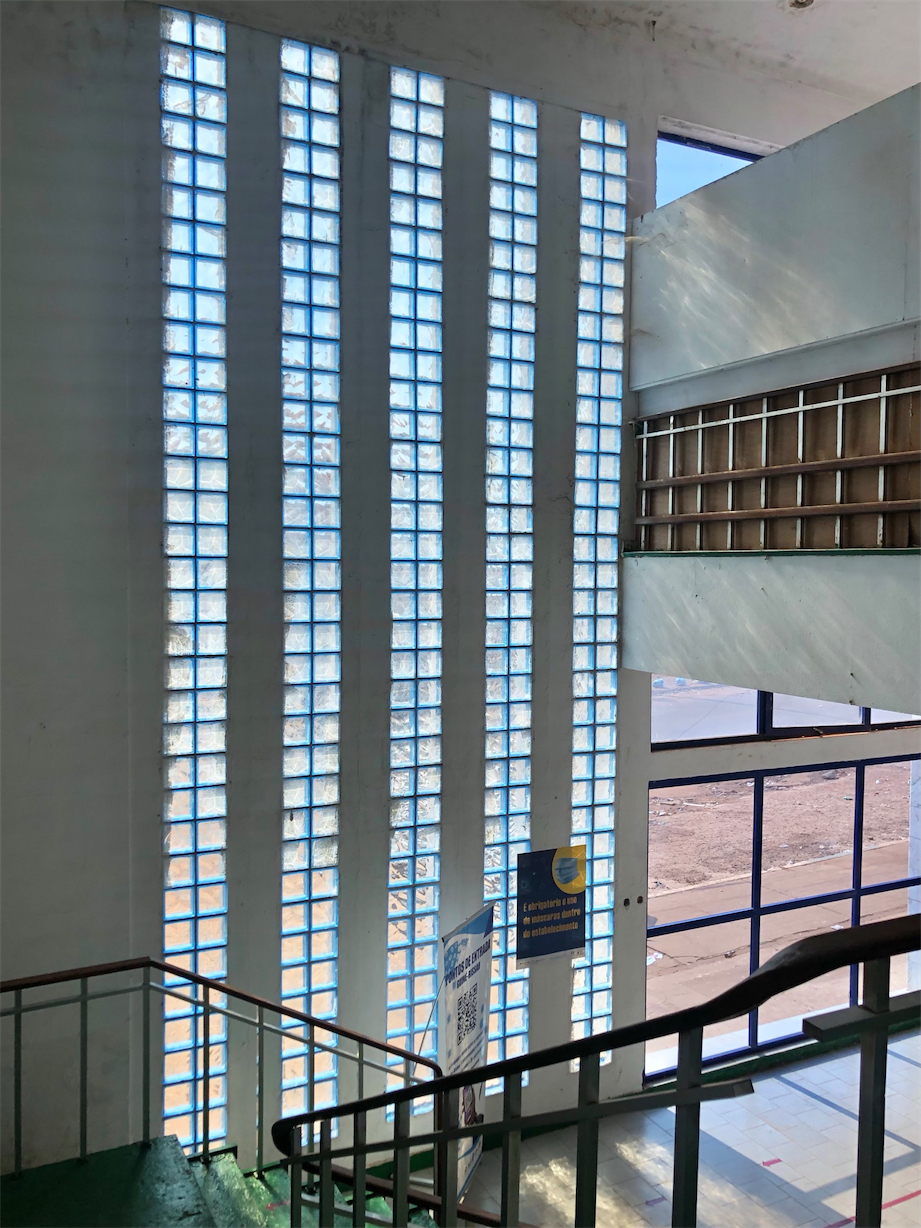
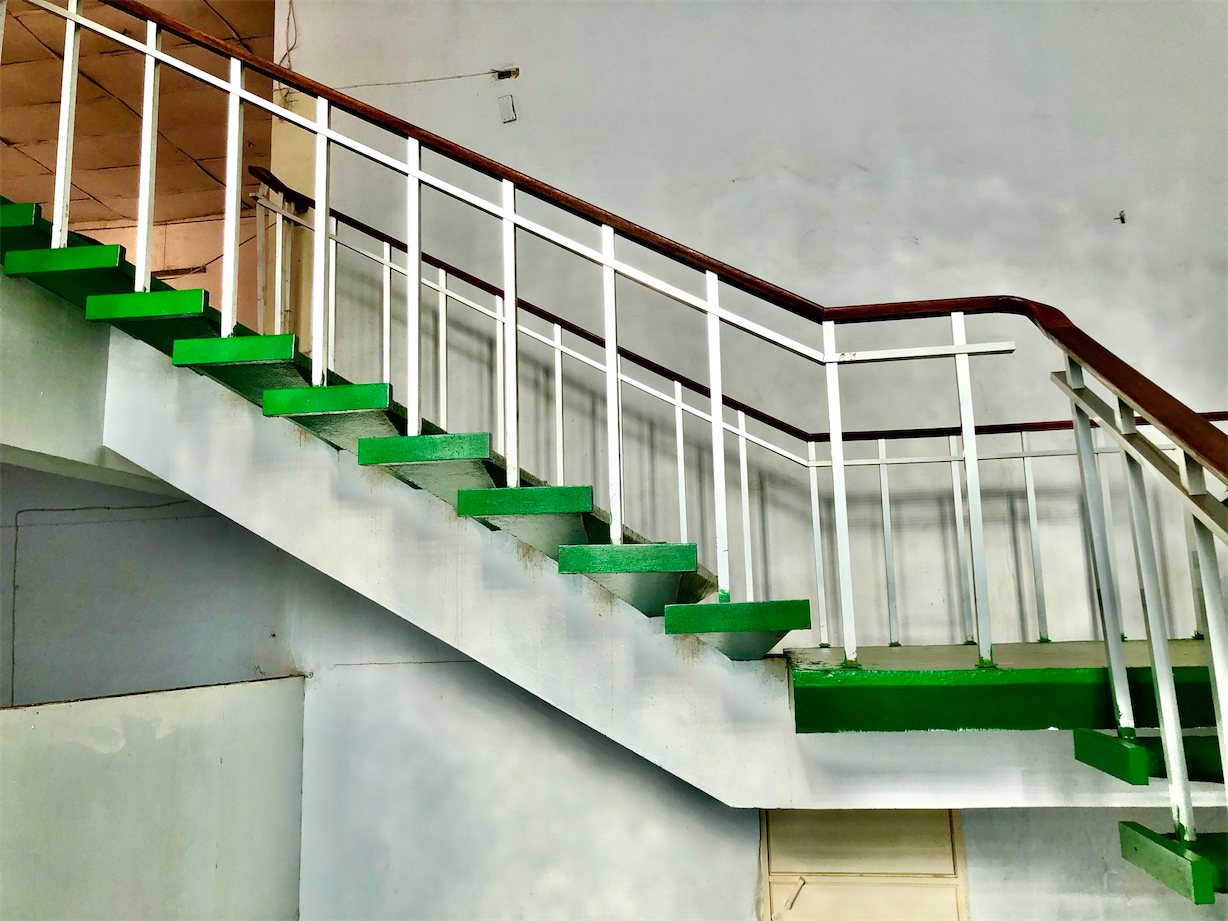
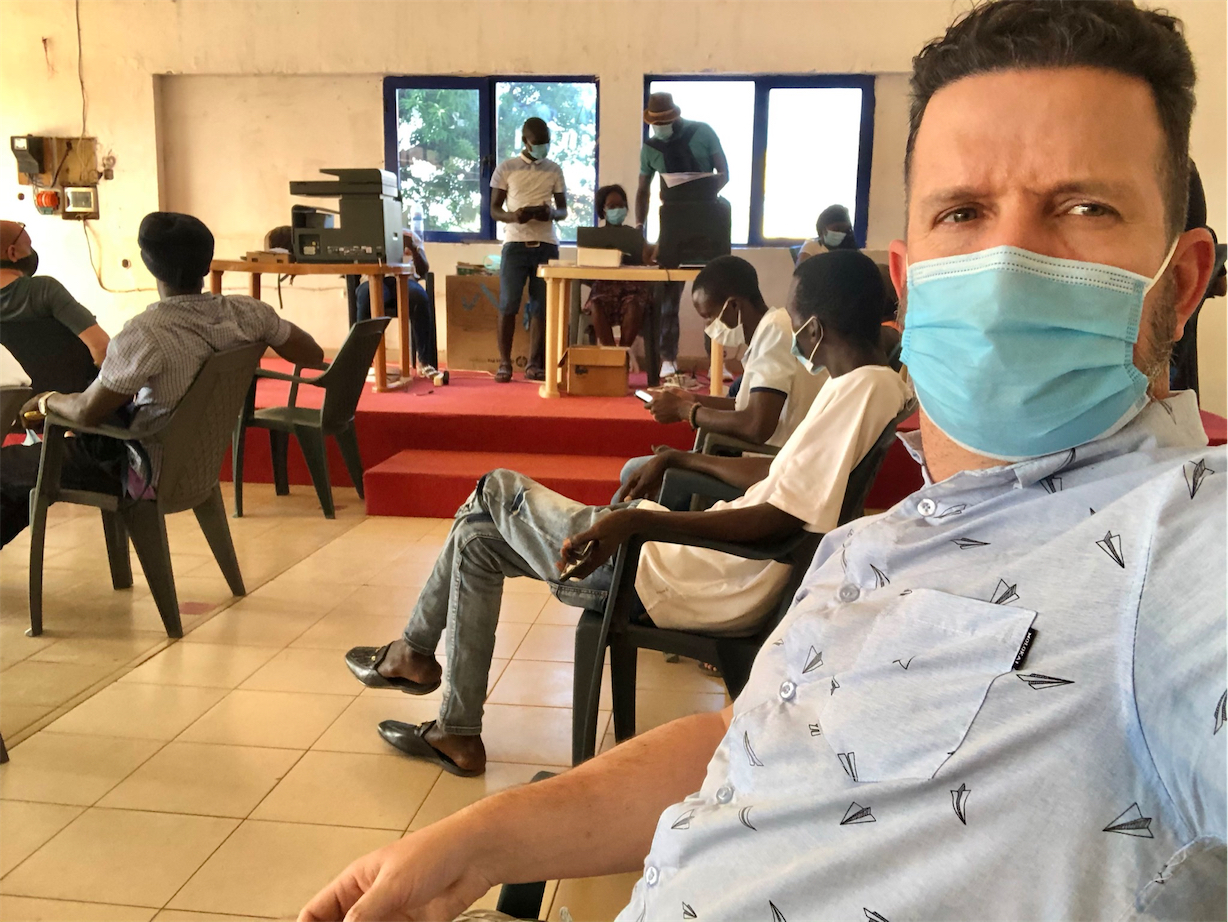
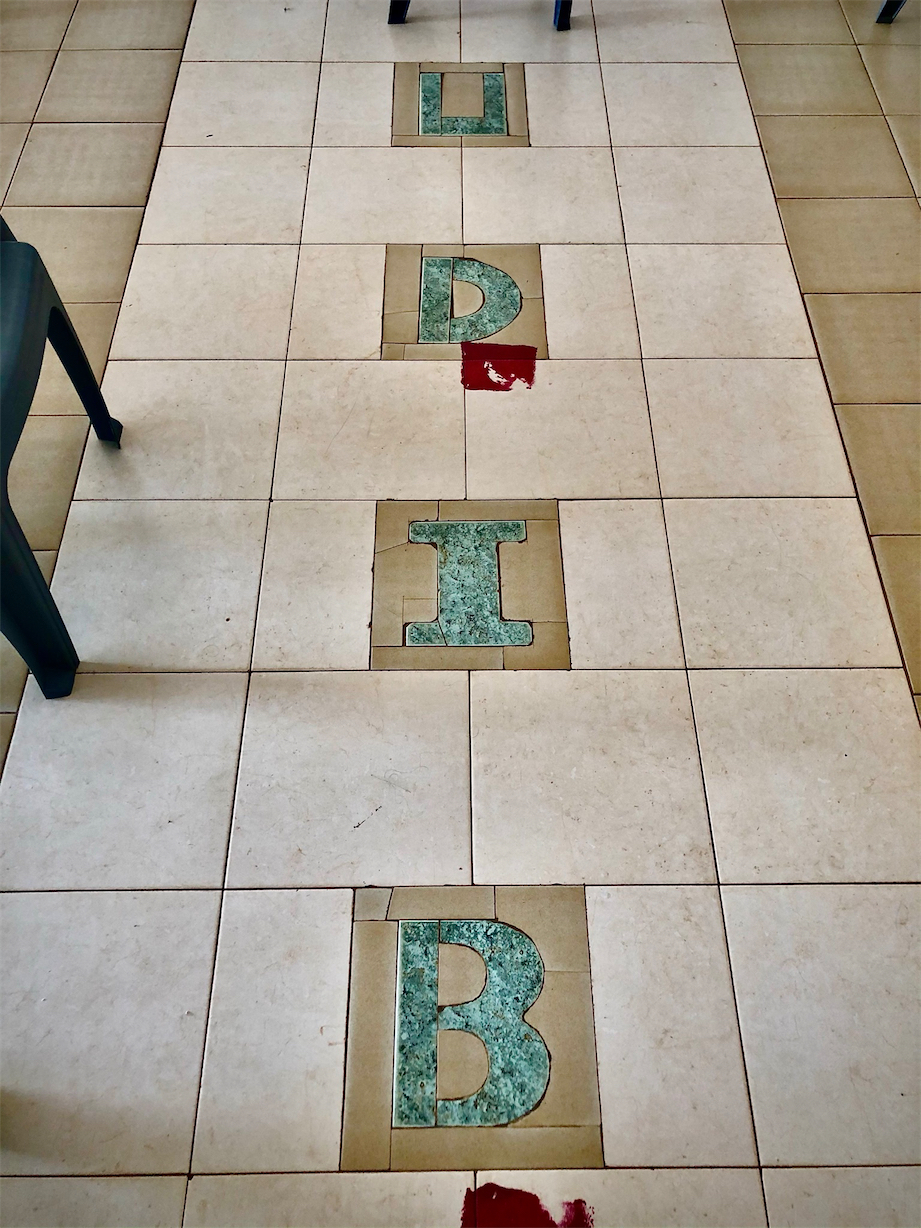
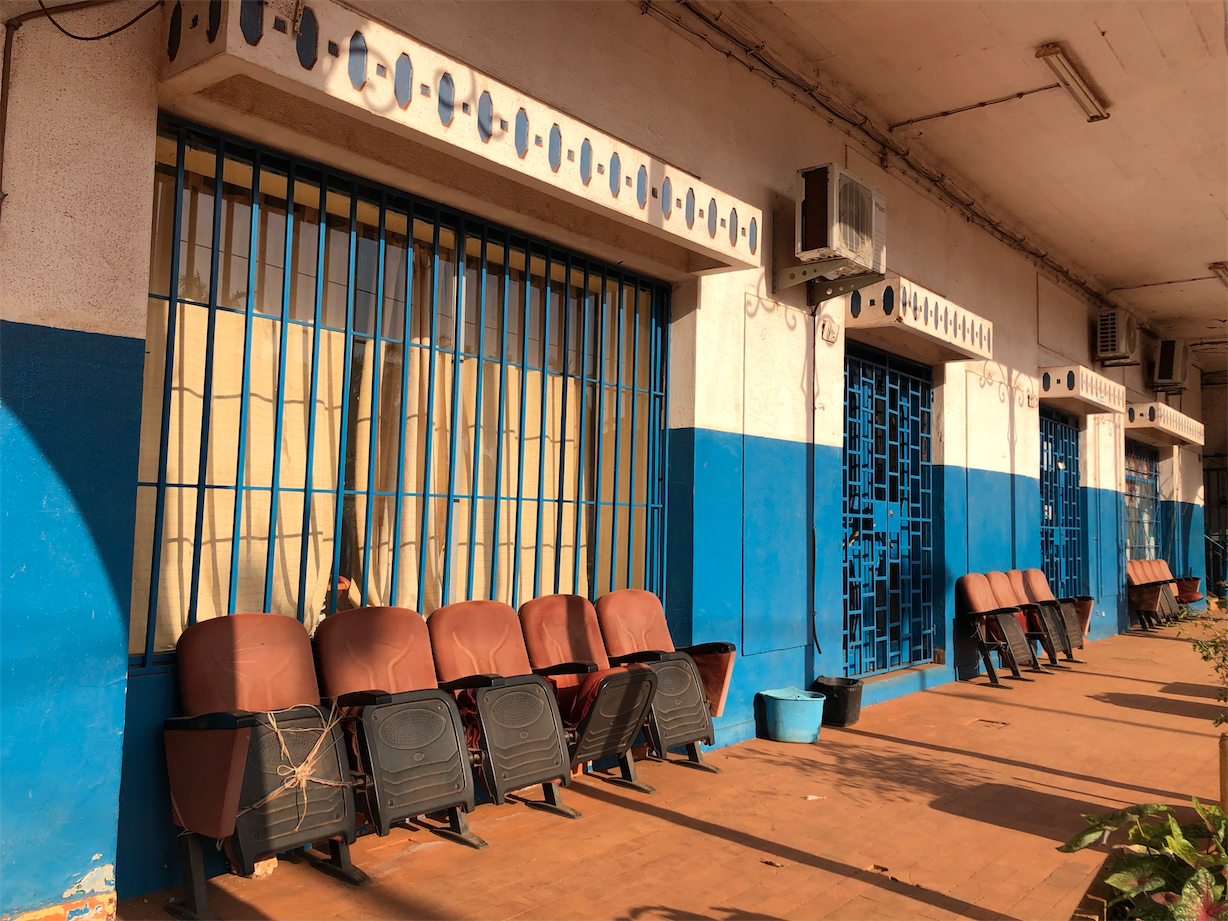
Jantar (Dinner)
I poked around a little bit, including a walk down Avenida do Brasil where I passed herds of cattle being rounded up under the golden sunset. I was careful not to piss off any surly bulls as I walked by. Hanging a right on Rua Vitorina Costa, I headed back towards my hotel. That’s when I discovered a local restaurant that looked too neat not to try – its tables and chairs fashioned from old rims and tires. Plus, I hadn’t had one bite of local fare yet, sticking to meals at the Syrian-owned hotel I was staying at: Pizza, spaghetti and a Philly Cheese Steak certainly don’t count as Guinea-Bissauan…I should at least partake in one local dish before I leave. Tonight I’d feast at Bayana.
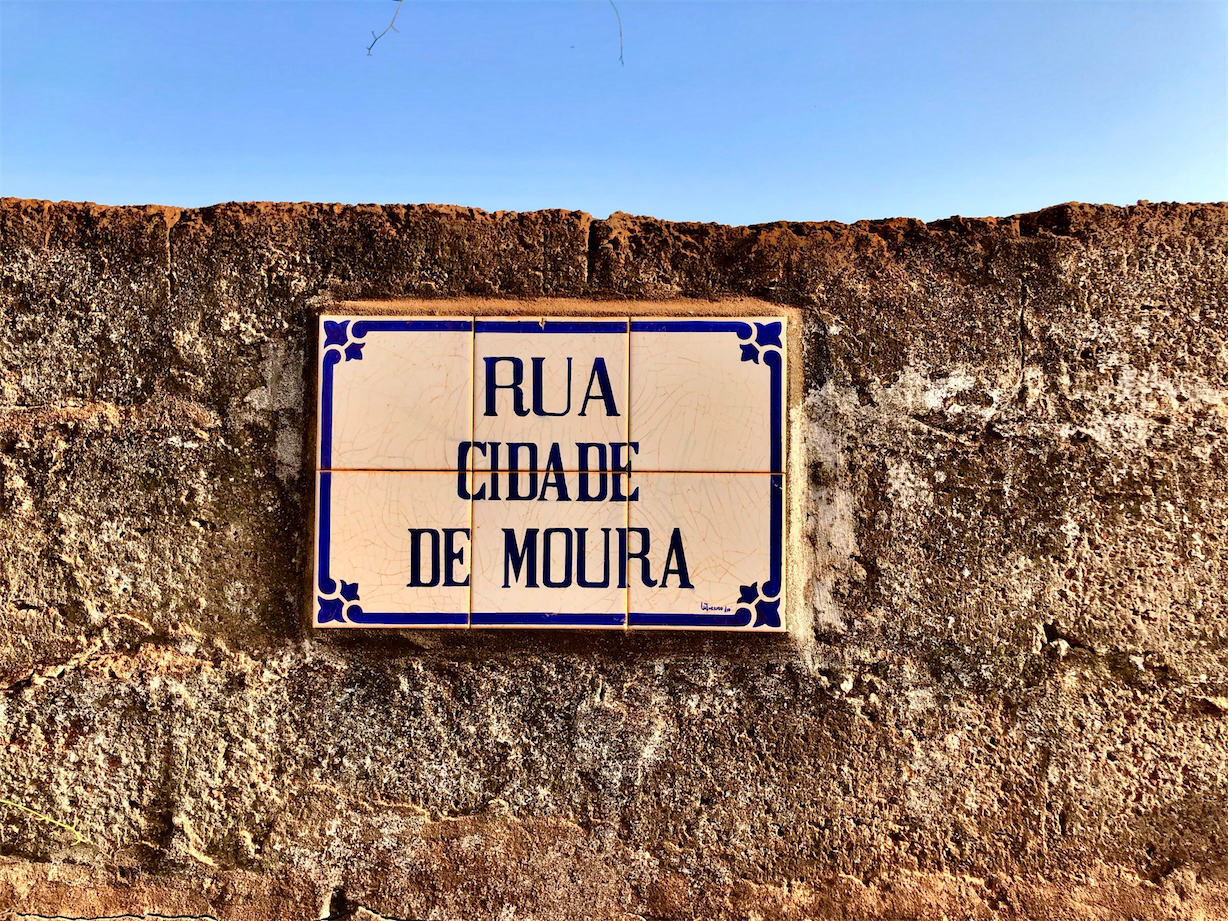
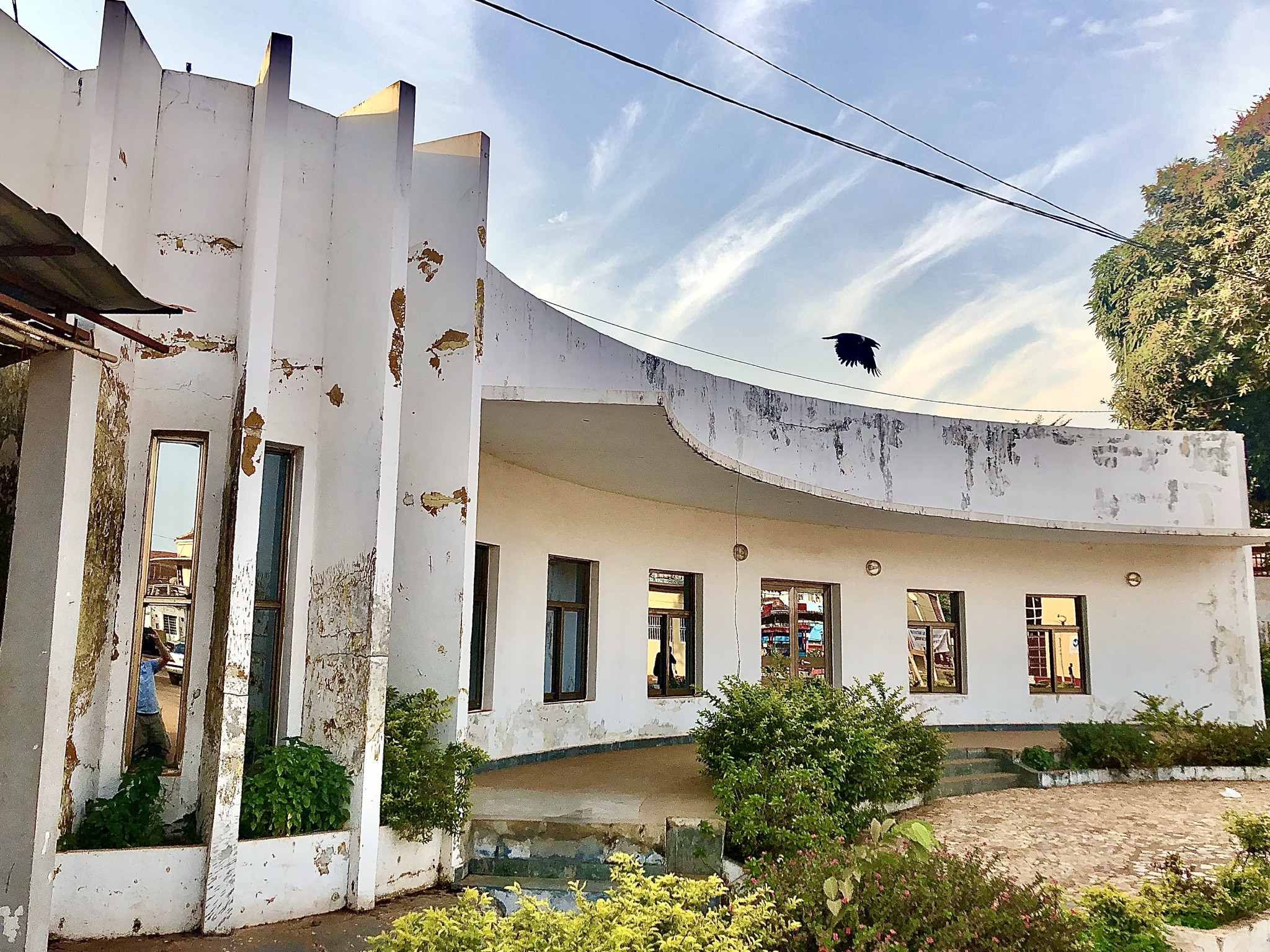
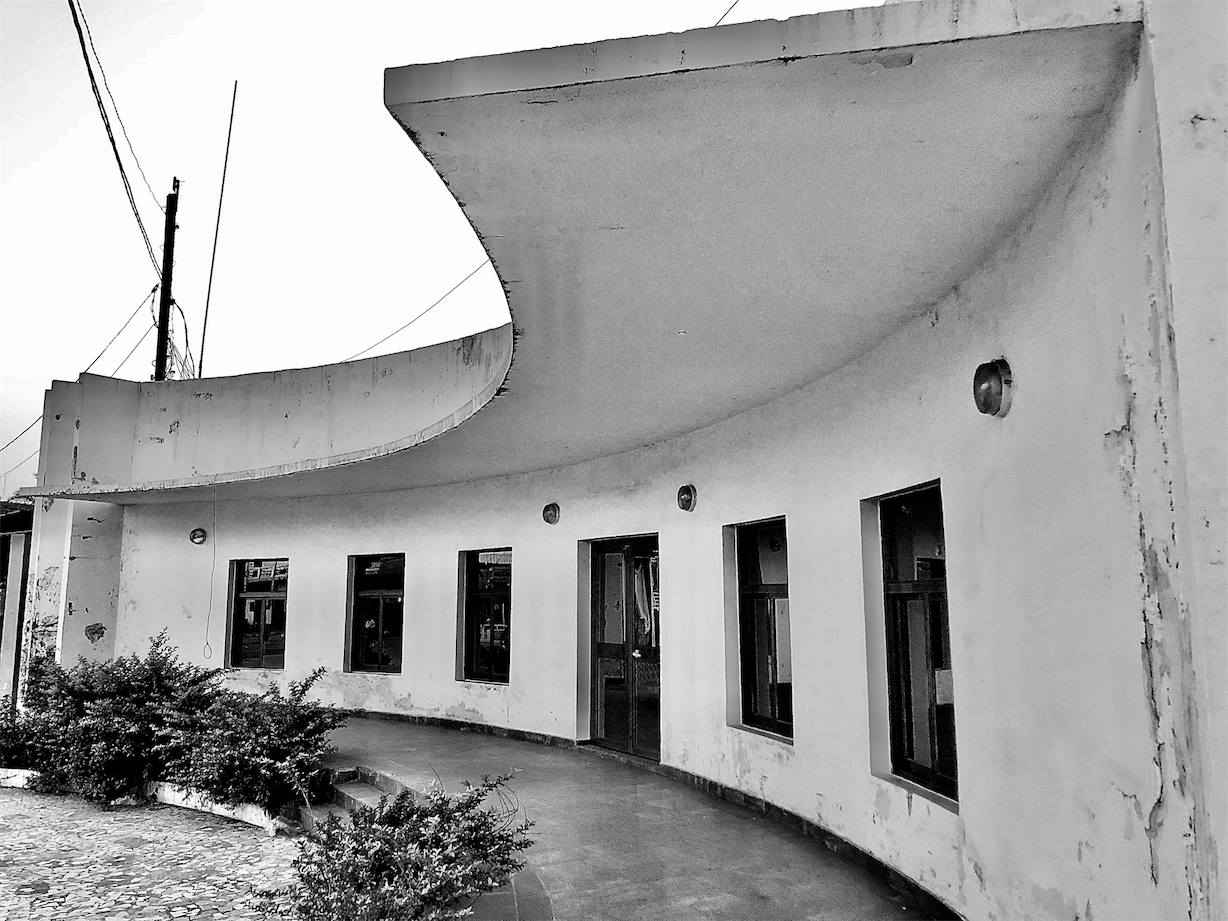
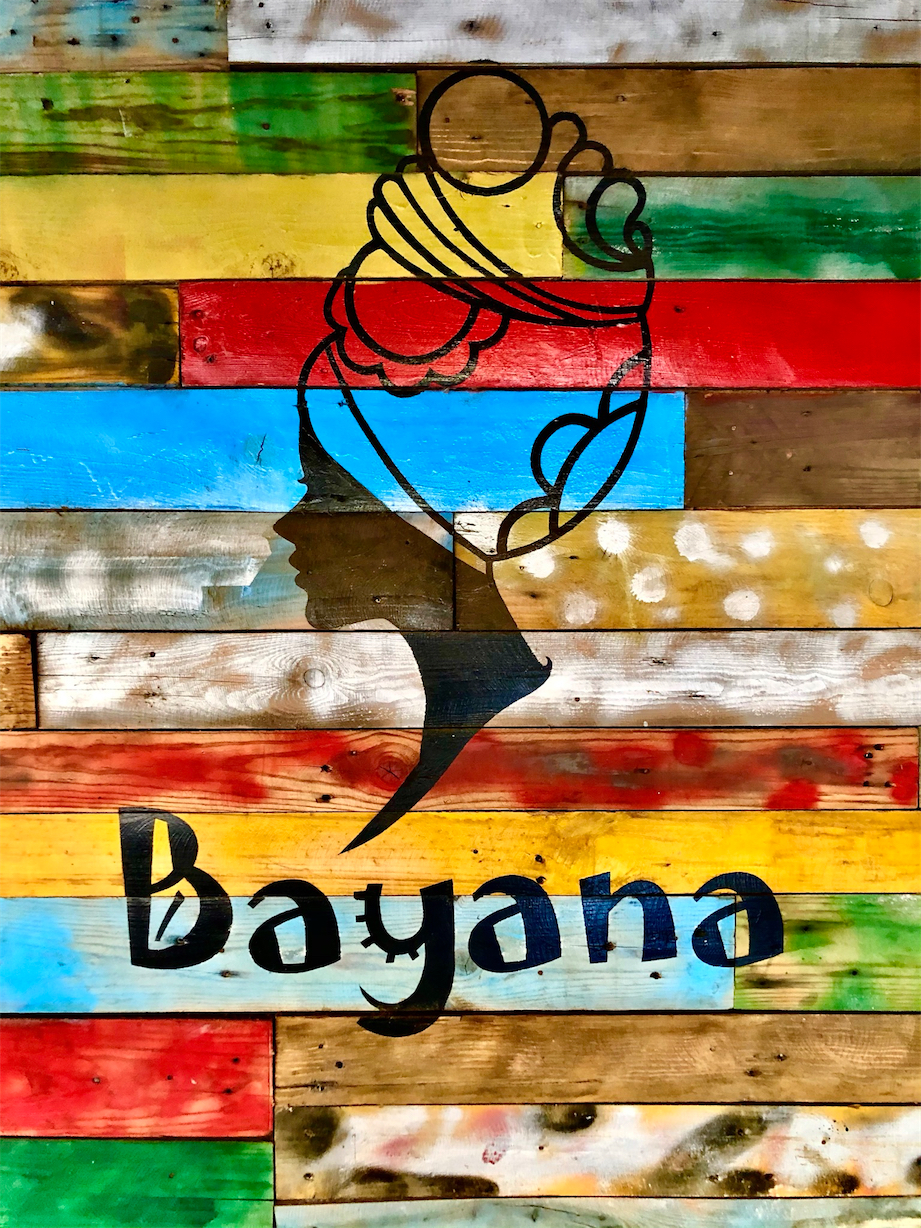
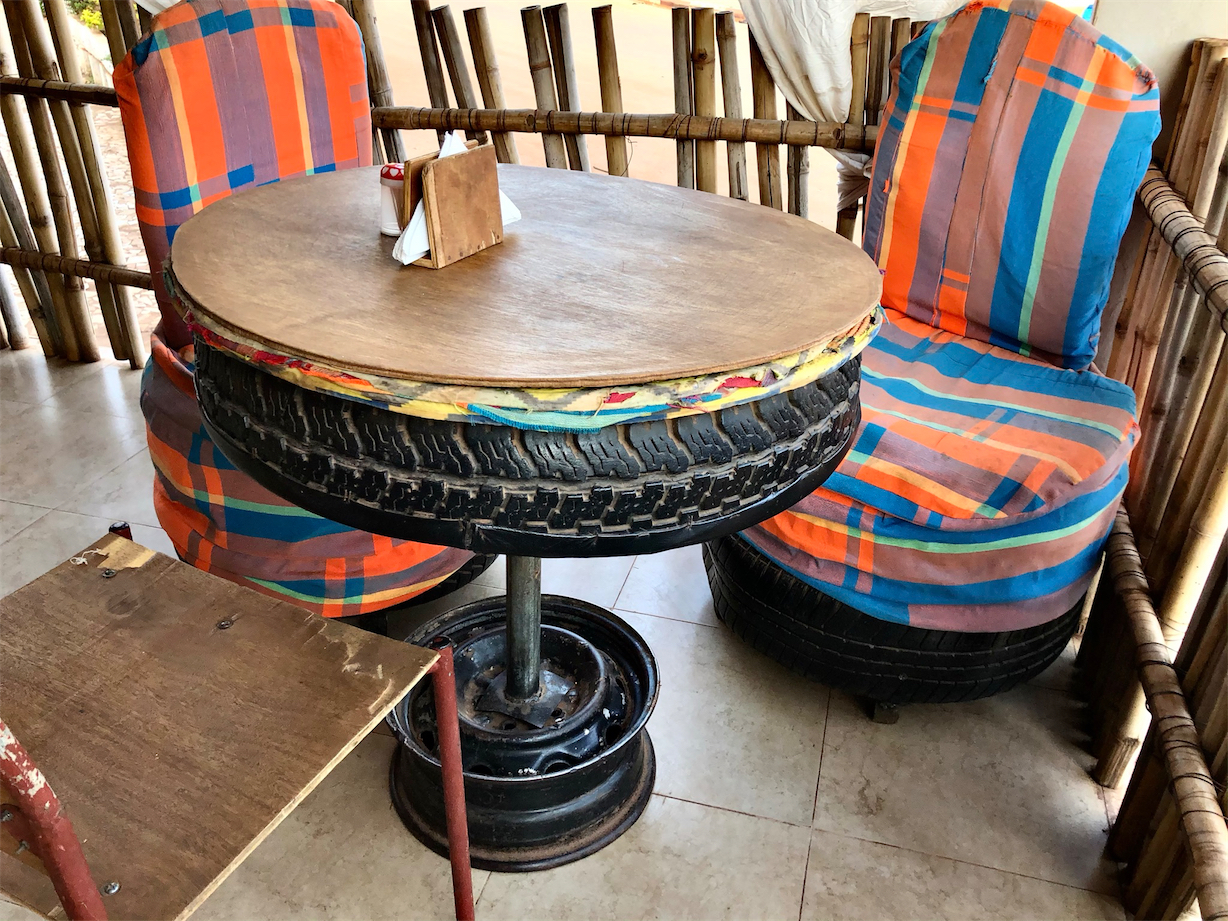
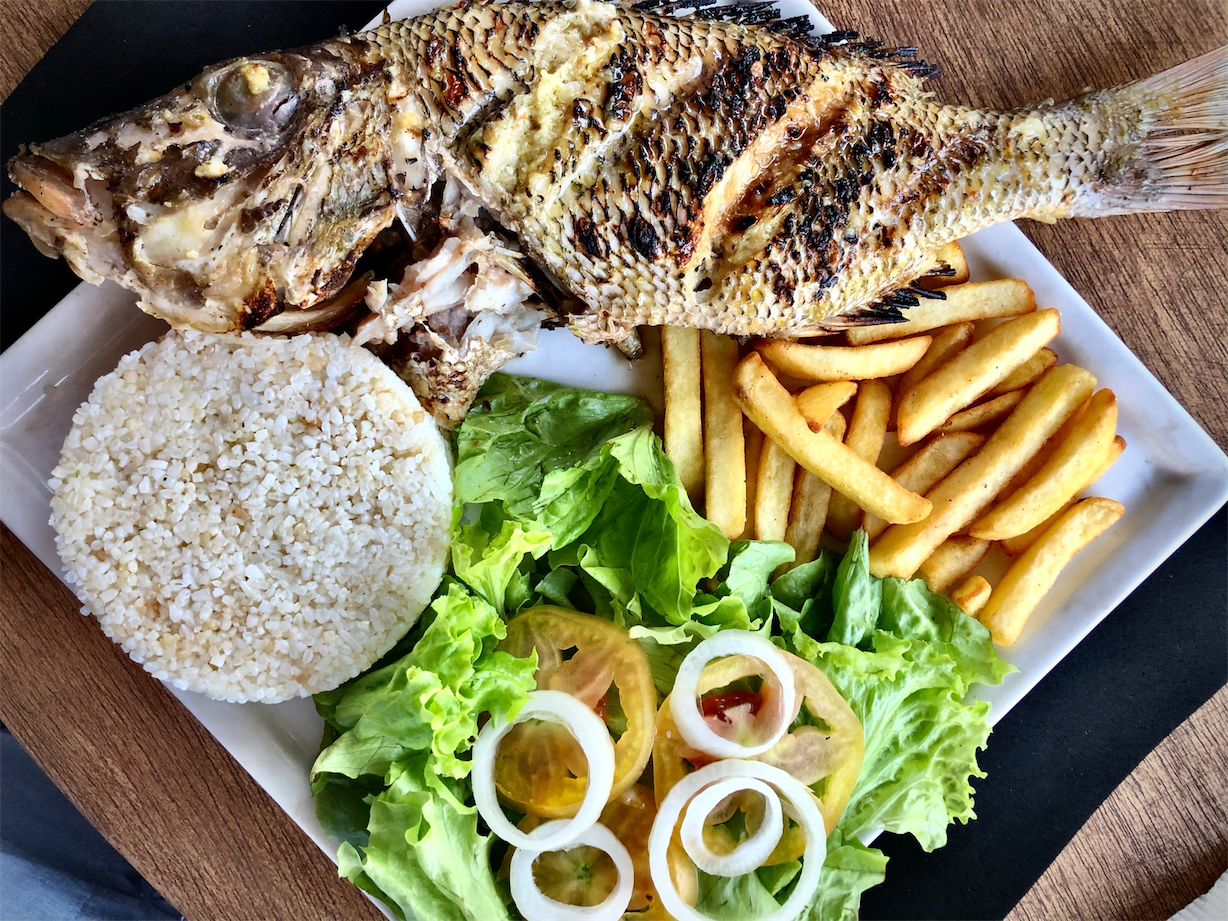
Día Quatro (Day Four)
This was my last full day in Bissau. By now, I had a good grasp of the area – I’d memorized many of the city streets and was familiar with the layout. It really started feeling like home. I’d have some brutal travel over the next few days, so today–my last full day in Bissau–I’d take it easy.
I started my day with a very non-rushed walk to visit one of the radio stations in town. The path took me through Mercado Bandim again. It was on this walk, that I found the biggest grocery store on my trip: Mercado Darling. I enjoyed inspecting all of the imported products, studying their labels – but for origin, not nutritional info. Like the last store, the commercially packaged foods were from Europe (mostly Portugal). But this time I managed to find some fresher foods (nuts, spices) from Senegal. And finally, a couple of domestic products actually from Bissau: cashews and bread items.
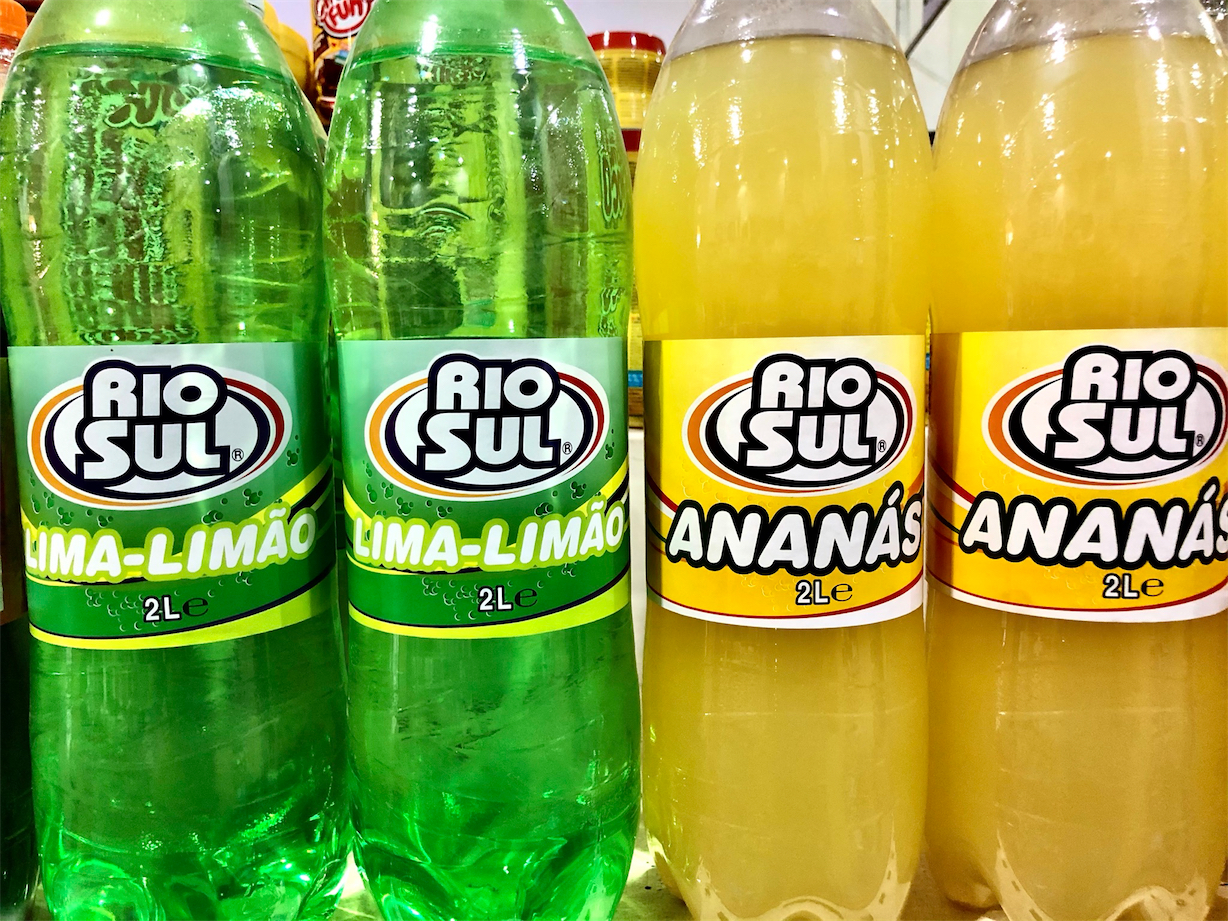
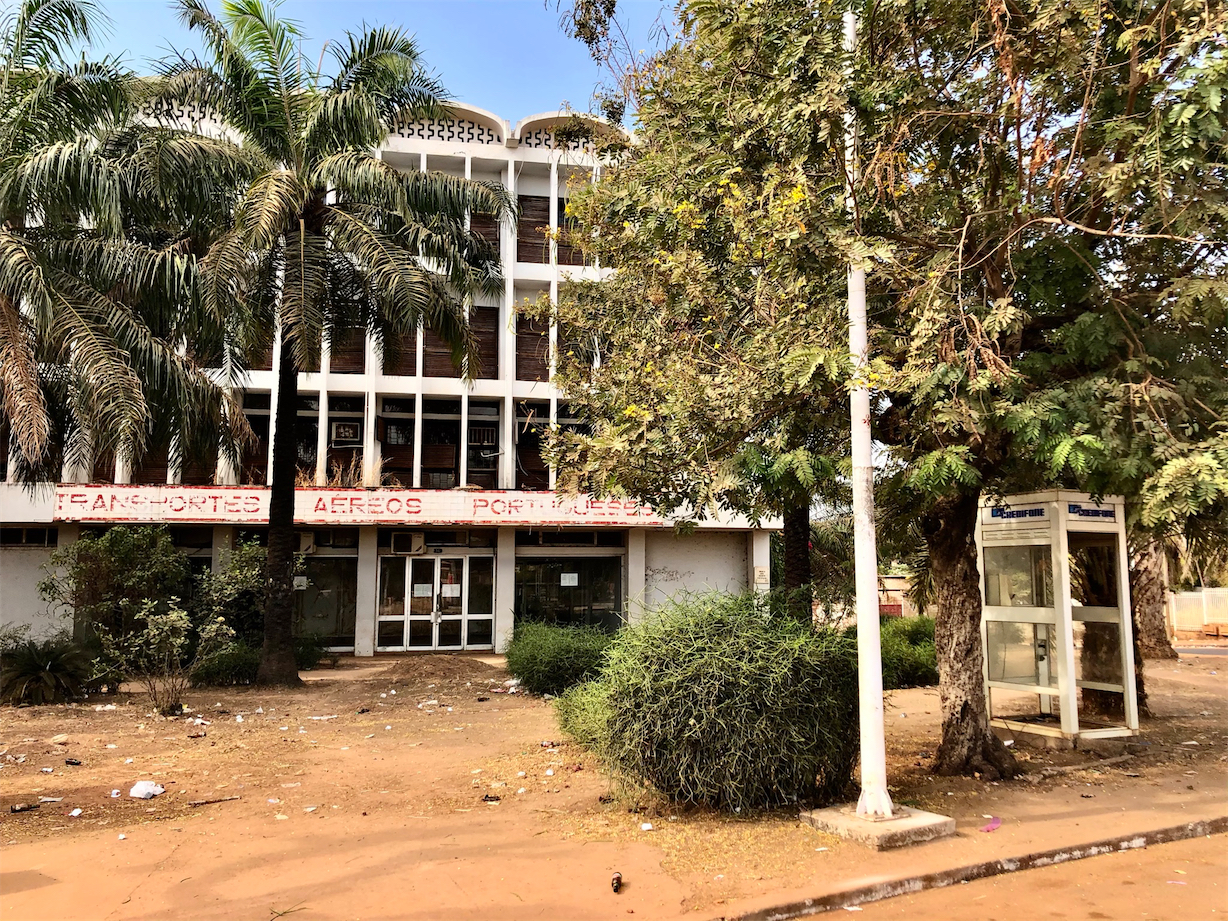
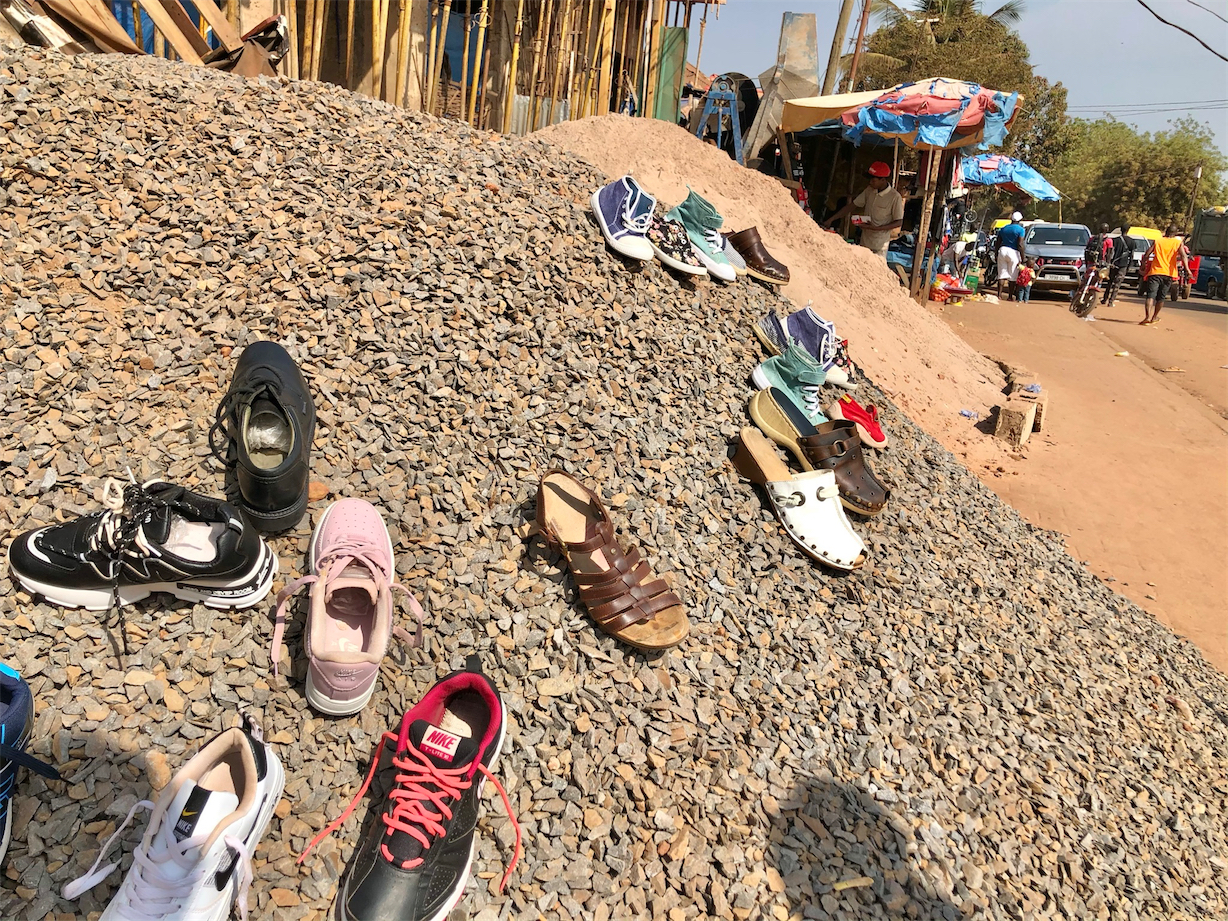
Radio Head
I arrived at Rádio Cidade around 11:30 to meet my new friends. Back home, my day job is a radio personality and program director. I’ve been in the business since the age of 15…I’ve been in love with the business since the age of 12! So whenever I’m traveling and I have some extra time, I really enjoy visiting various radio stations. It’s cool to see the similarities and differences at stations all over the world.
The team at Rádio Cidade were so welcoming! They gathered the entire staff around, popped the bottle of sparkling apple juice I brought them, and presented me to the team. Then, they gave me the floor and asked me to tell my story – all in Portuguese of course! I spoke slowly and carefully (my Portuguese was rusty), but with emotion and sincerity and the best Brazilian accent I could muster up. I like to think that I did okay and that Mrs. Truran and Mrs. Bezerra (my college professoras de português) would’ve been proud.
After the toast, we headed to the roof where we admired views of the city and busy streets below us and chatted some more. It was a really fun experience, and they treated me like a rock star. I guess it’s not every day that an American radio DJ pays their station a visit; if they only knew that I was just as excited to see them! Great people, that treated me really kindly.

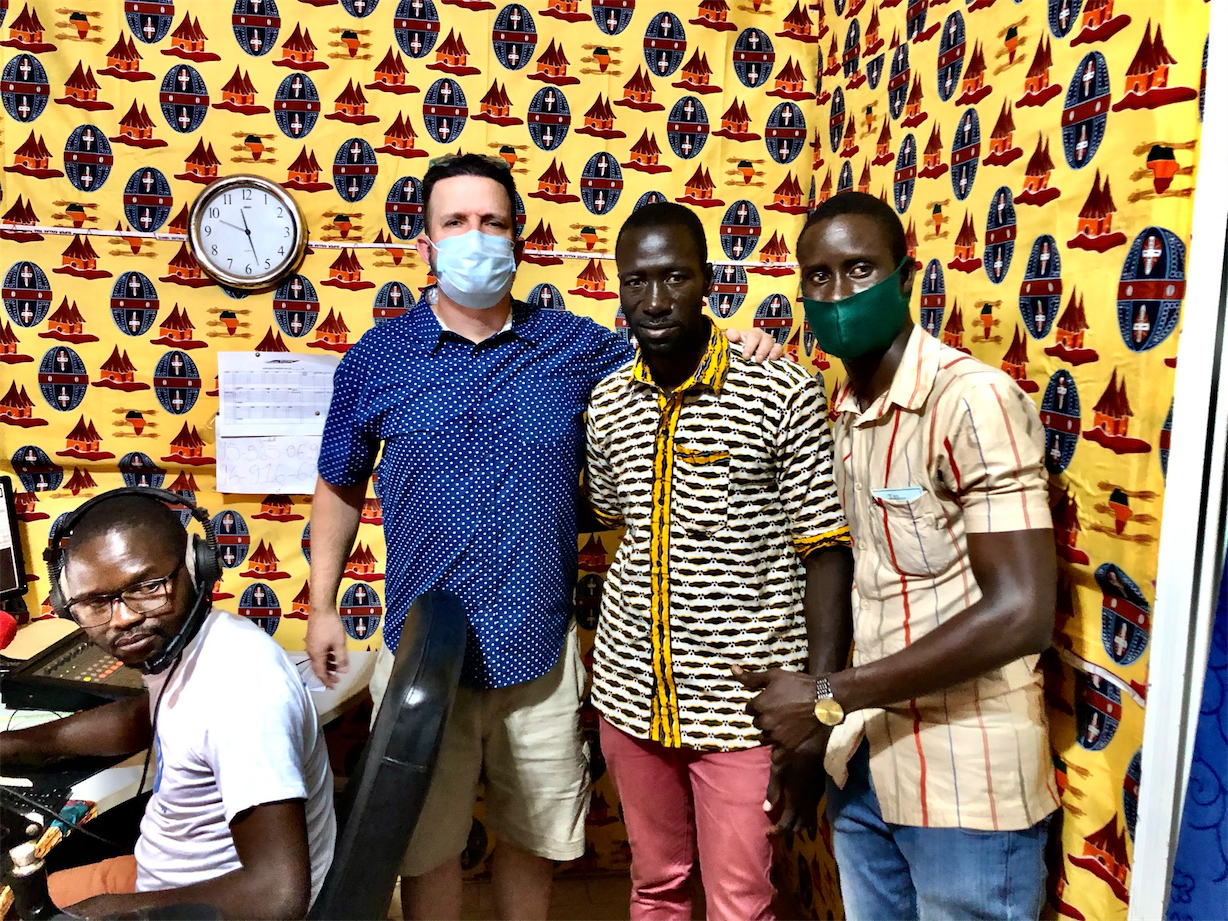
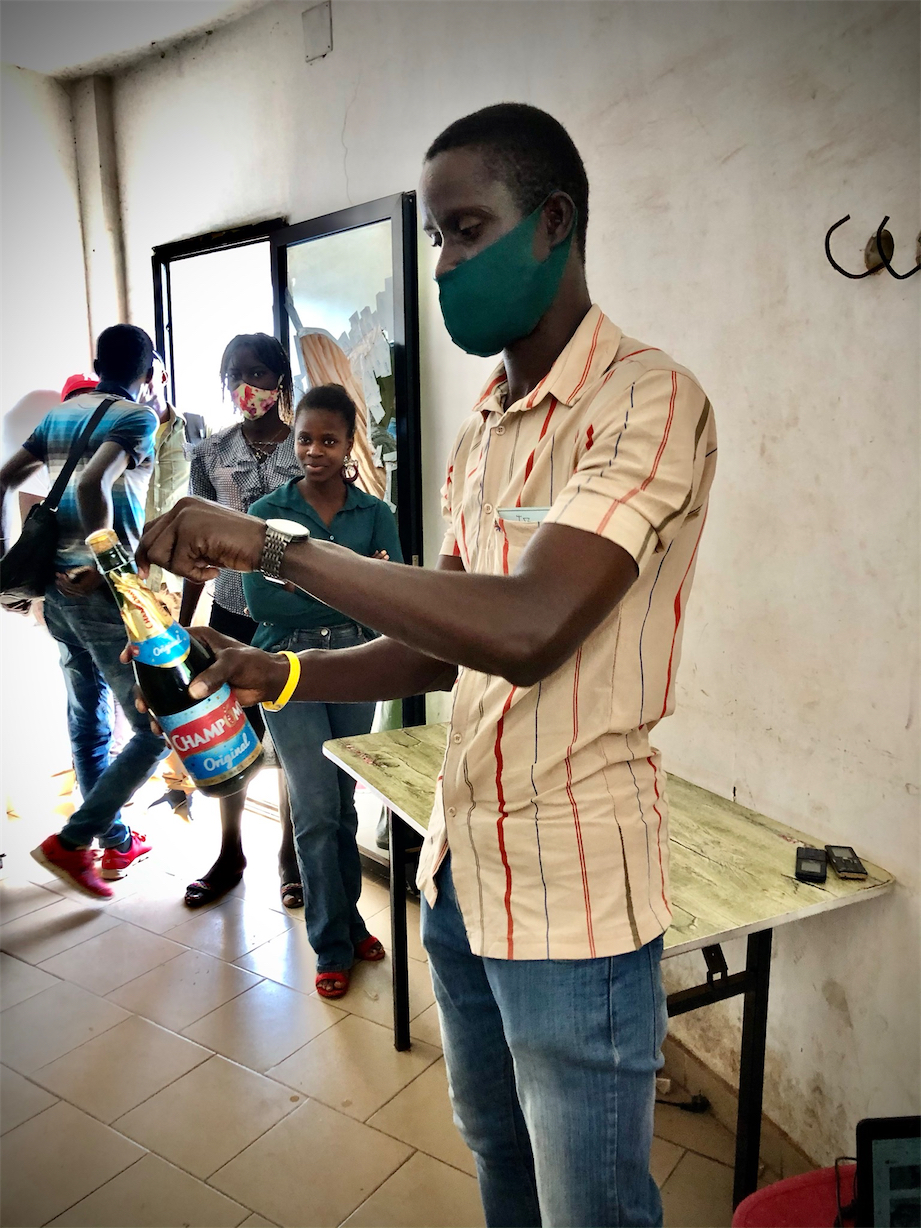
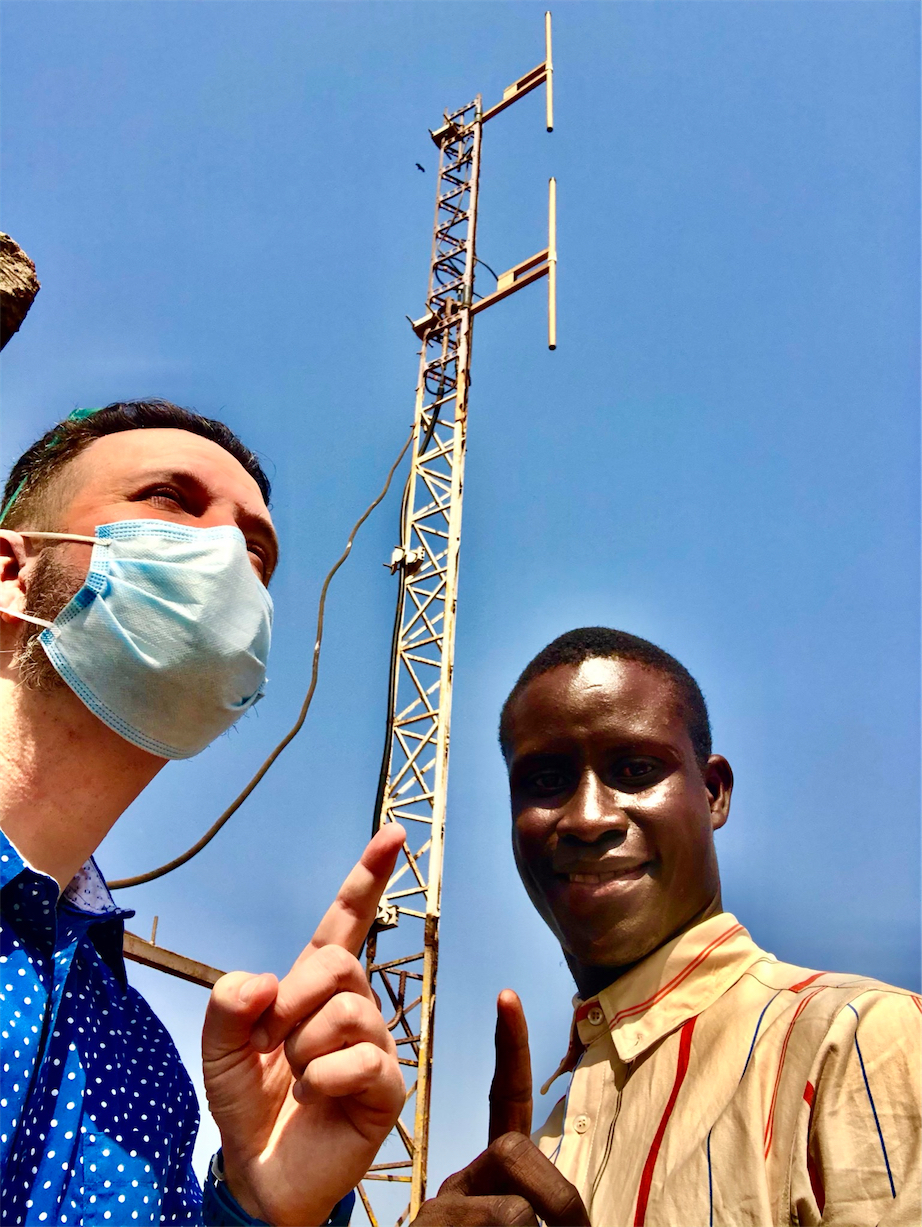
UDIB Cinema – An Inside Look
I enjoyed another relaxing “juice break” at Hotel Ceiba before strolling back to my place. The sun was setting and though I was ready to move on and see more of Africa, I was a little sad I’d be saying goodbye. I walked across the street to take one more look at that gorgeous old theater. Peering in one of the doors of the abandoned section, I noticed someone was inside. In my best Portuguese, I let out a, “Com licensa” (excuse me), followed by a request to take a look inside. The next thing I know I was being ushered into the main room–the theater–where the stage and screen still lived. The man who gave me this special after-hours tour must have been left in charge of “looking after” the property – he had keys.
I was so glad that I’d asked to come inside! I was in awe as we explored every corner and crevice of this old, giant building that must have housed so many special memories. The man explained that a bomb had taken out the roof during a civil war in 1998, ending the theater’s operation in an instant.
Back at the hotel I spent at least an hour Googling the UDIB Cine – I was so interested to learn about the past of such a gorgeous structure. I was a little melancholy to see it in such disrepair. Most of the search results are in Portuguese, including this one: a personal memoir of a blog by a Portuguese gentlemen who spent his childhood in Bissau. You can see it HERE. You might enjoy it – there are some beautiful old pictures and special memories recounted.
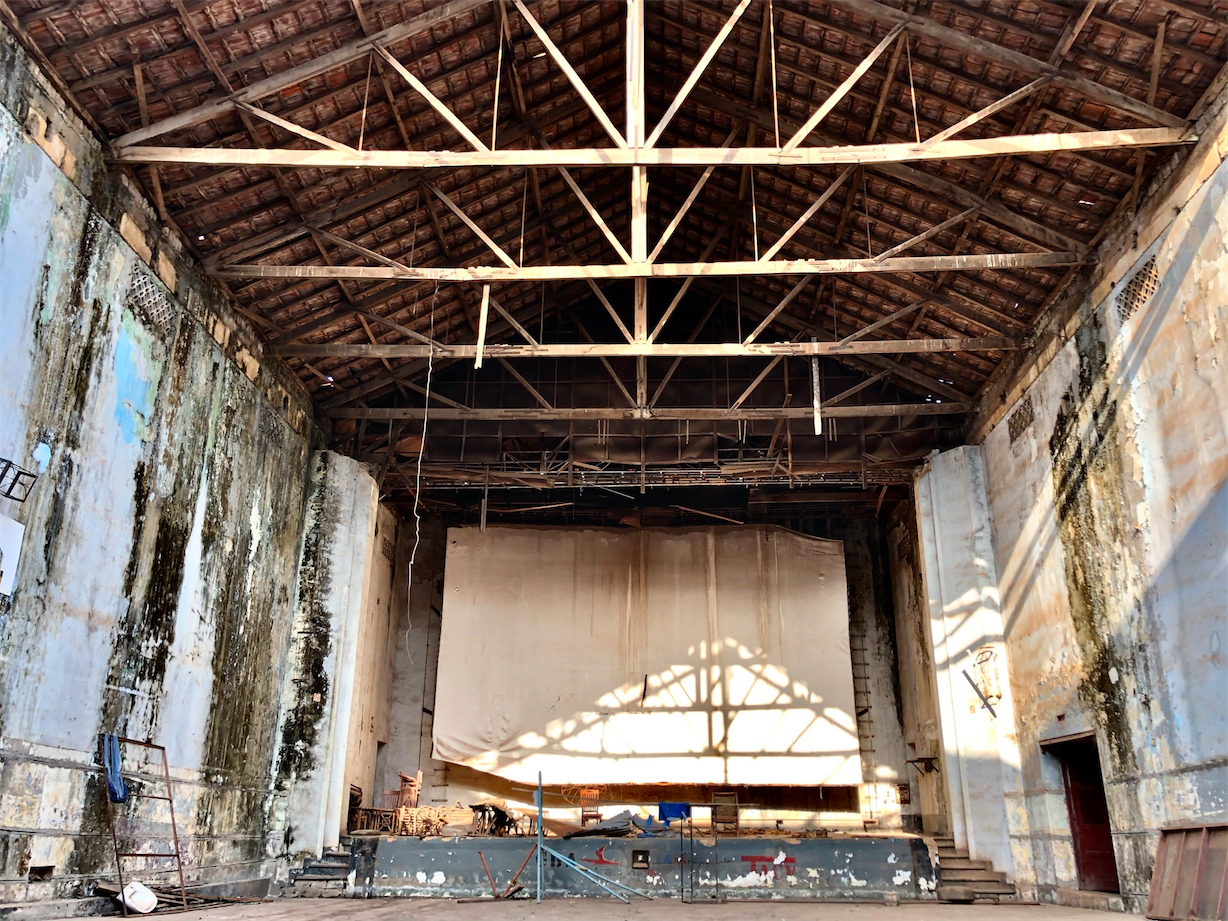
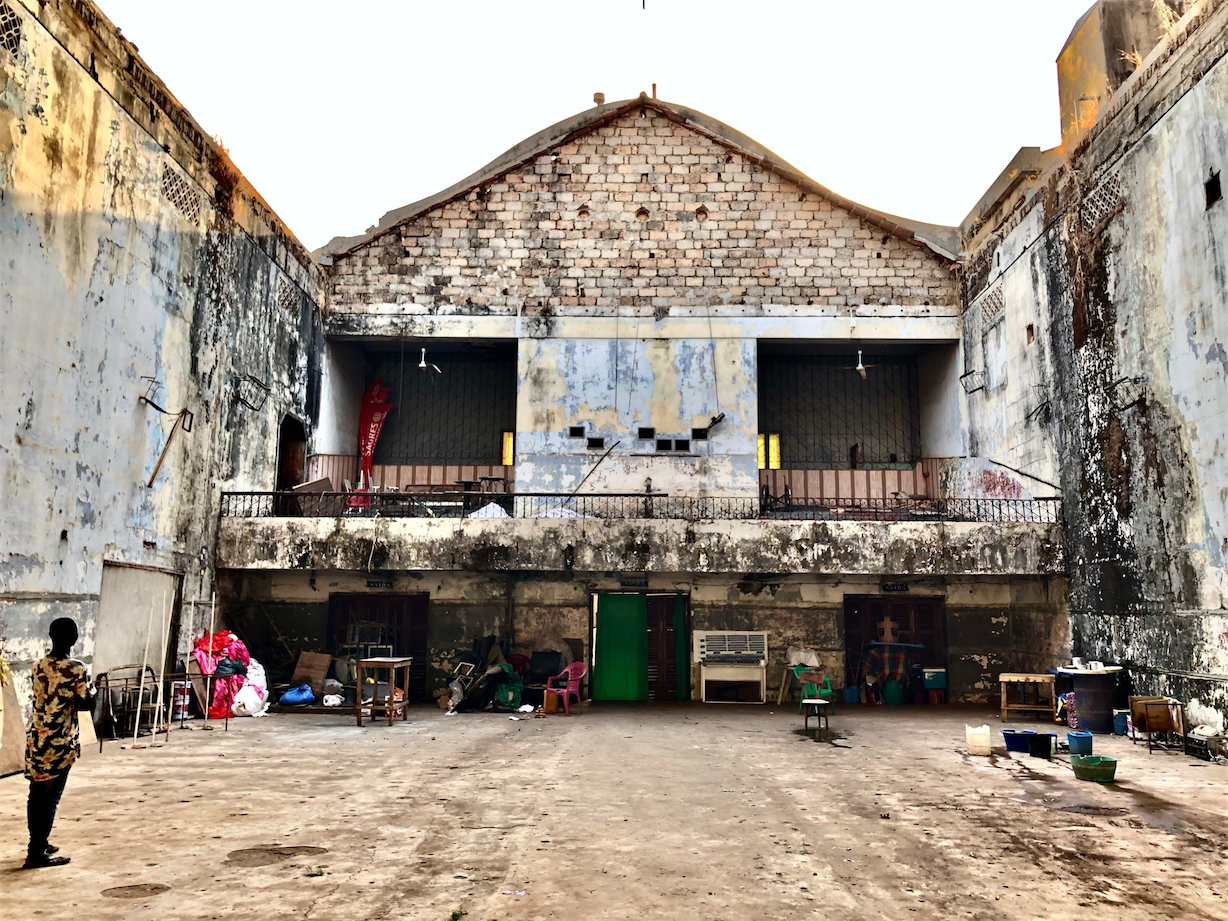
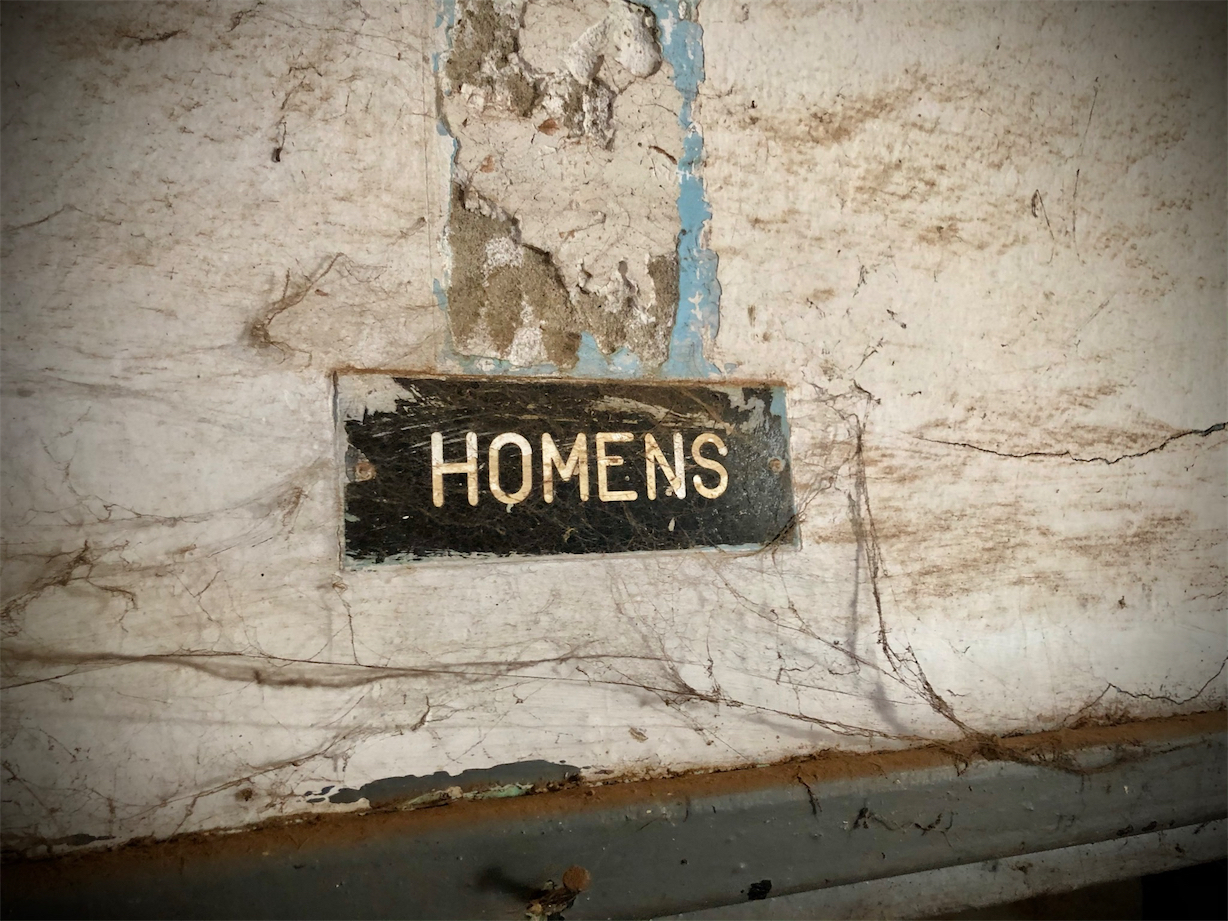
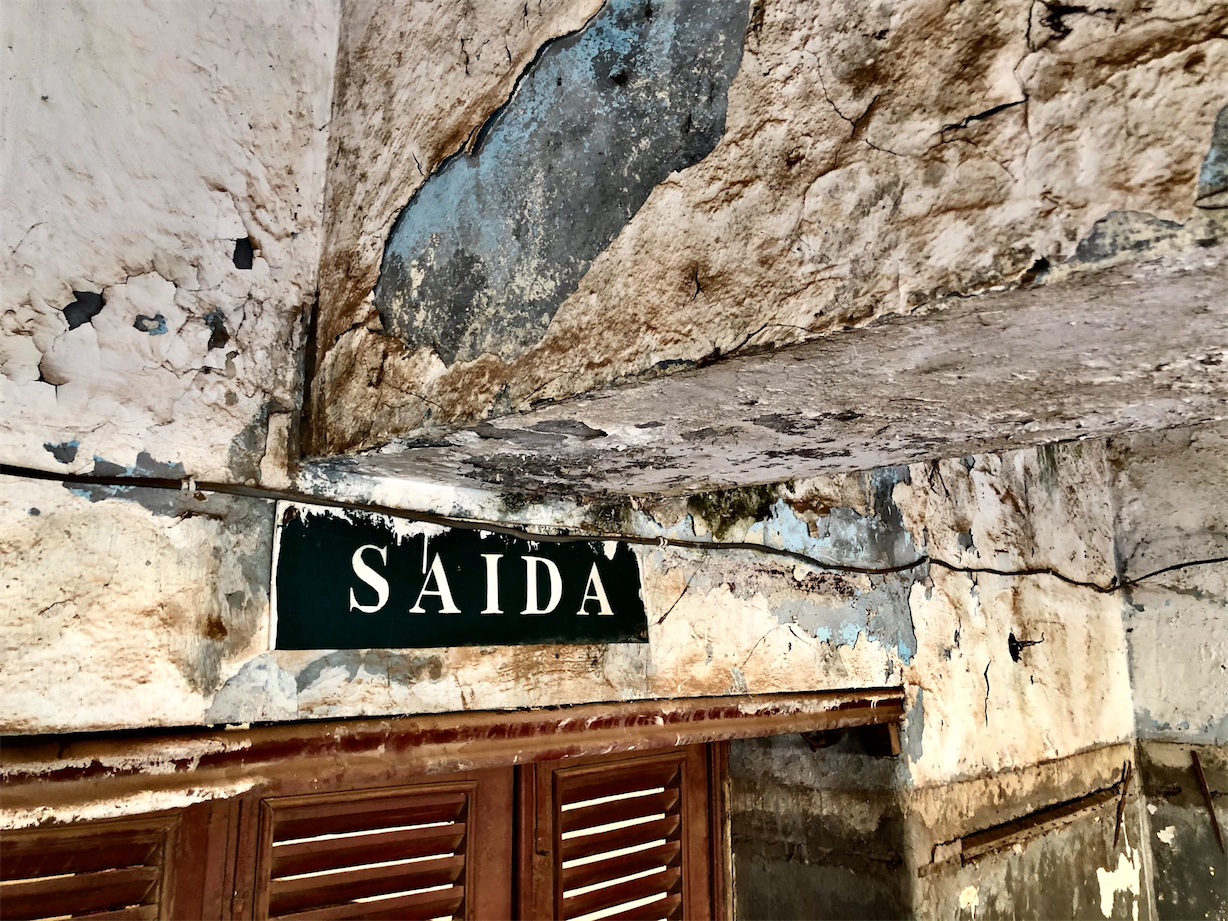
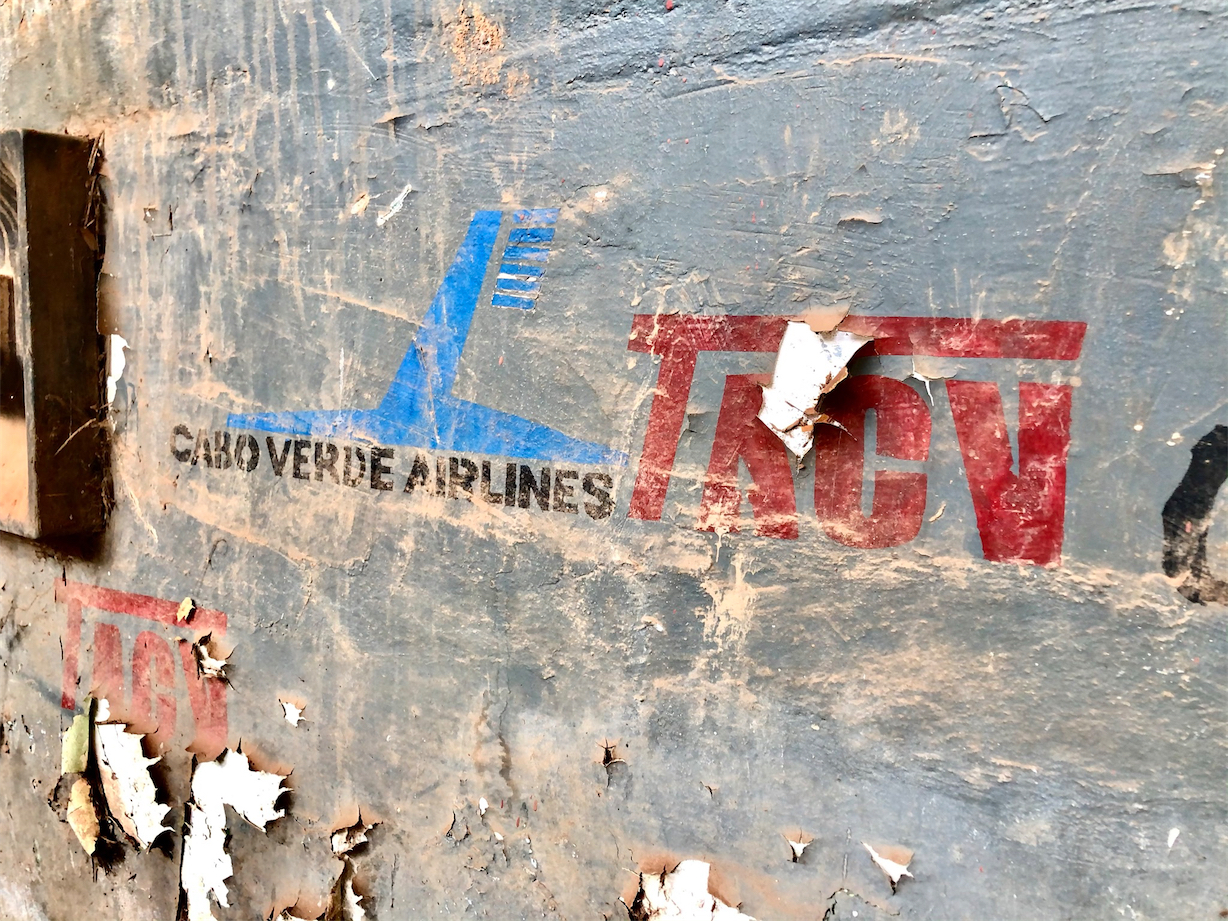
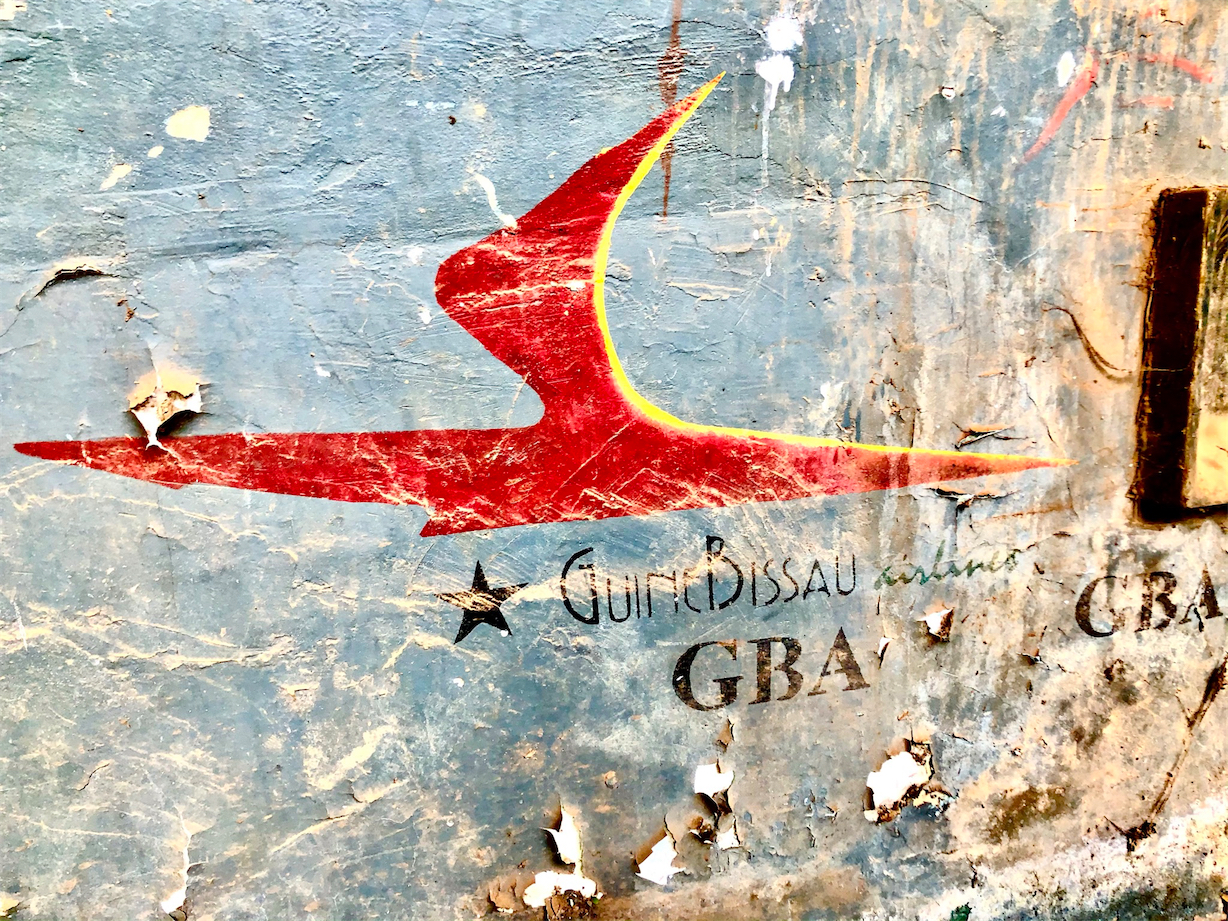
Até Mais (Until Next Time)
Of all the countries to be “stuck” in for a few days on this itinerary, I’m glad it was Guinea Bissau. The old buildings were hauntingly sexy and the people were friendly and approachable. I’d leave with my shoes and pant legs coated in red dust from the roads. I walked for miles. Exploring the city every day was like taking a trip back in time. I can’t count the number of curious looks I received from locals probably wondering why I was drooling over structures that seemed perfectly normal to them. To me, every street was magic. I’d always dreamt of having a time machine – this would be the closest thing to it, and I relished every moment. There was still so much of the country to see. Perhaps I will return.
>> RELATED: Where to Stay in Bissau – Compare and Contrast These Bissau Hotels
Planning to visit Guinea Bissau? There’s not much online, but I found one really cool and extensive website to help visitors discover the country. Check out Kalma Soul HERE. It’s chock full of great info to help you get the most out of your visit to Guinea Bissau!


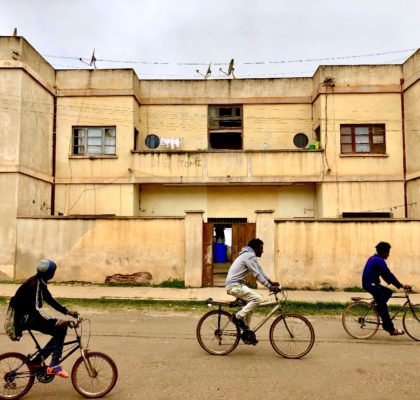

The mill on Ilha do Rei processed oil from cashew nuts, not olives.